
Audio derivations of English words from Proto-Indo-European, and from Proto-Indo-European into selected "Eastern" languages
An Ancient Sounds Project
A record of social media posts, edited, corrected, and gathered together into one blog, in alphabetical order. The text is a little repetitive in places because every post needed to be intelligible by itself, and I sometimes wrote about a word on more than one occasion.
| Previous: Audio Etymological Lexicon |
Next: Phonetics and Phonology of Proto-Indo-European |
Albanian një is also descended from *h₁oinos, like this:
🔊 PIE-h1oinos-to-Albanian-nje.wav
English a also derives from Anglo-Saxon an and PIE *h₁oinos, by a different history via Middle English a, pronounced [ɑ:]:
🔊 stressed-a-from-PIE-h1oinos.wav
And one also comes from the same ancestor pronunciation:
So a, an and one are all related in sound.
Oct 12, 2021
In this video of a gradually changing spectrogram, Proto-Indo-European *oin- develops into Anglo-Saxon an (pronounced "aan"). The left-to-right upward-sweeping resonance (the second formant of [oi]) collapses, as [a:] has more energy in lower frequencies than [i] does:Apr 30, 2019
🔊 http://phon.ox.ac.uk/jcoleman/RP-acre-from-AS-aecer.mp3)
Jul 16, 2020
More on acre: Old English æcer comes from Proto-Germanic *akraz (here sounding more like [akroz] or [akros]), from Post-Proto-Indo-European *aĝros (from Proto-Indo-European *h₂eĝros). Audio simulations:🔊 (wav) http://phon.ox.ac.uk/jcoleman/RP-acre-from-PostPIE-agros.wav
🔊 (mp3) http://phon.ox.ac.uk/jcoleman/RP-acre-from-PostPIE-agros.mp3
Jul 21, 2020
Sanskrit अज्र ajra came from Proto-Indo-European *h₂eǵros something like:
🔊 PostPIE-agros-to-Skt-ajra.wav and then developed into Hindi अज्र ajira
🔊 Sanskrit-ajra-to-Hindi-ajira.wav
Oct 6, 2021

Image: a broad, green field, with a few trees in the background. From a Greek website offering interpretations of dreams. The heading, in Greek, reads "agros", meaning field. Source: https://www.oneirokritis.net/ermineia-oneirwn/4-1/254-agros
Listen: 🔊 after-from-PIE-h2eptero.mp3
A related form, *h₂ep-er-, without a [t], gave rise to Sanskrit अपर ápara: 🔊 PIE-h2eptero-to-Sanskrit-apara.mp3
Oct 7, 2021
(See "ghastly", below.)
The same ancestral pronunciation also developed into Sanskrit अरण्य aranya "forest, wilderness":
🔊 PIE-h2eln-to-Sanskrit-aranya.wav
Mar 21, 2022

YouTube image for Me Aranya (In the Forest), reading of a poem by Sarojini Naidu. Source: https://www.youtube.com/watch?v=C_yHjjbEXTQ
🔊 PIE-h1esmi-to-Sanskrit-asmi.wav
Other forms of "to be" also descend from the same stem, Proto-Indo-European *h₁es-, with different suffixes. For example, is comes from *h₁es-ti.
Oct 11, 2021
English angle (to fish) comes from a suffixed form of the Proto-Indo-European stem *h₂enk-, perhaps pronounced [ħaŋk-], meaning a curve or hook. Here's a simulation (listen):
The same stem is the ancestor of Ossetian æнгуыр [æŋgwɨr]:
🔊 PIE-h2enk-to-Ossetian-aengur.wav
Proto-Indo-European *h₂enk- also developed into Sanskrit अङ्क áṅka, possibly something like this:
🔊 PIE-h2enk-to-Sanskrit-anka.wav
Oct 14, 2021
For the origins of the name of the historical people, the Angles, see "English", below.
In Persian it developed into انگشت angusht, "digit" i.e. finger or toe:
🔊 PIE-h2eng-to-Persian-angusht.wav
Oct 15, 2021
The verb swear comes from Anglo-Saxon swerian, from the same Proto-Germanic and Proto-Indo-European ancestors. Listen:
Another form of Proto-Indo-European *suor- is *suer-. The initial *s- is a prefix; the unprefixed form *uer- (*wer-) is the ancestor of English word, the first part of Latin verbum, Russian врать [vratʲ], Sanskrit व्रत vrata, etc. But those simulations are for another day.
Not everyone (e.g. @KroonenGuus, whose etymological dictionary I respect and generally try to follow) agrees that word and swear have a common etymology, so ...Feb 4, 2022
In quite a few Slavic languages, the /l/ became vowel-like and merged with the preceding vowel, as in e.g. Bosnian jabuka:
🔊 jabolko-to-Bosnian-jabuka.wav
Phoneticians call this "l-vocalization", but I've heard it described informally as "swallowing your l's".
Oct 19, 2021

Advertising image for Crvena Jabuka Market, a Bosnian supermarket chain, from https://crvena-jabuka.ba/akcije/
🔊 PIE-h2ermos-to-Sanskrit-irma.wav
Oct 20, 2021
Khaki is a loan from Urdu خاکی xākī, a loan
from Persian, from خاک xâk "earth", from
Proto-Indo-European *h₂eh₂s [ħaχs], something
like this (listen):
🔊 khaki-from-PIE-h2eh2s.wav
English ash (grey-coloured burnt substance) also
descends from *h₂eh₂s:
🔊 ash-from-PIE-h2eh2s.wav
*h₂ usually develops into [a], but in Iranian it's sometimes [x].

Light brown, clay soil. The caption at the top, in Persian script,
reads khake ros, meaning "clay soil". From an Iranian business
website, https://venonwood.biz
Jun 26, 2023
🔊 PIE-h3esk-to-Armenian-hach.wav
Oct 21, 2021

Armenian հաճարի hachari, from https://www.encyclopedia.am/pages.php?hId=413
The same stem developed into Hindi इच्छा ichaa, perhaps like this:
🔊 PIE-aisko-to-Hindi-icchaa.wav
Oct 25, 2021
The etymology of bade is tricky. Kroonen traces bid to Proto-Indo-European *bʰedʰ-ie-, but bade is the past tense so the vowel would be [o], i.e. *bʰodʰ-. The recording used here is [bodh], listen:
Other philologists, e.g. Ringe, trace bid to Proto-Indo-European *gʷʰedʰ-, "to ask for". From *gʷʰedʰ- we can generate Lithuanian gedi and Bosnian-Croatian-Serbian žedan "crave", like this:Some people pronounce bade like "bad", and others like "bayed" (a more recent development, arising from the Great Vowel Shift). The two ways they go back to Proto-Indo-European are:
1) "bad" 🔊 bad-from-PIE-bhodh.wav
2) "bayed" 🔊 bade-from-PIE-bhodh.wav
Oct 27, 2021
The (Northern) English and Scots word bairn comes from Proto-Indo-European *bʰor-no- (a form of bʰer-, the "o-grade"). Ignoring the -no suffix, perhaps something like this (listen):
The same Proto-Indo-European root developed into Sanskrit भरण bharana, perhaps something like this:🔊 PIE-bhor-to-Sanskrit-bharaNa.wav
(See also "bear", below)
Nov 1, 2021
English barrow, i.e. burial mound, comes via Proto-Germanic *berga from Proto-Indo-European ancestor *bʰerǵʰ-os.
🔊 https://www.ancientsounds.net/eastern-origins/barrow-from-PIE-bherghos.wav
The root *bʰerǵʰ- also developed into Persian برج borj “tower”
🔊 https://www.ancientsounds.net/eastern-origins/PIE-bhergh-to-Persian-borj.wav
Kurdish برج berdz (Kurmani birc), Balochi برز ئه borza “height”, English
"borough", and Arabic برج burj “tower” are also from *bʰerǵʰ-
🔊 PGmc-berga-to-Balochi-borza.wav
 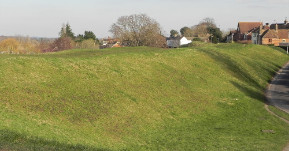 |
 |
| Above: Sarmatian Kurgan (burial mound). Cropped from public
domain image from Wikimedia Commons Below: The "walls" (protective earth banks) at Wareham, Dorset, a Saxon "burh" or borough. |
The Burj Khalifa tower, a huge steel skyscraper. By
Donaldytong, from Wikipedia, CC BY-SA 3.0 |
Nov 2, 2021; Jan 17, 2024
🔊 PIE-bhuh2-to-Persian-buudan.wav
Nov 3, 2021
See also separate entries for am, is.
The English verb bear comes from Proto-Indo-European *bʰer-. Apart from the change from [bʱ] to [b], bear has changed rather little in several thousand years. Listen:
Initial [bʱ] is found in Sanskrit and some of its daughter languages, e.g. Sanskrit भरति bharati, or Hindi भर bhar, so that gives us data about the sound of [bʱ]. Listen:
In Persian بار [bar], the initial aspiration has gone: 🔊 Persian-bar-F.wav
Oct 28, 2021
Grimm's Law: The initial [b] in English "(to) bear" comes from a voiced aspirate [bʱ] in Proto-Indo-European *bʰer(e/o)-, like this:
🔊 http://phon.ox.ac.uk/jcoleman/PIE-bher-to-Eng-bear.wav
MP3 version: 🔊 http://phon.ox.ac.uk/jcoleman/PIE-bher-to-Eng-bear.mp3
Sanskrit bhar- retains the initial [bʱ]:
🔊 http://phon.ox.ac.uk/jcoleman/PIE-bher-to-Skt-bhar.wav (based on recording of Suhas Mahesh saying bharati)
MP3 version: 🔊 http://phon.ox.ac.uk/jcoleman/PIE-bher-to-Skt-bhar.mp3
Dec 6, 2017English bear (the verb, i.e. to bear) comes from Proto-Indo-European *bʰer-, so it hasn't changed all that much in over 4000 years. Listen:
(This simulation lacks a final [r], because reasons.) It didn't change a lot in its development into Sanskrit भर bhar either:
In Persian, as in English and other Germanic languages, [bʱ] developed into [b], so in Persian it's بار bar.
Nov 4, 2021
Simulating voiced aspirates can be quite challenging, as I rely on recordings from Spoken Sanskrit or e.g. Hindi to cook with.
Nov 5, 2021
The same PIE root developed into Persian بالش bālish "pillow", like this:
🔊 PIE-bholgh-to-Persian-balesh.wav Also Pashto بالښت balacht, Ossetian baʒ/baz, Slovenian blazina, Albanian bark.
English bid has two etymologies, depending on sense: 1. ask, i.e. bid somebody do something (see the post on “bade”, above) vs. 2. to announce, e.g. an auction bid. Bid2 comes from Anglo Saxon beodan and Proto-Indo-European *bʰeudʰ-, sort of like this:
🔊 bid-from-PIE-bheudh.wav🔊 PIE-bheudh-to-Sanskrit-buddha.wav
Nov 12, 2021
Bid2 also lies behind "bode" (as in "that bodes well") and "foreboding" (said of something that doesn't bode well).
*bʰéndʰ- also developed into Persian بند band, perhaps like this:
🔊 PIE-bhendh-to-Persian-band.wav
Nov 18, 2021
Birch comes from Proto-Indo-European *bʰerh₁ǵ-eh₂-,
like this (listen):
🔊 https://www.ancientsounds.net/eastern-origins/birch-from-PIE-bherh1g.wav
*bʰerh₁ǵ-eh₂- also developed into Lithuanian beržas:
🔊 https://www.ancientsounds.net/eastern-origins/PIE-bherh1g-to-Lithuanian-berZas.wav
and Bosnian, Croatian, Montenegrin and Serbian breza:
🔊 https://www.ancientsounds.net/eastern-origins/PIE-bherh1g-to-BCMS-breza.wav
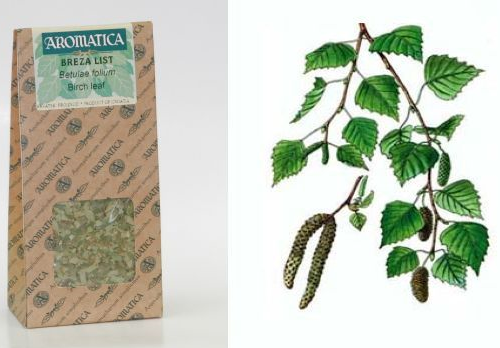
A packet of birch leaves (breza list in Bosnian, Croatian,
Montenegrin and Serbian), from an online shop
https://www.aromatica.hr/kategorije-proizvoda/vase-zdravlje/ljekovito-bilje/breza-list-30-g-betulae-folium-list/
Apr 08, 2024
English bite comes from Proto-Indo-European *bʰéid-, perhaps something like this (listen):
🔊 PIE-bheid-to-Sanskrit-bhid.wav
and in Ancient Greek φείδομαι pheid(omai):
🔊 PIE-bheid-to-AncientGreek-pheidomai.wav
Nov 23, 2021
🔊 https://www.ancientsounds.net/eastern-origins/black-from-PIE-bhleg.wav
*bʰleg- may be related to *bʰleiǵ- “shiny”, the root of “bleach”:
Consequently, *bʰleg- might also have meant something like “shiny” rather than black, perhaps because lots of dark black things in nature are also shiny, e.g. dark lakes, crows' feathers, obsidian etc. Alternatively, the connection might be that
The Anglo-Saxon for both black and bleach is blæc, possibly homophones or possibly with two distinct pronunciations, [blæk] vs. [blæ:tʃ].
*bʰleiǵ- is also the ancestor of Sanskrit भ्रज bhraj(ati) “fire, shining, burning”:
Magnus Pharao (@MagnusPharao) commented on Twitter: In Danish we have the roots in bleg "pale" and blæk "ink".
English bleat comes from the apparently onomatopoeic (onomatopoetic?) Proto-Indo-European ancestor *bʰleh₁-. Because I couldn't find cognates or similar words in modern S. Asian languages, this simulation lacks the aspiration of *bʰ, but anyway:
🔊 bleat-from-PIE-bhleh1.wav🔊 PIE-bhleh1-to-Bosnian-brblijati.wav
🔊 PIE-bhleh3-to-Bengali-phul.wav
Dec 7, 2021
🔊 PIE-bhrHeh2-to-Sanskrit-bharati.wav
Dec 9, 2021
(i.e. [bʰr̩hɐ])
🔊 PIE-bhudh-to-Persian-bun.wav
Dec 10, 2021
A bough is an "arm" of a tree, and the Persian word بازو bazu means "arm".
In June 2021, @yakabikaj posted this interesting tweet about how it has spread from Persian to quite a few other languages, with the meaning "shirt":
Dec 13, 2021
Jan 4, 2022
🔊 PIE-bhrsti-to-Sanskrit-bhrshti.wav
Jan 5, 2022
*bʰréh₂tēr also developed into Sanskrit भ्राता bhraata:
🔊 https://www.ancientsounds.net/PIE-bhrater-to-Hindi-bhraata.wav
Persian برادر barodar:
🔊 https://www.ancientsounds.net/PIE-bhrater-to-Persian-barodar.wav
and related forms in most other Indo-European languages.
Sep 27, 2023
I'm not strongly convinced that the initial *h₃ was a contoid. It seems equally plausible to me that it was a kind of vocoid (see https://dx.doi.org/10.1075/dia.17.2.04rey), but this is not the majority opinion, and I'm trying not to deviate too far from the mainstream view here.
🔊 PIE-gols-to-Bosnian-glas.wav
(Phonologists: note acoustic, gradual metathesis, without segments.)
Jan 10, 2022
English can (= be able to) comes from the [gn] part of the Proto-Indo-European word *ǵnéh₃-, pronounced something like [g̟neŏ]. Listen:
*ǵn is also the origin of the [gn] in "cognitive", "cognition", and of [kn] in older pronunciations of "know".The same root *ǵnéh₃- developed into Urdu جاننا jaanna:
🔊 PIE-gneh3-to-Urdu-jaannaa.wav
and Lithuanian žinau:
🔊 PIE-gneh3-to-Lithuanian-Zinau.wav
and as [zn...] in many words for "know", "knowledge" etc in Slavonic languages (Russian, Polish, etc), e.g. Bosnian znam "I know".How could Proto-Indo-European *ĝ develop into e.g. [dʒ], [ʒ], and [z], as in *ĝneh₃- "know" > Sanskrit जानाति jānāti, Lithuanian žinau, Russian знаю [znaju]? Assuming *h₃ was something like [ŏ], here's a simulation of [ɟnɛŏ] > [džnaʊ] > Lithuanian žinau:
🔊 http://phon.ox.ac.uk/jcoleman/PIE-gneh3-to-Lithuanian-Zinau.mp3
Apr 28, 2020
English carve comes from Proto-Indo-European *gerbʰ-, perhaps like this (listen):
In Albanian, the same root developed into (the gërv- part of) gërvisht, meaning "to scratch or scrape". Listen:
🔊 PIE-gerbh-to-Albanian-gervisht.wav
Jan 24, 2022
Jan 31, 2022
Feb 1, 2022
English cold comes from Proto-Indo-European *ǵól-to-, something like this (ignoring the final /o/, listen):
🔊 https://www.ancientsounds.net/eastern-origins/cold-from-PIE-golt.wav
*ǵól-to is a form of *ḱel-to-, which developed into
Persian سرد sard:
🔊 https://www.ancientsounds.net/eastern-origins/PIE-kelt-to-Persian-sard.wav
Persian سرد sard was borrowed into Urdu سرد serd:
🔊 https://www.ancientsounds.net/eastern-origins/Persian-sard-to-Urdu-serd.wav
*ǵól-to also developed into Bosnian, Croatian, Montenegrin and
Serbian hlad “shade”:
🔊 https://www.ancientsounds.net/eastern-origins/PIE-kelt-to-BCMS-hlad.wav
and Lithuanian šaltas:
🔊 https://www.ancientsounds.net/eastern-origins/PIE-kelt-to-Lithuanian-Saltas.wav
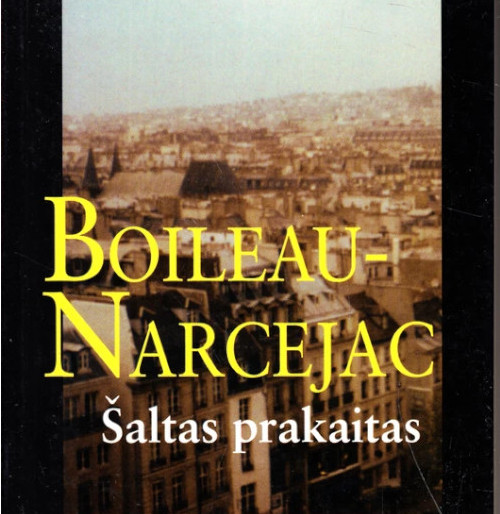
Detail from the cover of a detective novel by Boileau-Narcejac
entitled "Šaltas prakaitas", which means "cold sweat" in Lithuanian. The
image depicts a misty view over the rooftops of a European city with a
grey wintry sky. From bookseller site
https://www.knygos.lt/lt/knygos/saltas-prakaitas-vpsf/
Feb 2, 2022; May 22, 204
English come is descended from Proto-Indo-European *gʷem-, something like this (listen):
The same ancestral word developed into Sanskrit gam-, the root of गमति gamati, perhaps like this:
🔊 PIE-gwem-to-Sanskrit-gamati.wav
Feb 14, 2022
English corn comes from Proto-Indo-European *ǵrh₂nó- [grɐno], perhaps something like this (listen):
The same ancestral word became जीर्ण jiirna in Sanskrit, perhaps like this:
🔊 PIE-grh2no-to-Sanskrit-jirna.wav
and also became zrn in Czech:
(and зерна [zerna] in Ukrainian)Mar 7, 2022
(Revisited with further examples on Nov 28, 2023)
Corn comes from *ǵr̥h₂nó- [grɐno]
"grain"
🔊 https://www.ancientsounds.net/corn-from-PIE-grh2no.wav
"Satemization" is the process by which PIE *ǵ, *ḱ i.e.
[g̟ʲ], [k̟ʲ] became affricates [ʤ], [ʧ], then fricatives [ʃ], [ʒ],
sometimes [s], [z].
*ǵr̥h₂nó- developed into Sanskrit जीर्ण jiirna,
with [ʤ]
🔊 https://www.ancientsounds.net/Sanskrit-jirna.wav
Lithuanian žirnis “pea”, [ʒ]
🔊 https://www.ancientsounds.net/Lithuanian-Zirnis.wav
Latvian zirni, [z]
🔊 https://www.ancientsounds.net/Latvian-zirni.wav
The whole sequence:
🔊 https://www.ancientsounds.net/PIE-grh2no-to-Latvian-zirni.wav
NOTE: This is not to imply that Lithuanian developed out of Sanskrit, nor that Latvian developed out of Lithuanian - they didn't. But you can arrange these words in a sequence reflecting the process of "softening" of *ǵ to [ʤ] to [ʒ] to [z].
🔊 PIE-gwous-to-Ancient-Greek-bous.wav
Mar 8, 2022
Mar 9, 2022
🔊 PIE-gwet-to-Sanskrit-jatu.wav
Mar 10, 2022
Dolina is a widespread Slavic placename, e.g. the village of
Dolyna, NE of Melitopol, Zaporizhia, Ukraine. The Dol- part comes from
Proto-Indo-European *dʰol-, like this (listen):
🔊 https://ancientsounds.net/Dolyna-from-PIE-dhol.wav
The same root developed into English dale:
🔊 https://ancientsounds.net/PIE-dhol-to-dale.wav

Dolyna/Долина, in the valley ("dale") of the Molochna River, Zaporizhia Oblast, Ukraine. Image from Google Maps.
Oct 5, 2022
English dare comes from Proto-Indo-European *dʰors- perhaps something like this (listen):
🔊 dare-from-PIE-dhors.wavMar 11, 2022
The same ancestral word developed into Persian دختر dukhter:
🔊 PIE-dhugh2ter-to-Persian-dukhter.wav
Bulgarian дъщеря dushterya:
🔊 https://www.ancientsounds.net/eastern-origins/PIE-dhugh2ter-to-Bulgarian-dushterja.wav
Armenian դուստր duster:
🔊 https://www.ancientsounds.net/eastern-origins/PIE-dhugh2ter-to-Armenian-duster.wav
and related words in lots of other languages ...
Mar 14, 2022; May 24, 2024
Mar 15, 2022
Mar 16, 2022
Mar 18, 2022
Apr 25, 2022
Apr 28, 2022
🔊 PIE-dhoh1-to-Sanskrit-dhaa.wav
*dʰoh₁- was a form of *dʰeh₁-:
🔊 https://www.ancientsounds.net/eastern-origins/PIE-dhoh1-from-PIE-dheh1.wav
*dʰeh₁- also lies behind Bosnian nedjelja/Serbo-Croatian
nedelja “(a day of) not-doing i.e. Sunday; week”:
🔊 https://www.ancientsounds.net/eastern-origins/PIE-dheh1-to-BCMS-nedelja.wav
 |
| Banner for the Bosnian Catholic website Nedjelja.ba nestling in a Christmas tree. Source: https://www.nedjelja.ba/hr/redakcija-portala-nedjelja-ba-zeli-vam-cestit-i-blagoslovljen-bozic/3165 |
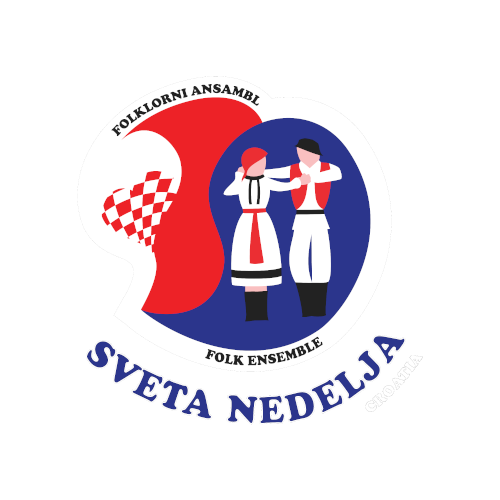 |
| Logo for the Croatian folk ensemble "Sveta Nedelja", literally meaning Holy Sunday, but also a Croatian village name and the name of an international folklore festival. Source: https://fa-svetanedelja.hr/povijest/ |
May 6, 2022; May 9, 2024
May 16, 2022
🔊 PIE-dhroughm-to-Persian-doroog.wav Lithuanian speakers may note that recordings of draugų, genitive plural of draugas, which also derive from *dʰrougʰ-, are used in the Proto-Indo-European simulation.
May 24, 2022
The dual form, *h₂ṓus-ih₁, developed into Persian هوش hoosh: 🔊 https://www.ancientsounds.net/PIE-h2ousih1-to-Persian-hush.wav
Proto-Indo-European *h₂eus "ear" also developed into the quite similar Lithuanian word ausis, perhaps something like this:
🔊 PIE-h2euses-to-Lithuanian-ausis.wav
May 25, 2022 [Corrected on 19/7/2023 to remove incorrect reference to Persian گوش guush, which is from a different root.]
English earth comes from Proto-Indo-European *h₁ér-t-, perhaps something like this (listen):
The same root developed into Zazaki her:
Zazaki is an Iranian language spoken in Turkey.
Jun 6, 2022
Martin J. Kümmel (@MJKue) commented:
Is the Zazaki word not borrowed from Arabic ʾarḍ, like Kurdish erd, eʾrd? It has variants with -d and without ḥ- This is Tsabolov's etymology for the Kurdish word, but I could not check other sources
Chyet (2003) Kurdish-English Dictionary suggests an Old Iranian etymology, xard, with Kurdish 'erd as a loan from Arabic. But I'm unsure if Old Iranian xard is from PIE *h₁er-, so my simulation is still somewhat doubtful.
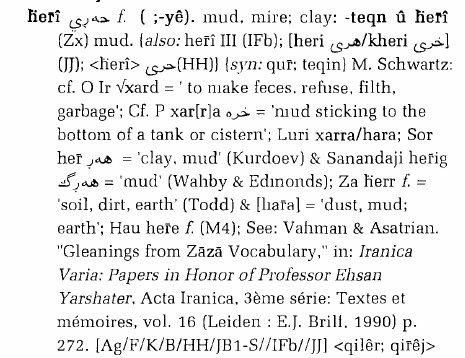
Jun 7, 2022
🔊 PIE-h2us-to-Sanskrit-ushas.wav
Armenian ուտել utel:
🔊 PIE-h1ed-to-Armenian-utel.wav
Bosnian jedem, and cognates:
🔊 PIE-h1ed-to-BCMS-jedem.wav
and Ancient Greek ἔδω [edo:]:
🔊 PIE-h1ed-to-AncientGreek-edo.wav
Jun 8, 2022; extended Nov 5, 2024
🔊 edge-from-PIE-h2ak.wav (Since *h₂ lowers [e] to [a], I think that it could have been [ħ], if it was a fricative at all. Still debatable.) The same root *h₂eḱ- [ħakʲ] developed into Persian آس aas, "mill, grinding", perhaps like this (listen):
Jun 10, 2022
The same root developed into Persian خایه haye:
🔊 PIE-h2ouio-to-Persian-haye.wav
Jun 13, 2022
A Proto-Indo-European laryngeal surviving in Persian? The modern Persian word for egg, خایه haye [xaje], descends from Proto-Indo-European *h₂ōu-ió-. Other Indo-Iranian languages (Pashto, Balochi, Kurdish ...) also retain an initial [x] or [h] to this day.
Jan 21, 2022
Eight came from Proto-Indo-European h₂oḱtṓu, via changes something like this:
The same root developed into Tajik ҳашт hasht (= Persian هشت)
🔊 PIE-oktou-to-Tajik-hasht.wav Tajik is an Iranian language.
Jun 14, 2022
*h₂éug- also developed into Latvian augt “grow”:
Lithuanian aukštas “high, tall”:
🔊 PIE-h2eug-to-Lithuanian-aukStas.wav
Latin Augustus “increased, elevated, honored”:
🔊 PIE-h2eug-to-Latin-Augustus.wav
*h₂éug- is related to the root *h₂uég-, "to wax, increase" (see below). For example, *h₂uég- developed into Persian وخش vakhsh "to wax, increase":

Coin of the Roman Emperor Diocletian, "Diocletianus Augustus". From
Wikimedia Commons
Jun 15, 2022; corrected and augmented with additional examples July 20, 2023
🔊 elbow-from-PIE-Heh3leneh2.wav
The same word developed into Persian ارنج arenj:
🔊 PIE-Heh3leneh2-to-Persian-arendZ.wav
Jun 16, 2022
English else comes from Proto-Indo-European *h₂él-io-s, [alios] (perhaps earlier [ħalios]). Listen:
The same root *h₂él- developed into Armenian այլ ayl "other, also, but":
🔊 PIE-h2elios-to-Armenian-ayl.wav
Jun 17, 2022
English empty - the "mpt" part, in particular - comes from Proto-Indo-European *méd-e-, "measure", perhaps something like this (listen):
The intrusive [p] arises from a slip in timing of nasality, lip opening and voicing of [m].
The same root *méd-e- developed into Armenian միտք mitk’, “thought”, something like this:
🔊 PIE-mede-to-Armenian-mitk.wav
Jun 21, 2022, updated Apr 13, 2023 (see mete)
Ukrainian and other Slavic languages are often seen as different from "Western" European languages. But Ukrainian, English, and most other European languages are related to each other by descent from a common ancestor language, Proto-Indo-European. For example, the Ukrainian word for "narrow", вузький [wʊzʲkɪi̯], comes from Proto-Indo-European *h₂enǵʰ-u-, pronounced something like [ħaŋg̟ʱu]. Listen: 🔊 English-from-PIE-h2emghu.wav. The same Proto-Indo-European root also lies behind Angle, the name of the ancestral speakers of English: 🔊 Angel-from-PIE-h2emghu.wav. In short, the word English and Ukrainian вузький [wuzkii] "narrow", are related, like this: 🔊 English-to-Ukrainian-wuzkii.wav
Feb 24, 2022
The "engl-" part of English comes from Proto-Indo-European *h₂emǵʰ-u-, meaning "narrow" and perhaps pronounced something like [ħaŋgʱu] (listen):🔊 English-from-PIE-h2emghu.wav
The same root developed into Bosnian-Croatian-Serbian uzak:Jun 23, 2022
*h₂enǵʰ-u- also descends to English in the first syllable of hangnail (Old English angnæġl "tight/painful nail"), the initial [h] being added by folk-etymological reanalysis as hang-nail.
Jun 27, 2022
Jun 28, 2022
/ˈadam kɔwɔˈd͡ʑɛjt͡ʂɨk/ @SoobPL commented: In Polish, it's owca /ˈɔf.t͡sa/. Maybe not so similar now, but it has the same root
Another attempt at *h₃:
Ewe (female sheep) comes from Proto-Indo-European *h₃éu-i-s.
I previously simulated that as [ħʷo:is], with a labialized voiceless
pharyngeal fricative:
🔊 ewe-from-PIE-h3owis.wav
But there's evidence that *h₃ was voiced, therefore [ʕo:is]:
🔊 https://www.ancientsounds.net/ewe-from-PIE-3owis.wav
This new simulation's a hybrid based on South Levantine Arabic عوّى [ʕaw:a].
More at https://www.ancientsounds.net/laryngeals.html#h3euis
Sep 26, 2023
Jun 29, 2022
Jun 30, 2022
(See also ford)
English fare - to travel, as in "farewell" - comes from Proto-Indo-European *pór-e-, perhaps like this (listen):Jul 1, 2022
Jul 4, 2022
The perde- part of perdelis is almost unchanged since Proto-Indo-European.
Jul 5, 2022
🔊 PIE-ph2ter-to-Persian-pedar.wav
An example of “lambdacism” in Pashto is heard in the development of
Persian pedar to Pashto پلار [plar]:
🔊 https://www.ancientsounds.net/eastern-origins/Persian-pedar-to-Pashto-plar.wav
Jul 8, 2022; May 16, 2024
The same root developed into Armenian փետուր petur, which is not hugely changed:
🔊 PIE-peth2r-to-Armenian-petur.wav
Jul 18, 2022
Cf. also pecu- in Latin pecuniary.
Jul 20, 2022
English "fern" comes from Proto-Indo-European *pornom, from *perH,
*pterH (the same root as in Greek pter-, "wing"):
🔊 fern-from-PIE-pornom.wav
The same root developed into Persian پر per "feather, wing":
🔊 PIE-pterH-to-Persian-per.wav
Fern leaves do look like feathers, don't they?

Fern/feather/wing clip art. Source: https://webstockreview.net/images/fern-clipart-sliver-18.png
Aug 22, 2022
English "few" comes from Proto-Indo-European *ph₂u-
[pau] "few, small":
🔊 https://ancientsounds.net/few-from-PIE-ph2u.wav
The same root developed into Urdu پُوت puut "son":
🔊 https://ancientsounds.net/PIE-ph2u-to-Urdu-puut.wav
Aug 24, 2022
Another form of the same root, *plth₂- [pl̩tɐ], developed into Sanskrit पृथु prthu "broad, wide":
🔊 PIE-plth2-to-Sanskrit-pRthu.wav
Aug 25, 2022
Revisiting these etymologies from August: some propose *pelh₂-
as the Proto-Indo-European root behind field. Its
derived ("o-grade") form *polh₂- developed into Proto-Slavic *polʲe,
in e.g. Polish pole, like this (listen):
🔊 https://ancientsounds.net/PIE-pelh2-to-Polish-pole.wav
The names "Pole, Polish, Poland" come from this root: Polaks were the
"field-dwellers". This "field" word is found widely across Slavic
languages, with small variations in pronunciation, e.g.
Bosnian-Croatian-Serbian-Slovenian polje. Listen:
🔊 https://ancientsounds.net/PIE-pelh2-to-BCS-polje.wav
Oct 6, 2022
Aug 30, 2022
English fierce is from Middle English fers, from Latin fer-us, from Proto-Indo-European *ĝhwēr-. Something like this:
Important acknowledgements: thanks to Welsh for giving us gwers ("a lesson" - similar in sound but not related in meaning to PIE *ĝhwēr) and Lithuanian žvėr-is "beast".
Dec 11, 2017
From the same root, *poḱ-(s-mn̥) developed into Persian پشم pashm "wool":
🔊 https://ancientsounds.net/PIE-pok-to-Persian-pashm.wav
Cf. "Pashmina", a loan word from Persian.

Image from Farsi Wikipedia, CC BY-SA 4.0
Aug 31, 2022
🔊 https://ancientsounds.net/PIE-peln-to-Bosnian-pelena.wav

🔊 https://ancientsounds.net/PIE-pente-to-Sanskrit-panthaaso.wav
Sep 9, 2022
Same root also re-borrowed from an Iranian language into proto-Germanic after Germanic p > f, whence "path"!!
English fire comes from Proto-Indo-European *péh₂‐ur
[pa(ħ)ur], something like this (listen):
🔊 https://ancientsounds.net/fire-from-PIE-pahur.wav
The same root developed into Balochi پُر phor "ashes, flames":
🔊 https://ancientsounds.net/PIE-pahur-to-Balochi-phor.wav
(and Ancient Greek πῦρ [pyr], Latin pyra, pyre, pyro-,
etc.)
In Armenian, it comes out as հուր [hur]:
🔊 https://www.ancientsounds.net/eastern-origins/PIE-pahur-to-Armenian-hur.wav
Note that the [h] at the start of this word developed from Proto-Indo-European *p, not from the medial *h₂, so this is not a case of a preserved "laryngeal".

Two hands with outstretched index fingers that touch at their fingertips. The hand on the left appears to be made of fire. The caption below, in Armenian script, reads "hur ev jur", meaning "fire and water". Source: https://hoonch.am/post/grakanutyun/hay-grakanutyun/hur-ev-jur
Sep 12, 2022; May 20, 2024
The "fir-" part of English first comes from
Proto-Indo-European *preh₂-, perhaps pronounced [pʰreɐ] or
earlier [pʰreħ] (listen):
🔊 https://ancientsounds.net/first-from-PIE-preh2.wav
The same root developed into Hindi प्रथम pratham (via Sanskrit),
which also means "first":
🔊 https://ancientsounds.net/PIE-preh2-to-Hindi-pratham.wav
J Pystynen (@JLingPystynen) commented:
I don't think there's any evidence that there ever was an [e] in *eh₂;
a-coloring is PIE already, & it seems likely that /eh₂/ → [ah₂] is at
least in part really a rule inversion of pre-PIE *ă > PIE *e.
Cf. e.g. Early Modern English †a > (w)ɔ, ɔ(l), else æ (and not æ >
ɔ).
To which I replied:
I agree. I argued in Diachronica XVII, 351‒387 that PIE 'laryngeals' were vocalic. But I recognise that is a non-standard view, so in this project I'm going with "standard" laryngeal theory (/e/ gets colored by a following fricative in early PIE), and we'll see where it takes us.
As a breakfast experiment, I modelled PIE
*/preh₂/ as [pra], and simulated the development of Proto-Germanic *fura
from this *[pra]. The continuum from "first" back to PIE *[pra] then
sounds like this:
🔊 https://ancientsounds.net/first-from-PIE-pra.wav
The "fir-" stem occurs in another guise in "former", from
Proto-Indo-European *prh₂-mó- [pʰrɐmo]:
🔊 https://ancientsounds.net/former-from-PIE-prh2mo.wav
The same root developed into Lithuanian pirmo:
🔊 https://ancientsounds.net/PIE-prh2mo-to-Lithuanian-pirmo.wav
Lithuanian pirmadienis, Monday, is "first-day". We will
get to "Tuesday" later ...
Sep 13, 2022
English five comes from
Proto-Indo-European *penkwe, something like this (listen):
🔊 https://ancientsounds.net/five-from-PIE-penkwe.wav
The same root developed into e.g. Urdu پانچ panch:
🔊 https://ancientsounds.net/PIE-penkwe-to-Urdu-panch.wav
Sep 15, 2022
At https://www.ancientsounds.net/#five
I've just added a bunch of simulations showing how five
is related to Proto-Indo-Iranian and Sanskrit पञ्च pancha, from
which come Urdu پانچ panch (borrowed into English “punch”, a
drink made of 5 ingredients), Balochi پنچ panch, Punjabi ਪੰਜ panj
(as in ਪੰਜਾਬ Punj ab “(land of) five rivers”), Persian
پنج panj, European Romani panzh, Ossetian фондз fondz
and Pashto پنځه pinza.
And Welsh pump, which is not Indo-Iranian obviously.
Dec 12, 2023
Click on the text or arrows on this map to hear how words for "five" derive from Proto-Indo-European *pénkʷe (and its variant form *pnkʷt) in various Indo-European languages, ancient and modern, East and West.
https://www.ancientsounds.net/clickmap/clickmap-five.html
Jan 05, 2024
English flat comes from Proto-Indo-European *plth₂-
[pl̩tɐ], something like this (listen):
🔊 https://ancientsounds.net/flat-from-PIE-plth2.wav
The same root developed into e.g. Sanskrit पृथु prthu "broad,
wide":
🔊 https://ancientsounds.net/PIE-plth2-to-Sanskrit-pRthu.wav
English field comes from the same Proto-Indo-European
root as "flat", but with a vowel (called "e grade" by philologists), *pelth₂-
pronounced something like [peltḁ] ~ [peltħ] (listen):
🔊 https://ancientsounds.net/field-from-PIE-pelth2.wav
Sep 15, 2022
English flax (from which linen is made) comes from
Proto-Indo-European *pleḱ -t-, "to weave", something like this:
🔊 https://ancientsounds.net/flax-from-PIE-plekt.wav
From the same root *pleḱ - developed Sanskrit प्रश्न prashna
"woven basket":
🔊 https://ancientsounds.net/PIE-plekt-to-Sanskrit-praSna.wav

Flower of flax, Linum usitatissimum, from https://commons.wikimedia.org/wiki/File:Linum_usitatissimum_bgiu.jpg
English "pleat" and "plait" come via French from the Latin form of this root, plecto.
Sep 20, 2022
English flow comes from Proto-Indo-European *plṓu-e-
(pronounced [pʰloʊə] not [pʰloʊe] in this simulation), something like
this:
🔊 https://ancientsounds.net/flow-from-PIE-ploue.wav
From the same root developed Sanskrit प्लवते plavate "dive":
🔊 https://ancientsounds.net/PIE-ploue-to-Sanskrit-plavate.wav
Strikingly similar to Sanskrit प्लवते plavate, the same PIE
root *plṓu-e- developed into Ukrainian плавати plavati
"float, swim":
🔊 https://ancientsounds.net/PIE-ploue-to-Ukrainian-plavati.wav
and similar words in other Slavonic languages, e.g. Slovene plavati.
Sep 21, 2022
(Thanks to Madhav Deval, @madhav_deval on Twitter, for correcting the Devanagari spelling of प्लवते plavate.)
Fodder comes from Proto-Indo-European *peh₂-,
pronounced something like [peħ, peɑ̥]:
🔊 https://ancientsounds.net/fodder-from-PIE-peh2.wav
Persian پاییدن payidan "protect, watch over" developed from the same root:
🔊 food-from-PIE-peh2.wav
Food also comes from same Proto-Indo-European root *peh₂-,
something like this:
🔊 https://ancientsounds.net/food-from-PIE-peh2.wav
Sep 22, 2022
English foe comes from Proto-Indo-European *poiḱ-,
something like this:
🔊 https://ancientsounds.net/foe-from-PIE-poik.wav
A derived form (“zero grade", lacking the main vowel *o) of the same root,
i.e. *piḱ-, developed into the pish- part of Sanskrit
पिशुन pishuna “evil”:
🔊 https://ancientsounds.net/PIE-pik-to-Sanskrit-piSuna.wav
and Lithuanian piktas “angry, fierce”:
🔊 https://www.ancientsounds.net/eastern-origins/PIE-pik-to-Lithuanian-piktas.wav
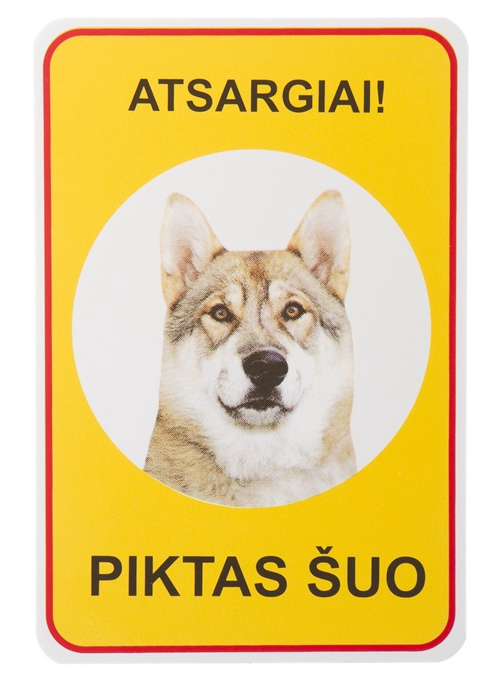
Sign depicting a guard dog, with text in Lithuanian meaning "Caution, fierce dog". From an Lithuanian online store, ksd-images.lt
Lithuanian šuo “dog” is cognate with hound:
🔊 https://www.ancientsounds.net/eastern-origins/Lithuanian-Suo-to-hound.wav
Sep 26, 2022; May 13, 2024
English foot comes from Proto-Indo-European *pōd-,
something like this:
🔊 https://ancientsounds.net/foot-from-PIE-pod.wav
The same root developed into Sanskrit पद pad, now a “learnèd
word” in Hindi:
🔊 https://ancientsounds.net/PIE-pod-to-Hindi-pad.wav
In Balochi, it's پاد paad:
🔊 https://www.ancientsounds.net/eastern-origins/PIE-pod-to-Balochi-paad.wav
And in Pashto, it comes out as پل pal “footstep”, with *d developing into
[l] (“lambdacism”):
🔊 https://www.ancientsounds.net/eastern-origins/PIE-pod-to-Pashto-pal.wav

Logo of a Pashto Dictionary app: the icon bears the Pashto word pal.
Sep 29, 2022; May 16, 2024
(See also fare)
English ford comes from Proto-Indo-European *pr̥tu-
[pr̩tʰu], like this (omitting the final vowel):
🔊 https://ancientsounds.net/ford-from-PIE-prt.wav
The same root developed into Sanskrit पिपर्ति piparti, meaning
"bring over":
🔊 https://ancientsounds.net/PIE-prt-to-Sanskrit-piparti.wav
*pr̥t- also became Persian پل pul “bridge”. Here's a simulation of how *pr̥t-
developed into Urdu پل pul “bridge” (a loanword via Persian):
🔊 PIE-prt-to-Urdu-pul.wav
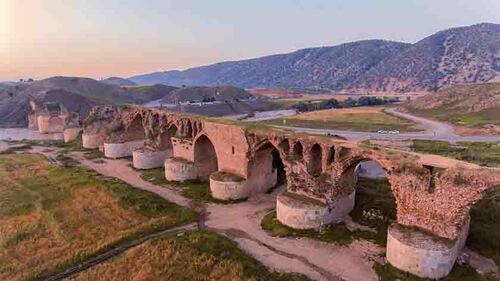
Oct 3, 2022
English four is from Proto-Indo-European *kʷetwóres, via Old English feower, Proto-Germanic *fidwor and Pre-Proto-Germanic *hwidwor. Listen: 🔊 http://phon.ox.ac.uk/jcoleman/four-from-PIE-kwetwores.mp3
(For an easier life, I ignore the -es ending until the very end.)Dec 6, 2018
English four comes from Proto-Indo-European *kʷetwṓr-,
like this:
🔊 https://ancientsounds.net/four-from-PIE-kwetwor.wav
The same root developed into Sanskrit चतुर् chatur:
🔊 https://ancientsounds.net/PIE-kwetwor-to-Sanskrit-chatur.wav
Ukrainian чоти́ри chotýry:
🔊 https://ancientsounds.net/PIE-kwetwor-to-Ukrainian-chotyry.wav
Persian چهار chahar:
🔊 PIE-kwetwor-to-Persian-chahar.wav

Image: "Four seasons", چهار فصل (chahar fasl), the Persian title of a novel by صبا ارسطو (Saba Aristotle). From https://www.ketabrah.ir/%DA%A9%D8%AA%D8%A7%D8%A8-%DA%86%D9%87%D8%A7%D8%B1-%D9%81%D8%B5%D9%84/book/43818
Oct 3, 2022
English friend comes from Proto-Indo-European *priH-eh₂-,
pronounced perhaps [pʰri:a:], like this (listen):
🔊 https://ancientsounds.net/friend-from-PIE-priHeh2.wav
The same root developed into Kurdish ئافراندن afrandin meaning
"create, creation":
🔊 https://ancientsounds.net/PIE-priHeh2-to-Kurdish-afirandin.wav
In the middle of the PIE-to-Kurdish simulation you can hear the derived
form *priH-né-, which is also manifest in Sanskrit प्रीणाति priiṇaati
"to please" (listen):
🔊 https://ancientsounds.net/PIE-priHeh2-to-Sanskrit-priiNaati.wav
Oct 4, 2022
@ltmpph commented:
Polish 'przyjaciel' (< Proto-Slavik '*prijà- + -teľь'), "close friend".
@DerMenschensohn commented:
عفريت
[I.e. Arabic عفريت /ʕifriːt/, a supernatural being (goblin, devil) from Arabian folklore, the name of which is borrowed from a Middle Iranian past participle āfrīd “created”, according to Wiktionary https://en.wiktionary.org/wiki/%D8%B9%D9%81%D8%B1%D9%8A%D8%AA#Etymology]
English full comes from Proto-Indo-European *plh₁-nó-
(here pronounced as [pl̩n-], without the final *o), like this:
🔊 https://ancientsounds.net/full-from-PIE-plh1n.wav
The same root developed into Persian پر [pur]:
🔊 https://ancientsounds.net/PIE-plh1n-to-Persian-pur.wav
as in شکم پر shekampur "filled".

Stuffed pickled eggplant/aubergine ترشی بادمجان شکم پر, (torshi bademjan shekampor), from Persian cookery site https://mschef.ir/%D8%B7%D8%B1%D8%B2-%D8%AA%D9%87%DB%8C%D9%87-%D8%AA%D8%B1%D8%B4%DB%8C-%D8%A8%D8%A7%D8%AF%D9%85%D8%AC%D8%A7%D9%86-%D8%B4%DA%A9%D9%85-%D9%BE%D8%B1
The nasal of Proto-Indo-European *plh₁-nó- is preserved
in Sanskrit पृणाति prnaati "fill", as in this example:
🔊 https://ancientsounds.net/PIE-plh1n-to-Sanskrit-prnaati.wav
Oct 7, 2022
Andreas Schätti @AndreasSchatti asked:
Does Russian полно also derive from this root?
Yes. Also Bosnian-Croatian-Serbian pun, in which the historical development of [u] from earlier *ol has an exact parallel in French (cf. fou vs. folle).
English goose and gander come from
Proto-Indo-European *ǵʰh₂ens [gʱɐns],
like this:
🔊 https://ancientsounds.net/gander-from-PIE-ghans.wav
🔊 https://ancientsounds.net/Eng-goose-from-PIE-ghans.wav
The same word *ǵʰans developed into Urdu ہنس [hans]:
🔊 https://ancientsounds.net/PIE-ghans-to-Urdu-hans.wav
🔊 https://www.ancientsounds.net/geese-from-PIE-ghans.wav
Gos(ling) comes from the Anglo-Saxon singular gōs [go:s],
also from *ǵʰh₂ens:
🔊 https://www.ancientsounds.net/gosling-from-PIE-ghans.wav
Going southwards, PIE *ǵʰh₂ens developed (eventually)
into Urdu hans, like this:
🔊 https://www.ancientsounds.net/PIE-ghans-to-Urdu-hans.wav
(mp3: 🔊 http://phon.ox.ac.uk/jcoleman/PIE-ghans-to-Urdu-hans.mp3)
Thanks to Qurrat-ul-Ain, a student from Pakistan who visited my lab for 6
months in 2017-18. She helped me with recordings of some Urdu words.
Mar 28, 2018

A pair of geese with lots of goslings standing on a riverbank. Source: https://www.photos-public-domain.com/2018/07/11/geese-with-lots-of-goslings/
Oct 10, 2022; Jan 16, 2024
Modern English goose comes from Anglo-Saxon gōs, like this:
wavs: 🔊 http://phon.ox.ac.uk/jcoleman/Eng-goose-from-AS-gos.wav
mp3: 🔊 http://phon.ox.ac.uk/jcoleman/Eng-goose-from-AS-gos.mp3
(Thanks to Prof. Laura Ashe, our voice of Anglo-Saxon.)
Anglo-Saxon gōs came from Proto-Indo-European *ghans (via Proto-Germanic *gans), like this:Jul 24, 2018
Northern English gang i.e. "to go", comes from
Proto-Indo-European *ǵʰengʰ-, something like this (listen):
🔊 https://ancientsounds.net/gang-from-PIE-ghengh.wav
The same root *ǵʰengʰ- developed into Sanskrit जङ्घा janghaa
and Urdu ٹانگ taang, "leg":
🔊 https://ancientsounds.net/PIE-ghengh-to-Sanskrit-janghaa.wav
🔊 https://ancientsounds.net/PIE-ghengh-to-Urdu-taang.wav

Map showing location of Out Gang, Heslington, York, name of a lane that leads away from the village out into the fields.
Oct 11, 2022
Garden”comes via Anglo-Norman and Frankish from
Proto-Indo-European *gʰordʰ-o, an enclosure (listen):
🔊 https://www.ancientsounds.net/eastern-origins/garden-from-PIE-ghordho.wav
*gʰordʰ-os developed into Lithuanian gardas:
🔊 https://www.ancientsounds.net/eastern-origins/PIE-ghordhos-to-Lithuanian-gardas.wav
and Ancient Greek χόρτος khortos:
🔊 https://www.ancientsounds.net/eastern-origins/PIE-ghordhos-to-AncientGreek-khortos.wav
A derived form of the root, *gʰrdʰ-, developed into Persian کرت chart
“plot”:
🔊 https://www.ancientsounds.net/eastern-origins/PIE-ghrdh-to-Persian-cart.wav
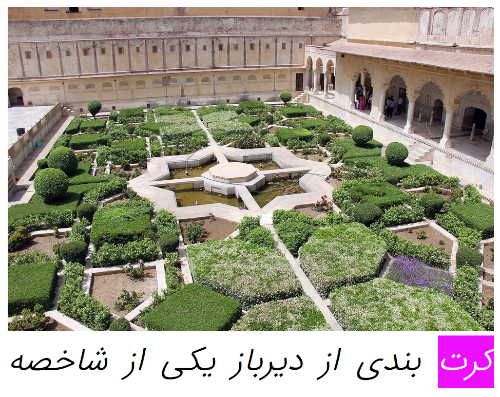
A large formal garden composed of many geometric, interlocking plots.
From an Iranian website about landscaping. The opening word of the
caption (highlighted), is the Persian word "chart", meaning
"plot". The caption begins: "Plotting has long been one of the important
features in Iranian gardening..." Screenshot from
https://landscaper.ir/17925/plotting-with-native-materials
Yard also comes from Proto-Indo-European *gʰordʰ-o,
but via Anglo-Saxon ġeard (listen):
🔊 https://www.ancientsounds.net/eastern-origins/yard-from-PIE-ghordho.wav
*gʰordʰ-os is a form of *gʰerdʰ-, meaning to enclose or
surround. Gird is also from *gʰerdʰ-:
🔊 https://www.ancientsounds.net/eastern-origins/gird-from-PIE-gherdh.wav
as are many related words in other languages, including Latin hortus,
Phrygian Gordion, Gaelic gort, Welsh gardd,
Ukrainian город, Romani gur "house".
Walter Tross @waltertross@mastodon.online
commented:
So practically all city names ending in -gart, -gard,
and -gorod, right?
Indeed. Also -grad, as in Leningrad etc.
May 01, 2024
Persian زشت zesht, meaning "ugly", comes from
Proto-Indo-European *ǵʰois-d-, something like this (listen):
🔊 https://ancientsounds.net/PIE-ghoisd-to-Persian-zesht.wav
English ghastly, ghost and aghast
come from the same root:
🔊 https://ancientsounds.net/ghastly-from-PIE-ghoisd.wav

Image: Persian version of movie poster for "The Good, the Bad, and the
Ugly", with the word زشت zesht "ugly" highlighted.
Oct 19, 2022
Glad comes from Proto-Indo-European *gʰleh₂dʰ,
[gʱleɐdʱ], something like this (listen):
🔊 https://ancientsounds.net/glad-from-PIE-ghleh2dh.wav
*gʰleh₂dʰ meant "bright, shiny" or "smooth". It
developed into Bosnian-Croatian-Serbian gladak, "smooth":
🔊 https://ancientsounds.net/PIE-ghleh2dh-to-Bosnian-gladak.wav
I would be glad to eat this 👇

"Be sure to try this smooth and creamy spread that is irresistibly reminiscent of Nutella..." Image and text extract from Croatian cookery site https://gastro.24sata.hr/recepti/namaz-od-ljesnjaka-po-receptu-najpoznatije-britanske-blogerice-23674
Oct 20, 2022
Glee comes from Proto-Indo-European *gʰlei-,
something like this (listen):
🔊 https://ancientsounds.net/glee-from-PIE-ghlei.wav
A related form of the same root, *gʰleu-, developed into
Bosnian-Croatian-Serbian glumiti "to act":
🔊 https://ancientsounds.net/PIE-ghleu-to-Bosnian-glumiti.wav

Image: Notice from a Belgrade drama school ("studio glume") Source: https://glumacki.studio/wp-content/uploads/2020/03/studio-template-3-1-1024x576.png
Oct 27, 2022
Go comes from Proto-Indo-European *ǵʰeh₁-
[g̟ʱe:], something like this (listen):
🔊 https://ancientsounds.net/go-from-PIE-gheh1.wav
The same root developed into Sanskrit जहाति jahaati "to abandon,
turn away from":
🔊 https://ancientsounds.net/PIE-gheh1-to-Sanskrit-jahaati.wav
Oct 28, 2022
anonymous ebirder @benadamx commented:
wie gehts
🔊 https://ancientsounds.net/gold-from-PIE-ghlt.wav
The same root developed into Persian زرد zard "yellow":
🔊 https://ancientsounds.net/PIE-ghel-to-Persian-zard.wav
English yellow comes from another form of the same
root, *ǵʰel-wos (here pronounced [g̟ʱelʋus]), like this:
🔊 https://ancientsounds.net/yellow-from-PIE-ghelwos.wav
*ǵʰel- also developed into Bosnian zelena "green":
🔊 https://ancientsounds.net/PIE-ghel-to-Bosnian-zelena.wav
The root also underlies Polish żółty "yellow" and złoty
"gold".

Image: An Austrian gold ducat ("1 złoty Dukat Austriacki"), from a
Polish numismatic site
https://www.mennicakrajowa.pl/pol_pl_1-zloty-Dukat-Austriacki-wysylka-24-h-650_2_2.jpg
Persian zard, gold, also gives its name to various golden-yellow rice pudding desserts; see:
The Moroccan Arabic word for banquet زردة zarda comes from
Turkish zerde, a rice pudding with saffron (from Persian زرد zard
'yellow').
(A similarly named rice pudding زردہ zarda is also found in the
north Indian / Pakistani cuisine) pic.twitter.com/t3msg2624B
Nov 3, 2022
Good comes from Proto-Indo-European *gʰodʰ-eh₂- [gʱodʱa:] "fitting/suited", something like this (listen):
🔊 https://ancientsounds.net/good-from-PIE-ghodheh2.wav
The same root developed into Sanskrit गध्य gadhya "to be seized (e.g. as booty)":
🔊 https://ancientsounds.net/PIE-ghodheh2-to-Sanskrit-gadhya.wav
 |
Nov 4, 2022
(See gander, above.)
Groom, as in "bride-groom", has nothing to do with
grooming. Anglo-Saxon guma just means "man", and descends from
Proto-Indo-European *dʰǵʰm-on- "human", something like this
(listen):
🔊 https://ancientsounds.net/groom-from-PIE-dhghmon.wav
In other languages, the meaning shifted to "earth", humans being creatures
of earth. In Pashto, an Iranian language of Pakistan and Afghanistan,
Proto-Indo-European *dʰǵʰm-on- developed into the first part
[dzma] of ځمکه [dzmaka], "earth", something like this (listen):
🔊 https://ancientsounds.net/PIE-dhghmon-to-Pashto-dzmakka.wav

The caption at the top of this image جغرافیه؛ ځمکه څه ډول جوړښت لري؟ (in Pashto) means "Geography: What is the structure of the earth?" The second word from the right, highlighted, is "zmaka", earth. Source: https://pa.azadiradio.com/a/32064357.html
Nov 7, 2022
The somewhat archaic word hale, meaning "healthy",
derives from Proto-Indo-European *koi-lo-, something like this
(ignoring the final -o; listen):
🔊 https://ancientsounds.net/hale-from-PIE-koil.wav
The same root developed into Bosnian cijelo, "all, whole":
🔊 https://ancientsounds.net/PIE-koil-to-Bosnian-cijelo.wav
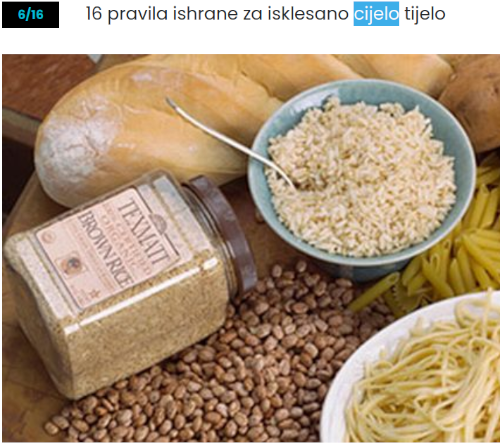
(The caption "16 pravila ishrane za isklesano cijelo tijelo" means "16 rules of nutrition for a chiseled whole body". From a Bosnian nutritionist website, https://body.ba/ishrana/nutricionizam/16-pravila-ishrane-za-isklesano-cijelo-tijelo/3357/7)
English whole is also from the same Proto-Indo-Euopean
root, like this (listen):
🔊 https://ancientsounds.net/whole-from-PIE-koil.wav
Nov 8, 2022
Hall comes from Proto-Indo-European *ḱel-,
something like this (listen):
🔊 https://ancientsounds.net/hall-from-PIE-kel.wav
The same root developed into Sanskrit शाला shaala, also meaning
"hall":
🔊 https://ancientsounds.net/PIE-kel-to-Sanskrit-Saala.wav
It's inherited in Hindi (in the headline below meaning "school")

Hindi newspaper story headlined समय पर शाला नहीं पहुंचे शिक्षक "Teachers did not reach school on time". The third word शाला, shaala, in this context means "school". From https://www.patrika.com/balaghat-news/teachers-did-not-reach-school-on-time-notice-issued-to-four-teachers-7693630/
Hang comes from Proto-Indo-European *ḱónk-e-
"to waver, be in suspense", something like this (listen):
🔊 https://ancientsounds.net/hang-from-PIE-konke.wav
The same root developed into Sanskrit शङ्क shanka "doubt":
🔊 https://ancientsounds.net/PIE-konke-to-Sanskrit-SaNka.wav
inherited in Hindi आसंका aasanka "fear", as in this headline:

Image from a YouTube news bulletin headline, "अब बिहार में जताई गई आसंका birdflu & coronavirus", meaning "Now fear of birdflu and coronavirus expressed in Bihar". The word preceding "birdflu", आसंका aasanka, is the modern Hindi descendant of the Sanskrit word शङ्क śaṅka.
Original source: https://www.youtube.com/watch?v=eVJp0WZugAk (but that video is no longer on YouTube)
Hare comes from Proto-Indo-European *ḱh₂s-en-
[kḁsən], something like this (listen):
🔊 https://ancientsounds.net/hare-from-PIE-kh2sn.wav
The same root developed into Sanskrit शश shasha:
🔊 https://ancientsounds.net/PIE-kh2sn-to-Sanskrit-shasha.wav
inherited in Hindi शशांक shashank "moon/hare", because of the
"hare in the moon"

Image of a hare and a Sanskrit text from https://www.payer.de/amarakosa2/amara209b.htm, an online edition of the Amarakośa (अमरकोष), a thesaurus written by the Jain or Buddhist scholar Amarasimha around 5th or 6th century AD. 2. dvitīyaṃ kāṇḍam (Part Two), Section 2.9. siṃhādivargaḥ (lions and other animals).
post-ChronHib @ChronHib commented
On this topic: From the same stem with a feminine suffix *k̑h₂s-n-ih₂-
comes Proto-Celtic *kannī-, which, with yet another suffix, is reflected
in Welsh ceinach "hare". In a (hopefully very soon) forthcoming article I
argue that the OIr. name Cainnech (of #Kilkenny fame) continues this word
in Irish. See also@PIE_Animals's
thread about hare in https://twitter.com/PIE_Animals/status/1288158598212866048
Nov 11, 2022
The Punjabi word ਕਿਰਪਾਨ kirpān "dagger", such as the ceremonial
dagger worn by Sikhs, comes from Proto-Indo-European *ker-p,
something like this:
🔊 https://ancientsounds.net/PIE-kerp-to-Punjabi-kirpaan.wav

Picture of a kirpan (Punjabi ਕਿਰਪਾਨ) worn by a Sikh person. From https://upload.wikimedia.org/wikipedia/commons/3/3c/Kirpan_and_kara.jpg
Also in the mix in the first simulation is a recording of Urdu
کرپان krpaan "sword":
🔊 https://ancientsounds.net/Urdu-krpaan.wav
... NOT to claim or imply that Punjabi is derived from Urdu - it's not! - but they are cognate words in those languages; I just use the Urdu here for its sound.
English harrow (an agricultural tool with many blades)
also derives from *kerp:
🔊 https://ancientsounds.net/harrow-from-PIE-kerp.wav
Nov 14, 2022
The English word "harvest" also comes from Proto-Indo-European *ker-p,
something like this:
🔊 https://ancientsounds.net/harvest-from-PIE-kerp.wav
Nov 15, 2022
The pronunciation of hate comes from Old English hete, from Proto-Germanic *hat(iz), from Post-PIE *k̂ad- (by Grimm's Law) from *k̂eh₂d- (vocalization of the laryngeals). Something like this (listen):
🔊 http://phon.ox.ac.uk/jcoleman/hate-from-PIE-keh2d.wav(There are no good "eastern" cognates of this word.)
Jul 23, 2020
The English word have comes from Proto-Indo-European *kh₂péh₁- (pronounced something like [kapé:]), something like this, listen:
The same root developed into Sanskrit कपटी kapaʈī, a “holding” – as much
as can be held in the two hands joined, something like this:
🔊 PIE-kh2peh1-to-Sanskrit-kapaTii.wav
Nov 17, 2022
English head comes (via Anglo-Saxon heafod)
from Proto-Indo-European *kh₂p-ut- [kaput], something
like this (listen):
🔊 head-from-PIE-kh2put.wav
A related form from the same root, *kh₂p-ol-, developed
into Sanskrit (and Nepali) कपाल kapaal "skull", which was then
borrowed/adapted into Japanese as 瓦 kawara “roof tile”!
🔊 PIE-kh2pol-to-Japanese-kawara.wav
First posted Nov 21, 2022; corrected Aug 2, 2023
English heart comes from Proto-Indo-European *ḱerd,
something like this (listen):
🔊 https://www.ancientsounds.net/heart-from-PIE-kerd.wav
The same root developed into Hindi हृदय hrday, something
like this:
🔊 https://www.ancientsounds.net/PIE-kerd-to-Hindi-hrday.wav

Image from "Health 360 in Hindi", a health education website,
https://www.health360hindi.com/2019/02/5-heart-disease-test/
The caption, हृदय रोग के परीक्षण means "screening for heart disease"; हृदय
hrdaya is the first (leftmost) word.
Nov 22, 2022
Martin J. Kümmel
@mjkammun@mastodon.green commented:
Hindi हृदय is a loanword from Sanskrit, so it did not develop regularly.
There is an (obsolete?) byform हिया hiyā which represents the regular
outcome much better.
English heaven comes from
Proto-Indo-European *h₂ḱmon- [ħăk̟ʲmon], from *h₂eḱmon-,
something like this (listen):
🔊 heaven-from-PIE-h2kmon.wav
The same root developed into Persian آسمان asman "sky",
something like this:
🔊 PIE-Hekmon-to-Persian-asman.wav
آسمان asman also occurs in the name of the Iran Aseman Airlines!

An aeroplane of Iran Aseman Airlines in the sky. From https://cdnw.elicdn.com/Blog/wp-content/uploads
Interestingly, the Proto-Indo-European word *h₂eḱmon-
also developed into words for "anvil" and "stone" in various languages, in
the ancient belief that the sky was made out of stone because stones
(meteorites) fell from the sky. For example, that root developed into
Lithuanian akmuõ, something like this:
🔊 PIE-Hekmon-to-Lithuanian-akmuo.wav
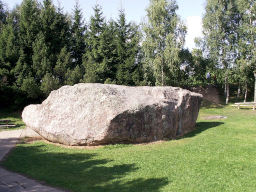
The Barstyčių stone, a huge glacial rock, is the largest boulder in
Lithuania. It is 13.4 m long, 7.5 m wide and 3.6 m high and lies in the
open air in a clearing with trees in the background. From Lithuanian
Wikipedia page https://lt.wikipedia.org/wiki/Barsty%C4%8Di%C5%B3_akmuo
*h₂eḱmon- also developed into Ancient Greek ἄκμων akmon “anvil, meteoric stone, meteorite”, like this:
🔊 https://www.ancientsounds.net/PIE-h2ekmon-to-AncientGreek-akmon.wav
Nov 28, 2022; corrected and extended with improved simulations Aug 3, 2023.
The call of a buzzard: 🔊 https://www.ancientsounds.net/eastern-origins/BuzzardCallRSPB.mp3,
courtesy of RSPB.
The Slovak word for buzzard, káňa, comes from
Proto-Indo-European *keh₂n- [ka:n] “sing, call”, like
this (listen):
🔊 https://www.ancientsounds.net/eastern-origins/Slovak-kaNa-from-PIE-keh2n.wav
English “hen” is also derived, via Proto-Germanic *hano
“rooster”, from *keh₂n- :
🔊 https://www.ancientsounds.net/eastern-origins/hen-from-PIE-keh2n.wav
as is Persian خواندن khandan “sing”:
🔊 https://www.ancientsounds.net/eastern-origins/PIE-keh2n-to-Persian-khandan.wav

Steppe Buzzard. Photograph by Charles J. Sharp, from Wikipedia.
Apr 10, 2024
English "herd" comes from Proto-Indo-European *ḱerdʰ-eh₂-
[k̟ʲerdʱɐ], something like this:
🔊 herd-from-PIE-kerdhe.wav
The same root developed into
Bosnian-Croatian-Serbian krdo, krda, something like
this:
🔊 PIE-kerdheh2-to-BCS-krda.wav
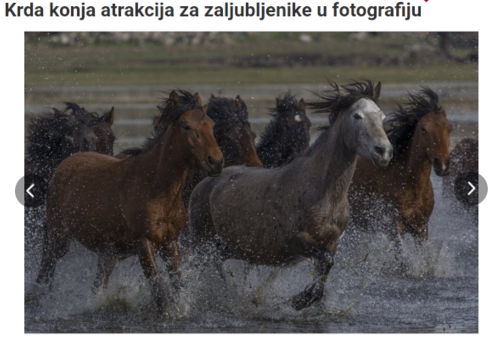 |
Wild horses galloping through water, from a
Bosnian news website article about photo safaris near Mount Erciyes, in
Kayseri, Turkey. The headline begins with the words "Krda konja",
meaning "A herd of horses". Source:
https://vijesti.ba/clanak/399576/krda-konja-atrakcija-za-zaljubljenike-u-fotografiju
The same root also developed into Slovenian čreda, something
like this:
🔊 PIE-kerdhe-to-Slovenian-creda.wav

Image: Detail from a poster for a comedy film called, in Slovenian, Čréda
("The Flock"). Image source:
https://www.kolosej.si/media/movies/2016/11/11/stado-00-l.jpg
Nov 29, 2022
English hew comes from
Proto-Indo-European *kóuh₂- [kóuɐ̥], something like this:
🔊 hew-from-PIE-kouh2e.wav
The same root developed into Bosnian-Croatian-Serbian-Slovenian kovač,
meaning "smith" (and also as a common surname Kovač, "Smith"),
something like this:
🔊 PIE-kouh2e-to-Bosnian-kovaC.wav

Image: Cover of compact disk recorded by
Croatian singer Mišo Kovač. From
https://webshop.crorec.hr/proizvod/mate-miso-kovac-miso-kovac/
Dec 01, 2022
English high comes from Proto-Indo-European *kóuk-o-,
something like this:
🔊 high-from-PIE-kouko.wav
The same root, which seems to have meant "prominent" and also "curved",
developed into Bosnian-Croatian-Serbian kuka, "hook", something like this:
🔊 PIE-kouko-to-Bosnian-kuka.wav
Dec 07, 2022
English hold comes from Proto-Indo-European *kel-,
something like this:
🔊 hold-from-PIE-kel.wav
The same root developed into Sanskrit कलयति kalayati "counts",
something like this:
🔊 PIE-kel-to-Sanskrit-kalayati.wav
(The Sanskrit stem कल kal- also means "to hold")

Dec 06, 2022
English home comes from
Proto-Indo-European *ḱoim-os, something like this:
🔊 home-from-PIE-koim.wav
From the same root, *ḱei-, developed Sanskrit शी shii
“to lie down”, something like this:
🔊 PIE-kei-to-Sanskrit-shi.wav
In Hindi, the letter शी shi is nowadays used to transliterate
the name of China's President Xi, and the interjection "sheeee" as in this
GIF:

Dec 08, 2022

Picture of gold bangles and other gold jewellery, with the Hindi word "Kanak", meaning gold, in the foreground. From a Hindi language website about synonyms of "kanak", gold. https://www.paryayvachishabd.co.in/2022/04/02/kanak-ka-paryayvachi-shabd/
Dec 09, 2022
🔊 PIE-kh3go-to-Persian-chang.wav

Picture of a "waste grabber" (چنگ ضایعات), from Iranian industrial equipment website https://daghayegh.com
Dec 12, 2022
English horn comes from Proto-Indo-European *ḱr̥-n-
[k̟ʲr̩n], something like this:
🔊 horn-from-PIE-krn.wav
(Fun fact: “Cornwall”, the "horn" of South-West England, comes from Proto-Celtic *karnos “horn” + Old English wealh “stranger, foreigner, Welsh”.)
The same root developed into Sanskrit शृङ्ग shrnga, something
like this:
🔊 PIE-krn-to-Sanskrit-shrnga.wav
The Persian cognate of this word, سرنا sorna, a
musical instrument, was borrowed into many languages, including Chinese 唢呐
(e.g. Mandarin suǒnà), .
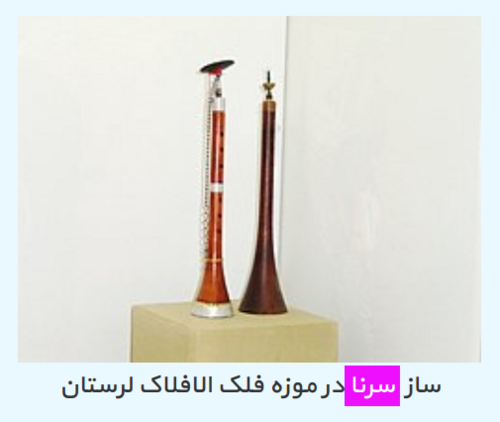
Two sornas standing upright on a pedestal. The caption, in Persian,
means "sorna instruments at Lorestan Falak Museum" From Iranian website
https://sorna-music.ir/fa/sorna.aspx
In many languages, the stem of Proto-Indo-European *ḱr̥-n-,
i.e. *ker-, means "head". For example, it developed into Northern
(Kurmanji) Kurdish ser "head", something like this:
🔊 PIE-ker-to-Kurdish-ser.wav
The same root developed into Armenian սար sar “peak, mountain”,
something like this:
🔊 PIE-ker-to-Armenian-sar.wav
Dec 13, 2022
English hound comes from Proto-Indo-European *ḱu-on-,
something like this:
🔊 hound-from-PIE-kuon.wav
The same root developed into Armenian շուն shun, something like
this:
🔊 PIE-kuon-to-Armenian-shun.wav
and Sanskrit, श्वन् shwan:
🔊 PIE-kuon-to-Sanskrit-shwan.wav
The images below however, are of (on the left) a coin of the pre-Roman, Ancient British king CUNO(BELIN), the "hound of Belinos", and (on the right) a 10th century British inscription of the later British or early Welsh form of the same name Conbelin. The ancient British king Cunobelin is the prototype of Shakespeare's Cymbeline (in name only).
 |
| Ancient British coin of Cunobelinos (died AD 42), inscribed CUNO, "hound". Source: old postcard from Colchester museum. |
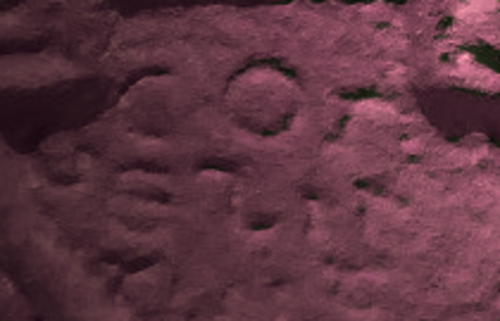 |
| 10th century inscription of the British/early Welsh name Conbelin, from the Cross of Conbelin, now at the Stones Museum, Margam. |
Cú is also the modern Irish word for hound (e.g. greyhound), and
occurs in the name of the folklore hero Cú Chulainn, the "Hound
of Culann".
🔊 https://en.wikipedia.org/wiki/File:Cuchulainn-audio.ogg
Dec 16, 2022; revised Sept 29, 2023
A *laryngeal reflex in modern Persian: سیاه siyah "black", ultimately from Proto-Indo-European *ḱyeh₁-, cognate with English hue. The final [h] is not a random one-off, but seems common/normal in Iranian Persian, Tajik etc. Listen:
🔊 http://phon.ox.ac.uk/jcoleman/Persian-siyah-F2.wavJan 14, 2020
English hue comes from Proto-Indo-European *ḱieh₁-
[k̟ʲe:], earlier [k̟ʲeh], originally referring to a dark colour, something
like this:
🔊 hue-from-PIE-kieh1.wav
The same root developed into Persian سیاه siyah “black”,
something like this:
🔊 PIE-kieh1-to-Persian-siyah.wav
This pronunciation is noteworthy as it preserves a laryngeal consonant at
the end, important evidence about the ancestral pronunciation.

An astronomical black hole, as depicted on the Persian astronomy website elmiha.com
Persian for "black hole" is siyah chol.
Jan 03, 2023
English hundred comes from Proto-Indo-European *ḱm̥tóm
[k̟ʲm̩tóm], earlier *dḱm̥-tó- [dk̟ʲm̩tó] something like this
(ignoring the final [o]):
🔊 hundred-from-PIE-dkmt.wav
The same root developed into Ossetian сӕдӕ sada (compare Persian
صد sad), something like this:
🔊 PIE-dkmt-to-Ossetian-sada.wav
An example of “lambdacism” in Pashto is heard in the development of
Persian sad “hundred” to Pashto سل [sal]:
🔊 https://www.ancientsounds.net/eastern-origins/Persian-sad-to-Pashto-sal.wav
Jan 04, 2023; May 16, 2024
English I comes from Proto-Indo-European *h₁éǵh₂
[heɟɐ̥], something like this (ignoring the final [ɐ̥]):
🔊 I-from-PIE-h2eg.wav
The same root developed into Ossetian æз [az], something like this:
🔊 PIE-h2eg-to-Ossetian-az.wav
(Compare Pashto زه za [zə] 🔊 Pashto-za-M1.wav)
Jan 09, 2023
The Old English word for I, ic, and Middle English ich,
both probably pronounced [ɪʧ], survived in dialect into fairly recent
times in various guises. For example, William Shakespeare, King Lear, act
4, scene 6, line 226 (c. 1603–1606) gives, in imitation of a West Country
(i.e. South-West England) accent, the line:
Chill not let go, zir, without
vurther 'casion
The first word, chill, is the contracted form of ich will
(i.e. = modern standard I'll). The spellings zir,
for sir, and vurther, for further, are
characteristic of West Country dialect.
In 1588, "Though Amaryllis Daunce in Greene", anonymous or attributed to
William Byrd, contains:
Yet since their eyes make hart
so sore, hey ho, chill love no more
also exemplifies chill for ich will.
This West Country usage survived until at least the 19th century, in some localities, and was recorded in use in the area around Yeovil in southern Somerset. Jennings (1869: 150–155) contains a section headed “I, Ic, Ich, Iche, Utchy, Ise, C', Ch', Che, Ch'am, Ch'ud, Ch'll”, also citing 'ch'am, 'ch'ud, and 'ch'ill (I am, I would, I will). Page 69 explains that utchy "is, manifestly, a corrupt pronunciation of Ich, or Ichè, pronounced as two syllables, the Anglo-Saxon word for I. What shall utchy do? What shall I do."
In his enormous English dialect survey, Ellis (1889: 1516–17) has a section on “The Land of Utch for I, Sm. [i.e. Somerset]” containing this dialect pronunciation party-piece:
"Mr. Price gave me the following joke on [utch] which passes current in the district. ... Another version of this joke was given by Miss Ham, a native of Somerset, in a letter (dated Clifton, 30 Jan. 1825) addressed to Jennings, who prints itin his glossary."
(Ellis uses an obscure phonetic transcription system of his own devising. In my re-spelling using normal orthography:)
bread 'n cheese, utch 've a 'ad
'n what utch 'ad, utch 've a eat
'n more utch 'ud, if utch 'ud 'a 'ad
i.e. bread and cheese, I have a-had / and what I had, I've a-ate / and more I would, if I would have had.
One of Wright's correspondents for Dorset was Thomas Hardy, who in a note published in 1889 refers to ich “and kindred words ... still used by old people in north-west Dorset and Somerset”. Hardy continues: “I heard ‘Ich’ only last Sunday, but it is dying rapidly. I know nobody under seventy who speaks so, and those above it use the form only in their impulsive moments.” (Wertheimer 1974, p. 26). By “north-west Dorset and Somerset” Hardy presumably means that part of Dorset and adjacent parts of Somerset, in effect the area around the south-west Somerset town of Crewkerne, which abuts to the north on the Land of Utch. Ich and uch were also recorded in 1863 by the dialect poet William Barnes “in some of the lower parts of Dorset”.
Read (1916), a three-act play, gives further instances of utchy in West Country dialect:As valled out, utchy come across en out to Clinkerbell Barn […] (p. 16, = As it fell out, I came across him at Clinkerbell Barn)
Let utchy bide ...! (p. 63, = Leave me be!)
Only let en lay 's han' 'pon utch y! 'Ch'ill zmoor en doown! 'Ch'ill gie en the backzwrd cut! (p. 81 = Just let him lay his hand upon me! I'll knock him down! I'll give him a backwards cut!)
Perhaps the most surprising retention of ich from Old and Middle English down to the present time is its rather concealed manifestation in the phrase "chinny reckon", meaning "I don't think so", which appears to have passed from West Country English into more widespread UK usage of the latter 20th century. For more about this, see the entry Reach, reckon, right, below.
English ice comes from Proto-Indo-European *h₁éiH-so
[heiso], something like this (ignoring the final [o]):
🔊 ice-from-PIE-h1eiHs.wav
A related form of the same word, *h₁eiH-ko- [heiko],
developed into Urdu یخ yakh [jax] (a loan via Persian),
something like this:
🔊 PIE-h1eiHko-to-Urdu-yakh.wav
Jan 10, 2023
bbbourq@lingo.lol commented:
So cool!
The Persian word is pronounced [jæx].
A neat compound word is یخچال [jæx.ˈt͡ʃɒl] n. : refrigerator; literally
"ice pit"
English is comes from Proto-Indo-European *h₁és-ti
[ésti], something like this:
🔊 is-from-PIE-h1esti.wav
The same word developed into Sanskrit अस्ति asti and Persian است
ast, something like this:
🔊 PIE-h1esti-to-Persian-ast.wav
Jan 11, 2023
English jowl comes from Proto-Indo-European *ǵebʰ-
(perhaps [ʤebʱ]) something like this:
🔊 jowl-from-PIE-geb.wav
The same word *ǵebʰ- developed into Urdu جبڑا jabra "jaw",
something like this:
🔊 PIE-geb-to-Urdu-jabra.wav
*ǵebʰ- is also the ancestor of Persian جویدن jawidan
and Pashto [zoyəl] "to chew"
🔊 Pashto-zoyal-chew-JOWL.wav
Jan 16, 2023
English kill comes from Proto-Indo-European *gʷelH-
[gwel], something like this:
🔊 kill-from-PIE-gwelH.wav
Quell is from the same root, which also developed into
Bosnian-Croatian-Serbian žaoka “stinger, barb” , something like
this:
🔊 PIE-gwelH-to-Bosnian-Zaoka.wav
Jan 17, 2023
English kin and kind (i.e. sort) come
from Proto-Indo-European *ǵenh₁- [g̟ʲenə], something like this:
🔊 kin-from-PIE-genh1.wav
🔊 kind-from-PIE-genh1.wav
The same root developed into Sanskrit जनति janati and Persian
زادن zadan (both meaning “give birth”) something like this:
🔊 PIE-genh1-to-Sanskrit-janati.wav
🔊 PIE-genh1-to-Persian-zadan.wav
Jan 18, 2023
English knee comes from Proto-Indo-European *ǵneu-
[g̟nəo], something like this:
🔊 knee-from-PIE-gneo.wav
A related form of the same root, *ǵonu-, developed into Sanskrit
जानु jaanu, Persian and Urdu زانو zanu, something like
this:
🔊 PIE-gonu-to-Urdu-zanu.wav

Jan 23, 2023
English know comes from Proto-Indo-European *ǵnéh₃-
[g̟nəŏ] (possibly the same sound as knee *ǵneu-
[g̟nəo]), something like this:
🔊 know-from-PIE-gneh3.wav
Can is from the same root:
🔊 can-from-PIE-gneh3.wav
(The "gn" of "cognitive" too!)
It also developed into Urdu جاننا jaannaa and Lithuanian žinau
something like this:
🔊 PIE-gneh3-to-Urdu-jaannaa.wav
🔊 PIE-gneh3-to-Lithuanian-Zinau.wav
Jan 24, 2023
bbbourq@lingo.lol commented:
The name of the Lendians (Polish: Lędzianie), an ancient tribe,
comes from Proto-Indo-European *lendh-, "land", something like
this (listen):
🔊 https://ancientsounds.net/Polish-L%C4%99dzianie-from-PIE-lendh.wav
Unlike those living in fields (Polish "pole"), Lendians lived on
the uncultivated heath-land.

Polish tribes in antiquity, from https://en.wikipedia.org/wiki/Lendians#/media/File:Plemiona_polskie.png. Lendians/Lędzianie are at lower left.
Proto-Indo-European *lendh- also developed into English land
(and similarly in various other languages), something like this:
🔊 https://ancientsounds.net/PIE-lendh-to-land.wav
"To lean" comes from Proto-Indo-European *ḱli-n-
[k̟li:n] something like this:
🔊 lean-from-PIE-klin.wav
The full form of the root, *ḱlei-, also developed into Sanskrit
श्रयते shrayate, something like this:
🔊 PIE-klei-to-Sanskrit-Srayate.wav
As with loud, we see *ḱl develop regularly
into Sanskrit shr.
Latin clino (which was borrowed into English in e.g. incline,
etc.) is from the same root.
Jan 27, 2023
Leave, as in "to leave over", comes from
Proto-Indo-European *loip, something like this:
🔊 leave-from-PIE-loip.wav
A related form of this root, *leip, also developed into Polish lepić
“to mould, be sticky”, something like this:
🔊 PIE-leip-to-Polish-lepiC.wav
Other descendants include Sanskrit लेपयति lepáyati “to smear”
and Ancient Greek λιπαρός liparos “oily”.
Jan 31, 2023
Lend comes from Proto-Indo-European *leikʷ,
meaning "to leave", something like this:
🔊 lend-from-PIE-leikw.wav
This root also developed into Persian ریختن rikhtan, with a
change in meaning (“pour, spill, sprinkle”), something like this:
🔊 PIE-leikw-to-Persian-rikhtan.wav
Feb 03, 2023
Through a series of changes, loan descends from
Proto-Indo-European *loikʷ-:
🔊 loan-from-PIE-loikw.wav
*loikʷ- was a form of *leikʷ-, "leave":
🔊 PIE-loikw-from-leikw.wav
*leikʷ- also developed into Persian ریختن rikhtan
“pour, spill, sprinkle”:
🔊 PIE-leikw-to-Persian-rikhtan.wav
So, "loan" and "rikhtan" don't sound much alike and have quite different
meanings, but are cognates even so!

A hand holding a glass jug pours water into a tumbler. The leftmost
word of the Persian text superimposed on the image is ریختن rikhtan,
"to pour". Source: https://namagard.com/wp-content/uploads/2018/02/pitcher-pouring-water-into-glass.jpg
Mar 01, 2023
Let comes from Proto-Indo-European *leh₁d-
[le:d], something like this:
🔊 let-from-PIE-leh1d.wav
This root also developed into Albanian lodh [loð] “to tire”,
something like this:
🔊 PIE-leh1d-to-Albanian-lodh.wav
Feb 07, 2023
Lick comes from Proto-Indo-European *liǵʰ-,
something like this:
🔊 lick-from-PIE-ligh.wav
(The aspiration at the end of this simulation is voiceless [ʰ]
not breathy-voiced [ʱ].)
This root also developed into Persian لیس lis, something like
this:
🔊 PIE-ligh-to-Persian-lis.wav
Feb 13, 2023
Lie, as in "lie down", comes from Proto-Indo-European *légʰyo-,
something like this:
🔊 lie-from-PIE-leghyo.wav
This root also developed into Bosnian ležati, something like
this:
🔊 lie-from-PIE-leghyo.wav
Lie as in "tell lies" comes from a completely different
PIE root, *léugʰ-:
🔊 lie-from-PIE-leugh.wav
which developed into Bosnian lagati:
🔊 PIE-leugh-to-Bosnian-lagati.wav

Photo of a person lying down in a bed, clipped from a Bosnian online
magazine, Alo! The title, “Zašto nikad ne treba ležati na desnoj
strani”, means “Why you should never lie on your right side”. Source:
https://aloonline.ba/
Feb 20, 2023
Light (brightness) comes from Proto-Indo-European *leuk-
[lɘʊk], something like this:
🔊 light-from-PIE-leuk.wav
*leuk- also developed into words for "day" in Indo-Iranian
languages, e.g. Balochi روچ [roʧ], something like this:
🔊 PIE-leuk-to-Balochi-roch.wav
Sanskrit रोचते rochate "shine":
🔊 PIE-leuk-to-Sanskrit-rocate.wav
Kurdish roj [roʒ]:
🔊 PIE-leuk-to-Kurdish-roj.wav
Tajik рӯз, Persian روز, ruz:
🔊 PIE-leuk-to-Tajik-ruz.wav

A Persian greetings image for "Nowruz Mubarak", Happy New
Year, literally "New-day Happy", which is written in green Persian
lettering at the left of the image. The three leftmost letters on the
first line read "ruz", meaning day. On the right of the image
is a seasonal table display of good things to mark the coming of spring,
fruits, sprouting greenery and a lit candle, to signify the new year.
Image source: https://blog.izapya.com/wp-content/uploads/2020/03/noroz1.jpeg
Feb 21, 2023
In a previous I post simulated how light (brightness)
comes from Proto-Indo-European *leuk-. Light in
weight comes from a different PIE word, *h₁lengʷʰ-to-. My
simulation ignores the initial *h₁, as it was lost, and the
suffix -to-, leaving just [lɐŋgʷʰ] for the root:
🔊 light-from-PIE-lengwh.wav
*h₁lengʷʰ- also developed into #Sanskrit लघु laghu,
something like this:
🔊 PIE-leuk-to-Balochi-roch.wav
Feb 23, 2023
Lip comes from Proto-Indo-European *leb-,
something like this:
🔊 lip-from-PIE-leb.wav
*leb also developed into Persian لب lab, something like
this:
🔊 PIE-leb-to-Persian-lab.wav
The phonetics term "labial" is also from the same root, via
Latin labium.
Feb 24, 2023
Listen comes from Proto-Indo-European *ḱleu-s
[klɐʊs], something like this:
🔊 listen-from-PIE-kleus.wav
*ḱleu-s also developed into Sanskrit श्रोष्यति shroshyati,
something like this:
🔊 PIE-kleus-to-Sanskrit-SroSyati.wav
Quite similarly, *ḱleu-s also developed into Bosnian slušati:
🔊 PIE-kleus-to-Bosnian-sluSati.wav
Feb 27, 2023
Anonymous eBirder @benadamx commented on
Twitter:
listen close
Andreas (aschaetti@hachyderm.io) asked:
Is this related to Middle High German and modern Swiss German 'lose(n)' = listen?
I'm not an expert, but it looks plausible, and according to Pokorny's dictionary - yes
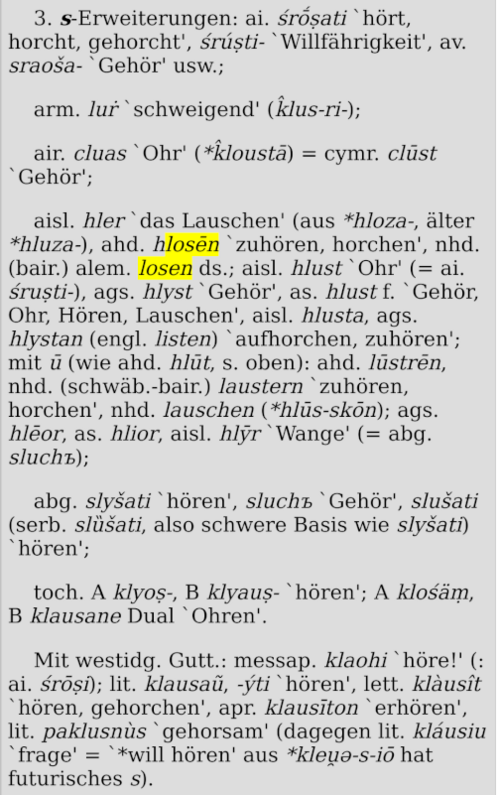

A hand holding a glass jug pours water into a tumbler. A phrase in Persian text is superimposed on the image. The leftmost word of the text is ریختن "rikhtan", to pour. Source: https://namagard.com/wp-content/uploads/2018/02/pitcher-pouring-water-into-glass.jpg
Mar 01, 2023
Lock descends from Proto-Indo-European *leug-
"bend":
🔊 lock-from-PIE-leug.wav
This suggests that something bent could have been used by
Proto-Indo-European speakers as a closure or fastening of some kind. A
related form, *lug-no-s, developed into Sanskrit रुग्ण rugna
“bent” as well as "broken, diseased, sick, infirm:
🔊 PIE-lugnos-to-Sanskrit-rugna.wav
Mar 06, 2023
(Twitter, Oct 10, 2018)
English long is related to Modern Persian دراز deraz. Long comes from Anglo-Saxon lang, which came from Proto-Indo-European *dlonghos something like this (I ignore the -os ending), listen:
🔊 http://phon.ox.ac.uk/jcoleman/AS-lang-from-PIE-dlong.mp3Proto-Indo-European *dlonghos developed into Middle Persian derang, something like this:
🔊 http://phon.ox.ac.uk/jcoleman/PIE-dlong-to-MPers-derang.mp3
Obviously we don't have recordings of Middle Persian; this derang is fiddled from a Low German speaker saying Drang.) Middle Persian derang developed into Modern Persian deraz, something like this, listen:(Update, Mar 07, 2023)
English long is related to Modern Persian دراز deraz. Long comes from Proto-Indo-European *dlonǵʰ- something like this (I ignore the final ʰ):
🔊 long-from-PIE-dlong.wav🔊 loud-from-PIE-kleut.wav
The same root also developed into Sanskrit श्रुत shruta
“heard”, something like this:
🔊 PIE-kleut-to-Sanskrit-Sruta.wav
*ḱleu- is also behind Irish and Scottish Gaelic cluas
"ear".
Jan 26, 2023
Previously, I showed how listen comes from
Proto-Indo-European *ḱleu-s "hear". Loud is
from a related form *ḱleu-t [klɐʊt]:
🔊 loud-from-PIE-kleut.wav
*ḱleu-t also developed into Sanskrit श्रुत shruta
“heard”:
🔊 PIE-kleut-to-Sanskrit-Sruta.wav
*ḱleu- also meant "renown, fame, glory", and lies behind Slavic *slava
“fame, glory”, as in the Ukrainian rallying-cry слава Україні,
#SlavaUkraini !
Feb 28, 2023
Lust comes from Proto-Indo-European *leh₂s- [lɐ:s] something like this:
🔊 lust-from-PIE-leh2s.wavMar 09, 2023
Moth descends from Proto-Indo-European *mot-,
something like this:
🔊 moth-from-PIE-mot.wav
Maggot also descends (via Middle English maddock,
maðek) from the same stem:
🔊 maggot-from-PIE-mot.wav
*mot- also developed into Belarusian мотыль matil
“butterfly”:
🔊 PIE-mot-to-Belarusian-matylj.wav
and Persian ملخ malakh “locust, grasshopper”, something like
this:
🔊 PIE-mot-to-Persian-malax.wav

Photograph of a grasshopper, from a photography site, persiangraphic.com The title written in Persian script above the picture means "grasshopper image". The second (leftmost) word, highlighted, is "malakh", grasshopper.
May 02, 2023
Man has come down to us almost unchanged over like 6000
years, from Proto-Indo-European *man-us, something like this:
🔊 man-from-PIE-manus.wav
*man-us also lies behind Bengali মানুষ manush:
🔊 PIE-manus-to-Bengali-manush.wav
Romani manus:
🔊 eastern-origins/PIE-manus-to-Romani-manus.wav
and many similar words in other languages, including French manouche
“gipsy”.
Mar 13, 2023; Sept 3, 2024
Mane comes from Proto-Indo-European *moneh₂-
(here synthesized as [monɐ̤ɦ]), something like this:
🔊 mane-from-PIE-moneh2.wav
*moneh₂- also evolved into Marathi मान maan “nape”:
🔊 PIE-moneh2-to-Marathi-maan.wav

Image: Screenshot from a Marathi-language health news website; the
headline in Marathi and English reads "Home Remedies for Neck Pain In
Marathi". The word highlighted at left in the Marathi version of the
headline is "maan", meaning neck. Source: Screenshot
from
https://marathi.popxo.com/article/home-remedies-for-neck-pain-in-marathi/
Mar 14, 2023
Many comes from Proto-Indo-European *monogʰo,
something like this:
🔊 many-from-PIE-monogho.wav
*monogʰo also evolved into mnogo in Bosnian, and more
or less identical or similar pronunciations in other Slavic languages:
🔊 PIE-monogho-to-Bosnian-mnogo.wav
Mar 23, 2023
The Persian word for border, marz ( مرز ), comes from
Proto-Indo-European *morǵ-eh₂, something like this:
🔊 PIE-morgeh2-to-Persian-marz.wav
The somewhat archaic English word march,
meaning "frontier region", as in "the Welsh Marches" and the name of the
Anglo-Saxon kingdom of Mercia, comes from same root *morǵ-eh₂:
🔊 march-from-PIE-morgeh2.wav

Image: Fence near the border between Iran and Pakistan. The Persian
text on the upper sign begins with the word "marz", in Arabic letters,
Persian for "border".
Mar 24, 2023
The modal verb may, related to both the verb and the
noun might, comes from Proto-Indo-European *mogʰ-,
something like this:
🔊 may-from-PIE-mogh.wav
The same root *mogʰ- also developed into Sanskrit मघ magha
“power”:
🔊 PIE-mogh-to-Sanskrit-magha.wav
As these are rather abstract words, the image here is of a sound
spectrogram of the PIE *mogʰ simulation.

Sound spectrogram, segmental labels and waveform of the PIE *mogʰ
simulation. Voicing, shown by vertical stripes in the spectrogram and
regular pulses in the waveform, extends all the way through even the
final aspiration, ʱ.
*mogʰ- also developed into Old Persian 𐎶𐎦𐎢𐏁 m-gu-u-š maguš (on the Behistun inscription), "powerful person", from which English has borrowed the word “magus” (via Ancient Greek). *mogʰ- developed into modern Persian مغ [moɢ] or [moʁ] like this:
*mogʰ- also developed into Bosnian, Croatian, Montenegrin and Serbian možda можда “maybe”:

Mar 28, 2023; extended Apr 15‒17, 2024
Mead, the honey wine, comes from Proto-Indo-European *medʰ-u-,
something like this:
🔊 mead-from-PIE-medhu.wav
The same root also developed into Sanskrit मधु madhu:
🔊 PIE-medhu-to-Sanskrit-madhu.wav
The Tocharian descendent mjət or mit "honey" was
borrowed into Chinese 蜜 mì, Min Dong [miˀt]:
🔊 http://phon.ox.ac.uk/jcoleman/%E8%9C%9C_mit_Min_Dong.wav
and was then borrowed in Japanese 蜜 mitsu!
Proto-Indo-European *medʰ-u- descended with very little change
to Lithuanian medus “honey”, which I used (without the final
[s]) as a proxy recording for *medʰ-u-
🔊 PIE-medhu-to-Lithuanian-medus.wav
Mar 30, 2023
An older post: Chinese 蜜 "honey" (Mandarin: mì) is a loan-word from Indo-European Tocharian mjət, mit (cognate with mead). In Min Dong Chinese:
🔊 http://phon.ox.ac.uk/jcoleman/%E8%9C%9C_mit_Min_Dong.wavJapanese 蜜, mitsu, was borrowed from Chinese. Proto-Indo-European *médʰu has travelled a long way!
Jul 5, 2017
It also went into Proto-Uralic *mete Hungarian méz, "honey" Finnish & Estonian mesi, "nectar" Samic miehta & mietâ, "honey" Plus some examples from Komi, Udmurt, Mari, Erzya & Moksha
Meal, meaning ground food, descends from
Proto-Indo-European *melh₁-uo- [meləwɔ], something like
this:
🔊 meal-from-PIE-melh1uo.wav
The stem *melh₁- "grind, rub" also descended into Persian مالیدن
malidan “rub”, something like this:
🔊 PIE-melh1-to-Persian-malidan.wav
and Urdu ملنا malna “rubbing”
🔊 PIE-melh1-to-Urdu-malna.wav
Apr 04, 2023
@MmeRoux commented
the French word for a grinding stone is 'meule' Same origin I guess?
Yes it is, from the same PIE stem via Latin mola. As also in "molars" i.e. grinding teeth. English "mill" as well.
Bosnia does not have a long coastline; as in many other Slavic languages,
its word for sea is more, which descended with little change
from Proto-Indo-European *mori-, something like this:
🔊 PIE-mori-to-Bosnian-Croatian-Serbian-more.wav
English mere (i.e. lake) descends from the same root:
🔊 mere-from-PIE-mori.wav
So do Latin mare, French mer, German Meer,
Irish muir, Welsh môr, Lithuanian mãrė, and
Ossetian mal.

Front view of the Motel More, meaning "Sea Motel", at Neum on the Bosnian Adriatic coast.
Apr 03, 2023
English mete (out) descends from Proto-Indo-European *méd-e-,
"to measure", something like this:
🔊 mete-from-PIE-mede.wav
Empty - the "mpt" especially - is from the
same stem, the intrusive [p] arising from a slip in timing of nasality,
lip opening and voicing of [m].
🔊 empty-from-PIE-mede.wav
*méd-e- also descended into Armenian միտք mitk’
“thought” , something like this:
🔊 PIE-mede-to-Armenian-mitk.wav
Apr 13, 2023
English mid (out) descends from Proto-Indo-European *medʰ-io-
[medʱjo], something like this:
🔊 mid-from-PIE-medhio.wav
*medʰ-io- also descended into Sanskrit मध्य madhya, as
in the name of the Indian state of Madhya Pradesh "middle region",
something like this:
🔊 PIE-medhio-to-Sanskrit-madhya.wav
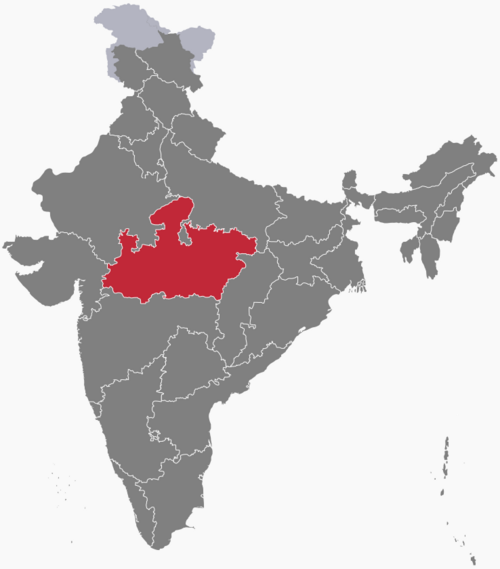
Image: A map showing the states of India, with the state of
Madhya Pradesh, lying in the centre of India, picked out in red.
From Wikimedia Commons
https://hi.wikipedia.org/wiki/%E0%A4%AE%E0%A4%A7%E0%A5%8D%E0%A4%AF_%E0%A4%AA%E0%A5%8D%E0%A4%B0%E0%A4%A6%E0%A5%87%E0%A4%B6#/media/%E0%A4%9A%E0%A4%BF%E0%A4%A4%E0%A5%8D%E0%A4%B0:IN-MP.svg
Apr 14, 2023
Milk descends from Proto-Indo-European *h₂melǵ-
[ħmelg, ɐ̥melg], something like this:
🔊 milk-from-PIE-h2melg.wav
*h₂melǵ- also descended into Sanskrit मर्जति marjati
“to clean, wipe”, something like this:
🔊 PIE-h2melg-to-Sanskrit-marjati.wav
and into Ancient Greek ἀμέλγω amelgo, the initial [a] of which
gives evidence for the pronunciation of *h₂:
🔊 PIE-h2melg-to-AncientGreek-amelgo.wav
Apr 17, 2023
Mind descends from Anglo-Saxon mynd, from
Proto-Germanic *mundi, from Proto-Indo-European *mn-ti-,
a derived form of *men-, something like this (listen):
🔊 mind-from-PIE-men.wav
*men- also descended (via Sanskrit) into Bengali মানা mana
“accept, obey, pay heed to”:
🔊 PIE-men-to-Bengali-mana.wav
Mental, Latin mens, and Lithuanian mintis
are from the same root.
Apr 18, 2023
Mingle descends from Proto-Indo-European *monk-,
a derived form of *menk-, something like this (listen):
🔊 mingle-from-PIE-menk.wav
*menk- also descended into Persian آمیختن amekhtan
“mix, mingle, blend, couple”:
🔊 PIE-menk-to-Persian-amekhtan.wav
to Sanskrit मचते machate “to be arrogant”:
🔊 PIE-menk-to-Sanskrit-macate.wav
and to Bosnian mek “soft”:
🔊 PIE-menk-to-Bosnian-mek.wav

A flashcard from a Persian website teaching English language.
Headline: the English phrase "to couple". Second line: guide to the
pronunciation of "couple" in IPA phonemic notation. Third line: the
Persian verb "amekhlan", written in Persian script. Below that, a
circular UK flag (union jack) and the phrase "The two train cars had
been coupled together", with its translation into Persian beneath that.
Source:
https://dic.b-amooz.com/en/dictionary/photos/35682/1080/couple.jpg
Apr 19, 2023
Mirth descends via Anglo-Saxon merġþ
(“merry+th”) from Proto-Indo-European *mrǵʰ-u-, meaning “short”,
something like this (listen):
🔊 mirth-from-PIE-mrghu.wav
The same root also descended into Sanskrit मुहु muhu
“short”:
🔊 PIE-mrghu-to-Sanskrit-muhu.wav
(These simulations sound a bit more "synthetic" than I would have liked,
so I hope to re-do and improve them in the future.)
Apr 21, 2023
Mist descends from Proto-Indo-European *h₃migʰ-
[ŏmigʱ], something like this (listen):
🔊 mist-from-PIE-h3migh.wav
The same root also descended into Persian مه meh:
🔊 PIE-h3migh-to-Persian-meh.wav
The suffixed form *h₃migʰ-leh₂ [ŏmigʱlɐ:] developed into
Modern Greek ομίχλη omikhli:
🔊 PIE-h3migh-to-ModernGreek-omixli.wav

A misty view in a forest. The written caption above, in Persian, means "mist in the Amazon jungle" (meh dar jangal amazoon). The first i.e. rightmost word, highlighted, is "meh", meaning fog or mist.
Apr 24, 2023
Moon descends from Proto-Indo-European *méh₁nos
[me:nos], something like this (listen):
🔊 moon-from-PIE-meh1nos.wav
The same root also descended into Persian ماه mah:
🔊 PIE-meh1nos-to-Persian-mah.wav
In Persian, Balochi and Urdu ماه mah,
the final [h] is most likely descended from the Proto-Indo-European
word-final *s, not the medial *h₁.

Language-learning flashcard, showing a picture of the full moon over
mountains, with a tree in the foreground at left. Superimposed on the
image is the Persian word for moon, in Persian script, and beneath it
the pronunciation in Roman letters, "Mâh". Beneath that, the English
translation "moon; month". Source: Pinterest image https://i.pinimg.com/originals/1c/2c/ed/1c2cedaeac0550237586a17075ec0342.png
Originally from Persian language and travel blog,
www.mypersiancorner.com
Apr 25, 2023
Month comes, via Anglo-Saxon mōnaþ, from
Proto-Indo-European *méh₁-not [me:not], like this
(listen):
🔊 https://www.ancientsounds.net/eastern-origins/month-from-PIE-meh1not.wav
It is related to *méh₁-nos [me:nos] “moon”, from the stem *méh₁- “measure”.
Feb 20, 2024
Morn(ing) descends from Proto-Indo-European *mrk-on
[mr̩:k], something like this (ignoring the suffix -on):
🔊 morn-from-PIE-mrHk.wav
(To)morrow is from the same root:
🔊 tomorrow-from-PIE-mrHk.wav
The same root also descended into Bosnian, Croatian, and Serbian mrak
“dark, dusk”:
🔊 PIE-mrHk-to-Bosnian-mrak.wav
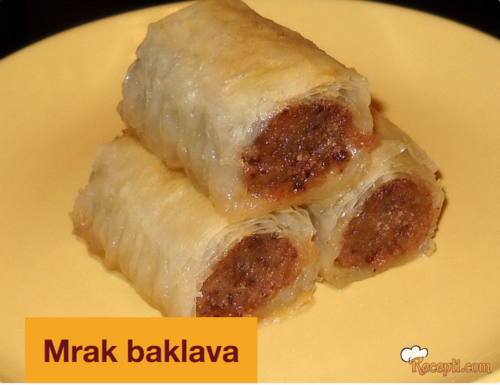
Three rolls of dark baklava (in Bosnian, Croatian, and Serbian: "mrak
baklava"), from a recipe website
https://www.recepti.com/kuvar/kolaci/13000-mrak-baklava
Apr 27, 2023
Moss descends from Proto-Indo-European *meus-,
something like this:
🔊 moss-from-PIE-meus.wav
A related form of the same root (the zero-grade) *mus-o-
🔊 PIE-meus-to-PIE-muso.wav
descended into Ukrainian мох mokh:
🔊 PIE-muso-to-Ukrainian-mox.wav

Picture of a clear plastic bag of Sphagnum Moss, from a Ukrainian
online gardening shop. The large text on the label reads "mokh
sphagnum", in Cyrillic script. Source:
https://gileya.com.ua/product/moh_sfagnum_karpatskij
The same root also descended into Bosnian, Croatian, and Serbian mahovina:
🔊 PIE-muso-to-Bosnian-mahovina.wav
Apr 28, 2023
See Maggot, above.
Mother descends from Proto-Indo-European *meh₂tḗr
[maté:r], earlier [meħté:r], something like this:
🔊 mother-from-PIE-meh2ter.wav
*meh₂tḗr also developed into Persian مادر modar:
🔊 PIE-meh2ter-to-Persian-modar.wav
and related forms in most if not all other Indo-European languages.
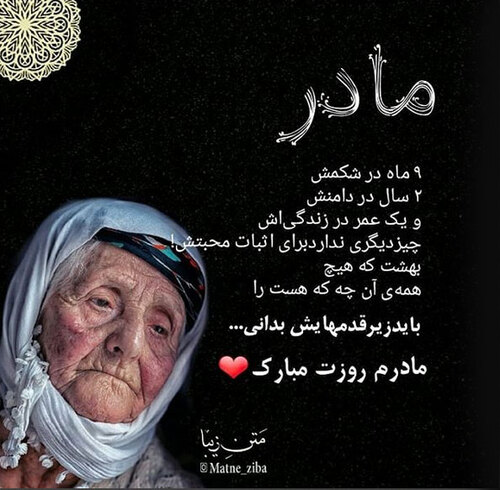
Photograph of an elderly woman, with a poem in Persian script honoring
and expressing love for the author's mother. The heading, in large
Persian script, says "modar", meaning mother. Source:
https://khabarsearch.ir
May 03, 2023
Mo(u)ld descends from Proto-Indo-European *ml̥h₂-téh₂
[ml̩:teħ], something like this:
🔊 mould-from-PIE-mlh2teh2.wav
*ml̥h₂-téh₂ may be related to the root *melh₁-
(though the contrast between *h₁ and *h₂ makes
this a little problematic, unless there was a variation or neutralization)
which also lies behind "meal" and "mill". The derived form *ml̥h₂-tó-
developed into Sanskrit and Hindi मृदा mrda “soil, clay”:
🔊 PIE-mlh2dh-to-Sanskrit-mrda.wav
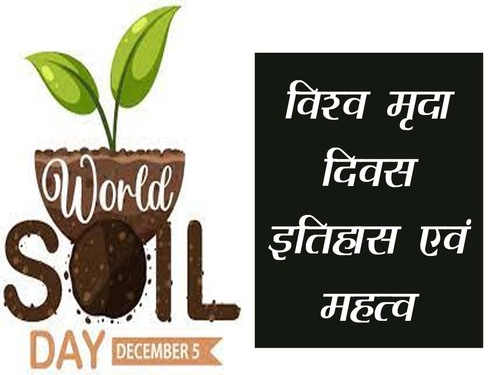
On the left, two green leafy shoots arising from a semicircular ball
of soil. Beneath it, the words "World Soil Day December 5th", with
"Soil" written in brown soil-like lettering. On the right, a Hindi
phrase, the first three words of which mean "World Soil Day". The second
word, soil, is pronounced mrda. From a Hindi educational
website https://www.mpgkpdf.com/
May 05, 2023
Mourn descends from Proto-Indo-European *mer
something like this:
🔊 mourn-from-PIE-mer.wav
The prefixed form of that root, *smer, developed into the stem
of Sanskrit स्मरति smarati “remember”:
🔊 PIE-smer-to-Sanskrit-smarati.wav
and Persian شمردن shemordan “to count”:
🔊 PIE-smer-to-Persian-shemordan.wav
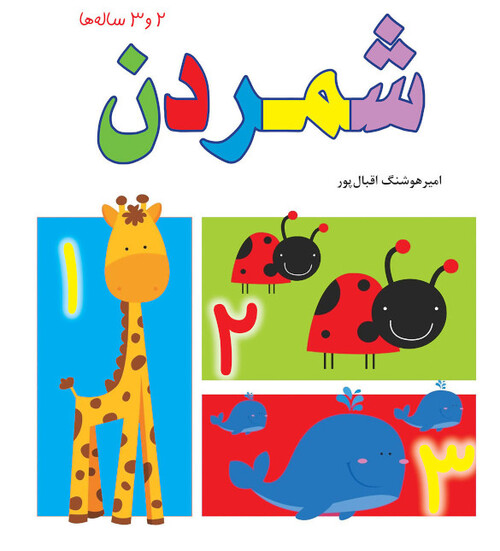
Detail from a Persian children's poster. The title "counting" (shemordan)
is written in Persian in large, multicolored letters. Below it are three
panels: at left, one containing a drawing of a giraffe and the numeral 1
in Arabic lettering; on the upper right, two ladybirds and the numeral 2
in Arabic lettering; and on the lower right, three whales and the
numeral 3 in Arabic lettering. The web page from which this was
downloaded now appears to be a dead link.
(https://dani.ir/store/products/detail/18848)
May 09, 2023
Mouse descends from Proto-Indo-European *muh₁s-
[mu:s], something like this:
🔊 mouse-from-PIE-muh1s.wav
The same root developed into the Persian موش mush:
🔊 PIE-muh1s-to-Persian-muS.wav
Similar forms are found in Sanskrit मूष् mūṣ, Anglo-Saxon mūs,
Latin mūs, West Frisian mûs etc., showing how
little/slowly this word has changed in thousands of years.
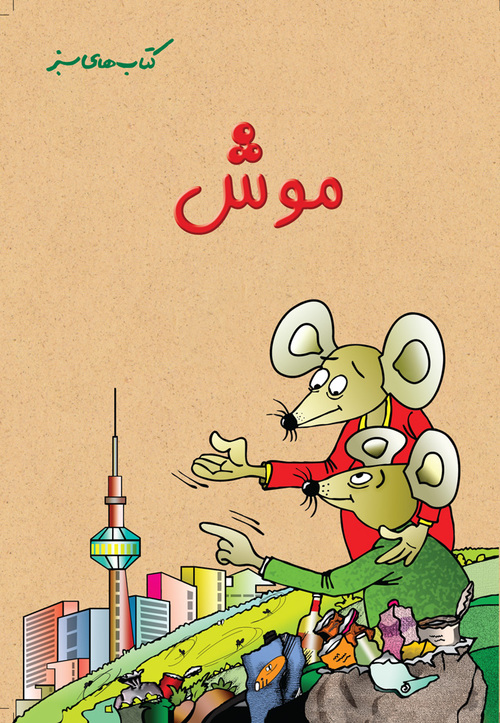
Cover of a Persian elementary school book called Mouse, by Fariba
Hamtian. The picture shows two cartoon-like mice surrounded by garbage,
on a hillside overlooking a modern city with high-rise buildings.
May 10, 2023
The plural form mice comes, via Anglo-Saxon mȳs
(ȳ is like German ü), from Proto-Germanic *musi-,
the [u] being affected by the following [i], a process termed i-umlaut
by historical linguists. The ultimate source is Proto-Indo-European *muh₁s
[mu:s], like this (listen):
🔊 https://www.ancientsounds.net/eastern-origins/mice-from-PIE-muh1s.wav
Feb 21, 2024
Ancient Greek μέγας [megas], "great", came from (and is a passable model for) Proto-Indo-European *meǵh₂. Listen: 🔊 AncientGreek-megas-from-PIE-megh2.mp3
English much also descends from Proto-Indo-European *meǵh₂, via Anglo-Saxon micel and Proto-Germanic *mekila- (here, just [meki] ... I have to get rid of the [l] somewhere along the line). Listen: 🔊 much-from-PIE-megh2.mp3Mar 25, 2021
The Anglo-Saxon ancestor of much, micel, survives today in place-names such as Meikle Ferry (Scotland), Mickle Fell (County Durham), Micheldever (Hampshire), and in the idiom "many a little makes a mickle". I learned that idiom as a child in an alternative form, "many a mickle maks a muckle" (in a pseudo-Scottish accent), but that doesn't make sense because mickle and muckle mean the same thing i.e. much.
Murder descends from Proto-Indo-European *mŕ-to-
[mr̩to], something like this:
🔊 https://www.ancientsounds.net/murder-from-PIE-mrto.wav
*mŕ-to- is from the root *mer-
🔊 https://www.ancientsounds.net/PIE-mrto-from-PIE-mer.wav
*mer- also developed into Persian مردن mordan “to die”
🔊 https://www.ancientsounds.net/PIE-mer-to-Persian-mordan.wav
Other cognates include mortal, Latin mortuus, and
Romani mer.
May 11, 2023
Nail comes from Proto-Indo-European *h₃nogʷʰ
[ŏ̥nogʷʱ], something like:
🔊 https://www.ancientsounds.net/nail-from-PIE-h3nogwh.wav
The pronunciation of *h₃ as an unstressed vowel like [ŏ] is
suggested by its development into Ancient Greek ὄνυξ (onyx),
Latin unguis (which developed into French ongle),
and Romani [wundʒia].
*h₃nogʷʰ developed into Persian ناخن nakhon,
in which *h₃ was lost:
🔊 https://www.ancientsounds.net/PIE-h3nogwh-to-Persian-naxon.wav

Image: Fingernails in light pink nail polish with a stylized cat's
face painted in black on each one. In the lower part of the figure is a
caption in black Persian script, below which is a larger caption in
white Persian script against a brown background. The second word from
the right, picked out in a dark red ellipse, is the Persian word
"nakhon", meaning nail. From an Iranian nail art website https://naznakhon.ir/461/make-childrens-nails-so-beautiful/
May 12, 2023
Name comes from Proto-Indo-European *h₃néh₃men
[ŏ̥no:men], something like:
🔊 https://www.ancientsounds.net/name-from-PIE-h3neh3men.wav
The pronunciation of *h₃ as an unstressed vowel like [ŏ] is
suggested by its development into Ancient Greek ὄνομα onoma
(but this is debated).
*h₃néh₃men developed into Persian نام naam,
in which *h₃ was lost:
🔊 https://www.ancientsounds.net/PIE-h3neh3men-to-Persian-naam.wav
May 15, 2023
Here's Alana on Wikitongues introducing herself in Ossetian, an Iranian
language related to (ancient) Scythian:
🔊 https://www.ancientsounds.net/eastern-origins/misc/Alana-intro.wav
Can you understand what she says?
Mar 22, 2024
Narrow comes from Proto-Indo-European *ner,
something like:
🔊 https://www.ancientsounds.net/narrow-from-PIE-ner.wav
*ner also developed into Sanskrit नृत्य nrtya “dance”,
which also survives in Hindi:
🔊 https://www.ancientsounds.net/PIE-ner-to-Sanskrit-nrtya.wav

Image: A web page with a large heading in Hindi script, meaning "Folk
Dances of Maharashtra". The final word, ringed in a red ellipse, is the
Sanskrit and Hindi word nrtiya, "dances". Originally from
https://www.gktimer.in/2021/09/traditional-folk-dances-of-maharashtra-in-hindi.html,
but this appears to be a dead link.
May 16, 2023
Navel comes from #Proto-Indo-European *h₃nobʰ-l-on-
[onóbʰlon], something like:
🔊 https://www.ancientsounds.net/navel-from-PIE-h3nobhlon.wav
*h₃ as an unstressed [ŏ] is suggested by its outcomes in Ancient
Greek omphalós and Latin umbilicus.
*h₃nobʰ- developed into Sanskrit नभ्य nabhya
(hence *bʰ, though *h₃ was lost):
🔊 https://www.ancientsounds.net/PIE-h3nobh-to-Sanskrit-nabhya.wav
and Persian ناف naf:
🔊 https://www.ancientsounds.net/PIE-h3nobh-to-Persian-naf.wav
May 17, 2023
Lubotsky (REF) associates the meaning "hub of a wheel" with this word too.
Nest, a place of sitting, comes from Proto-Indo-European
*ni-sd-o (here pronounced [nizdo]), something like:
🔊 nest-from-PIE-nizdo.wav
The stem *sd is a form of *sed, “sit”, which also lies
behind seat, set etc. (See entries below.)
*ni-sd-o developed into Sanskrit नीड nida:
🔊 PIE-nizdo-to-Sanskrit-niiDa.wav
which developed into Hindi नीड़ nir:
🔊 Sanskrit-niiDa-to-Hindi-nir.wav
Jun 05, 2023
*ni-sd-o also led to Pashto ناست nast “seated,
sitting”:
🔊 https://www.ancientsounds.net/eastern-origins/PIE-nizdo-to-Pashto-nast.wav
and Bosnian, Croatian and Serbian gnijezdo “nest”:
🔊 https://www.ancientsounds.net/eastern-origins/PIE-nizdo-to-BCS-gnijezdo.wav
Feb 22, 2024

Image: Cover of a book of children's poems called "Niir Sabhi ka
Pyara Hai", by Aparna Sharma. The first word of the title, niir,
means "nest". From Indian online bookshop
https://www.exoticindiaart.com/book/details/book/need-sabhi-ka-pyara-hai-collection-of-children-s-poems-mze314/
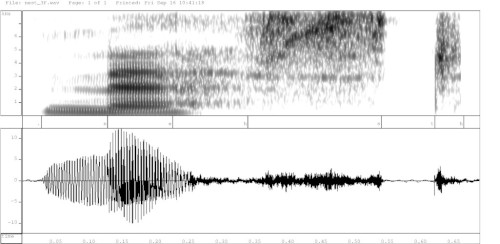
Studying spectrograms of 10's of tokens of nest, in English, Flemish and German. The Southern British English ones show substantial devoicing in the latter 40-50% of the vowel (the image above is typical), i.e. [nehst]. US, not so much. German and Flemish, not at all.
Sep 16, 2022
Nowruz is the Persian New Year festival at the Spring Equinox. Nowruz
means "new light"; now (pronounced like English "no") comes from
Proto-Indo-European *neu-io, something like this:
🔊 PIE-neuio-to-Persian-noo.wav
And روز ruz descends from Proto-Indo-European *leuk-
[lɘʊk]:
🔊 PIE-leuk-to-Tajik-ruz.wav
English new and "light" are from the same roots, *neu-io
and *leuk- :
🔊 new-from-PIE-neuio.wav
🔊 light-from-PIE-leuk.wav
(See also "light" above)
Mar 20, 2023
Night comes from Proto-Indo-European *nokʷt-,
something like this (listen):
🔊 night-from-PIE-nokwt.wav
*nokʷt- also developed into Sanskrit नक्तम् naktam:
🔊 PIE-nokwt-to-Sanskrit-naktam.wav
and Lithuanian naktis:
🔊 PIE-nokwts-to-Lithuanian-naktis.wav

Image: A cartoon-like poster from Kaunas Zoo, advertising "Zoo naktis" (Zoo night).
Jun 07, 2023
MORE ON THE GREAT VOWEL SHIFT: THERE AND BACK AGAIN
One reason why English spelling looks odd to people literate in other languages is that the pronunciation of long vowels has changed radically since Medieval times, e.g. "igh" is pronounced [aɪ], not [ɪg].Jun 24, 2022
(Older post:)
English nine [naɪn] comes from Middle/Old English [ni:n], which is from Proto-Germanic *nigon (perhaps [niɣɵn]), from Proto-Indo-European *h₁newh₁n̩/m (Mallory/Adams) or *(h₁)néwn̩ (Ringe): I'm going with [neun] or [neum]. Listen:
🔊 http://phon.ox.ac.uk/jcoleman/nine-from-PIE-newhm.mp3
It's not quite right, because [naɪn] should go through [neɪn] on the way to [ni:n], but this simulation goes via something like [noɪn]. But it's a start.Nov 21, 2019
(Improved simulations:)
Nine comes from Proto-Indo-European *h₁néun,
something like this (listen):
🔊 nine-from-PIE-h1neun.wav
(Here I'm following Kroonen's reconstruction *h₁néun, which is consistent with Ringe's somewhat less committal *(h₁)néwn̩ and different from (Mallory and Adams's *h₁newh₁n̩/m)
*h₁néun also developed into Persian نُه noh:
🔊 PIE-h1neun-to-Persian-noh.wav
Evidence for an initial *h₁ "laryngeal" comes from its
development into a vowel in Ancient and Modern Greek εννέα ennéa:
🔊 PIE-h1neun-to-AncientGreek-ennea.wav
Additional evidence for an initial *h₁ "laryngeal" comes from
its development into a vowel in Armenian ինը ina:
🔊 PIE-h1neun-to-Armenian-ina.wav

Image: A graphic in Persian that says عدد 'adad (number - an
Arabic loan-word) نه noh (nine). Source:
https://www.aparat.com/v/NasUZ/%D8%A7%D9%86%DB%8C%D9%85%DB%8C%D8%B4%D9%86_%D9%88_%D8%B4%D8%B9%D8%B1_%D8%A2%D9%85%D9%88%D8%B2%D8%B4_%D8%B9%D8%AF%D8%AF9_%D9%86%D9%87
Jun 8-9, 2023
Nit comes from Proto-Indo-European *ḱh₃nid-
[kɵníd], something like this (listen):
🔊 nit-from-PIE-kh3nid.wav
*ḱh₃nid- also developed into Armenian անիծ anits:
🔊 PIE-kh3nid-to-Armenian-anits.wav
Jun 09, 2023
Nose comes from Proto-Indo-European *nh̥₂-s-eh₂-
[nasḁ:], something like this (listen):
🔊 nose-from-PIE-nh2seh2.wav
*nh̥₂-s-eh₂- continued almost unchanged, losing the
final vowel, into Punjabi ਨਾਸ naas “nostril”:
🔊 PIE-nh2seh2-to-Punjabi-naas.wav
Hindi नाक naak developed from a derived form *nas-ka:
🔊 PIE-nh2s-to-Hindi-nak.wav
as did Romani nak:
🔊 PIE-nh2s-to-Romani-nak.wav

The Hindi caption reads "Dai naak fadakna"; the middle word naak
means "nose" and the whole phrase means "right nostril". From
https://www.onlinesayta.com/dai-naak-fadakna/ but this seems to be a
broken link.
Jun 12, 2023
Now comes from Old English nu, which comes
(almost unchanged) from Proto-Indo-European *nu-, something like
this (listen):
🔊 now-from-PIE-nu.wav
Proto-Indo-European *nu- survived almost unchanged into Sanskrit
नु nu:
🔊 PIE-nu-to-Sanskrit-nuu.wav
Some words change very little over long timescales, implying that
transmission across generations must be very robust!
Jun 13, 2023
Milla Havanka @immersfer@spore.social replied:
In Swedish, it's still "nu" 👍
Leicester Trev @Writertrev commented:
prompted me to read https://en.wikipedia.org/wiki/Proto-Indo-European_language.
Off comes from Proto-Indo-European *h₂ep-o
[apó] (a recording of Modern Greek απο), something like this (listen):
🔊 off-from-PIE-apo.wav
The descent of [f] from *p is a nice example of Grimm's Law.
*h₂ep-o may have been pronounced earlier as [ħapo]:
🔊 PIE-h2epo.wav
*h₂ep-o [apó] developed into Sanskrit अप apa:
🔊 PIE-apo-to-Sanskrit-apa.wav
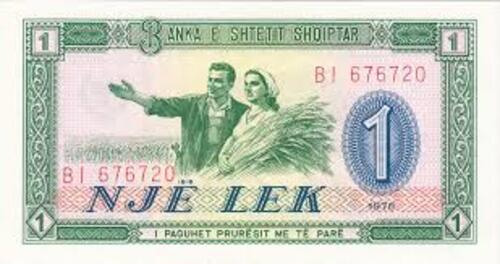
An Albanian banknote bearing the text "Një Lek", meaning "One Lek".
Jun 15, 2023
Two other forms of *h₁ói- are found in "eastern"
Indo-European languages, *h₁ói-kos [hoikos] and *h₁ói-wos
[hoiwos]. *h₁ói-kos developed into Mittanian aika,
borrowed into (non-Indo-European) Hurrian 𒀀𒄿𒅗 aika:
🔊 https://www.ancientsounds.net/eastern-origins/PIE-h1oikos-to-Hurrian-aika.wav
*h₁ói-kos also developed into [ek] in many Indian
languages, e.g. Assamese এক ek:
🔊 https://www.ancientsounds.net/eastern-origins/PIE-h1oikos-to-Assamese-ek.wav
*h₁ói-wos [hoiwos] lies behind Pashto یو yau:
🔊 https://www.ancientsounds.net/eastern-origins/PIE-h1oiwos-to-Pashto-yau.wav
and Ancient Greek οἶος hoios “only”:
🔊 https://www.ancientsounds.net/eastern-origins/PIE-h1oiwos-to-AncientGreek-hoios.wav
Jan 23, 2024
Ore comes from Proto-Indo-European *h₂éi-es-
[ħɐĭes], meaning "metal", "copper", or "iron" in various daughter
languages and at various different prehistorical eras, something like this
(listen):
🔊 ore-from-PIE-h2eies.wav
*h₂éi-es- also developed into Sanskrit अयस् ayas:
🔊 PIE-h2eies-to-Sanskrit-ayas.wav
and Persian ایخشت ayox(šot)
Jun 16, 2023
Other comes from Proto-Indo-European *h₂en-tero-
[antero], something like this (listen):
🔊 other-from-PIE-h2entero.wav
*h₂en-tero- also developed into Sanskrit अन्तर antara:
🔊 PIE-h2entero-to-Sanskrit-antara.wav
Latin alter:
🔊 PIE-h2entero-to-Latin-alter.wav
Latvian Otrdiena “Tuesday” i.e. “other (i.e. second) day”:
🔊 PIE-h2entero-to-Latvian-Otrdiena.wav
Old English ōþer (other) also meant "second".
Jun 19, 2023
Otter comes from Proto-Indo-European *ud-r-o-,
something like this (listen):
🔊 otter-from-PIE-udro.wav
The stem of *ud-r-o-, *ud-, is derived from *wed-,
"water":
🔊 PIE-ud-from-PIE-wed.wav
*ud-r-o- also developed into Sanskrit उद्र udra:
🔊 PIE-udro-to-Sanskrit-udra.wav
and almost identically into Lithuanian udra:
🔊 PIE-udro-to-Lithuanian-udra.wav
Cf. Latin lutra, Greek hydra

An otter lifts it head from the water, face-on to the viewer and mouth
open. The heading, "Ūdra", means "otter" in Lithuanian. Source:
https://www.15min.lt/tema/udra-5465
Jun 21, 2023
Johan Schalin, PhD (@iohannan@lingo.lol) commented:
Further reading on the different derivatives of this root: https://www.researchgate.net/publication/277258363_Germanskt_wator_'vatten'_namnet_Vattern_och_fornsvenskt_vaetur_publisher's_offprint
Out comes from Proto-Indo-European *ūd ([u:d],
though this simulation is not very long, more like [ud]), something like
this (listen):
🔊 out-from-PIE-ud.wav
*ūd also developed into the Classical Persian prefix ز- zu-:
🔊 PIE-ud-to-ClassicalPersian-zu.wav
The simulation involves a purely acoustic version of metathesis from [uz]
to [zu], via a kind of [u]-colored [z] along the way.
Jun 22, 2023
Oven comes from Proto-Indo-European *h₂up-no,
from *h₂ukʷ- [ħukʷ], something like this (listen):
🔊 oven-from-PIE-h2ukw.wav
*h₂ukʷ- also developed into the Sanskrit उखा ukha:
🔊 PIE-h2ukw-to-Sanskrit-ukha.wav
In those early times, the word simply refers to some kind of cooking pot.
Old Armenian ակութ akutʿ, Ancient Greek ἰπνός ipnós
are from the same root.
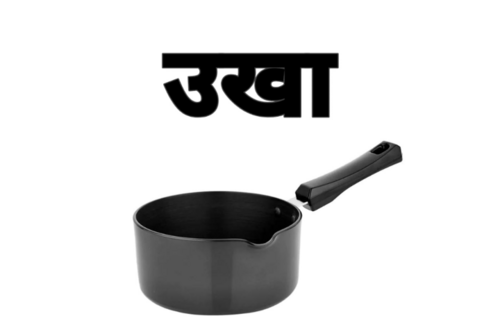
A modern black metal cooking pan, with the Sanskrit word "ukha"
above. Cropped from https://www.facebook.com/SanskritKaUday/photos/a.359774734578692/551581458731351/
Jun 23, 2023
Over comes from Proto-Indo-European *h₁uper-
[hʉpeɾ] (the comparative form of *h₁upo “up”), something
like this (listen):
🔊 over-from-PIE-h1uper.wav
*h₁uper- also developed into Sanskrit उपरि upari:
🔊 PIE-h1uper-to-Sanskrit-upari.wav
and Persian ابر abar:
🔊 PIE-h1uper-to-Persian-abar.wav
as well as Ancient Greek ὑπέρ (hyper) and Latin super.
Jun 27, 2023
Owe and own come from
Proto-Indo-European *(h₂e)-h₂oik-
[ɐħɑik̟ʲ], something like this (listen):
🔊 owe-from-PIE-h2eh2oik.wav
🔊 own-from-PIE-h2eh2oik.wav
(The second vowel should probably be more rounded.)
The related form *h₂e-h₂iḱ- [ɐħik̟ʲ] developed
into Sanskrit ईष्टे ishte:
🔊 PIE-h2ik-to-Sanskrit-iishte.wav
Jun 28, 2023
Ox come from Proto-Indo-European *Huksen
[ɦuksɘn], something like this (listen):
🔊 ox-from-PIE-Huksen.wav
The initial *H is debated, but my simulation has an [ɦ] anyway, so I've
just left it like that.
*Huksen also developed into Sanskrit उक्षन् ukshan:
🔊 PIE-Huksen-to-Sanskrit-ukSan.wav
A black temple bull resting on the ground, in Udipi, India. From
https://commons.wikimedia.org/wiki/File:A_sacred_Udipi_temple_Muth_bull(24-1-08)Udipi(India).JPG
Jun 29, 2023
Find and path both come from
Proto-Indo-European *pent-/*pont-, by different routes.
Find is inherited from *pént-e-, and shows the f
< *p development expected by Grimm's Law (listen):
🔊 find-from-PIE-pente.wav
Path was borrowed in Proto-Germanic from *patha,
from some (uncertain) Iranian language:
🔊 path-from-ProtoGermanic-patha.wav
Proto-Germanic and Iranian *patha "path" comes from
Proto-Indo-European *pont-eh₁-s [ponte:s]:
🔊 Iranian-patha-from-PIE-ponteh1s.wav
*pont-eh₁-s also developed into Vedic
Sanskrit पन्थासो panthaso:
🔊 PIE-ponteh1s-to-Sanskrit-panthaaso.wav
which survives as a learned word in various forms in modern Indic
languages, e.g. Bengali পন্থা pontha:
🔊 Sanskrit-panthaa-to-Bengali-pontha.wav

Imaginative painting in which a person stands before a twisting and
branching path. The heading in Devanagari script, जीवन पथ "jeevan path",
means "path of life" in Hindi. Screenshot portion of a blog post,
https://lekhaniji.blogspot.com/2020/06/blog-post_92.html. Original
image source is unknown.
Jun 30, 2023
Queen comes from Proto-Indo-European *gwen-,
something like this (listen):
🔊 queen-from-PIE-gwen.wav
In many "eastern" I-E languages, *g often develops into [ʤ], later [ʒ]
then [z], e.g. Sanskrit ग्ना gnaa “goddess”:
🔊 PIE-gwen-to-Sanskrit-gnaa.wav
Balochi جن jan “woman”:
🔊 PIE-gwen-to-Balochi-jan.wav
Bosnian žena “woman”:
🔊 PIE-gwen-to-Bosnian-Zena.wav
Persian زن zan “woman”:
🔊 PIE-gwen-to-Persian-zan.wav

Still from an Iranian movie entitled "Zan ha fereshteh", Women are
Angels. (Source: movie information listing at cinema site
https://www.sourehcinema.com/Title/Title.aspx?id=138605290018)
Jul 03, 2023
Quell and kill come from
Proto-Indo-European *gʷelh₁- [gwele̥], something like this
(listen):
🔊 quell-from-PIE-gwelh1.wav
*gʷelh₁- also developed into Bosnian-Croatian-Montenegrin-Serbian
žaoka “sting, barb”
🔊 PIE-gwelh1-to-Bosnian-Zaoka.wav
The same root *gʷelh₁- developed into Ancient Greek βέλεμνον belemnon,
“javelin, dart”, which gives its name to fossil belemnites:
🔊 PIE-gwelh1-to-AncientGreek-belemn.wav
 |
 |
Above: Poster for the 1973 movie "The Sting", listed on Serbian TV
channel "Aladin" with the Bosnian-Croatian-Montenegrin-Serbian
translated title "Žaoka". Cropped screenshot from
https://tv.aladin.info/4605-zaoka
Below: Photograph of a fossil belemnite, Hibolites semisulcatus, from
the Staatliches Museum für Naturkunde Stuttgart. Image from
https://upload.wikimedia.org/wikipedia/commons/9/99/Hibolites_semisulcatus.JPG
Attribution: Ghedoghedo, CC BY-SA 3.0
<https://creativecommons.org/licenses/by-sa/3.0>, via Wikimedia
Commons
Jul 04, 2023

One of many quern stones found at the Clachtoll broch archaeological site, Assynt, Sutherland, west coast of Scotland. Image source: Shared by Zana B in a Tripadvisor review https://www.tripadvisor.co.uk/Attraction_Review-g319813-d4992165-Reviews-Clachtoll_Broch-Lochinver_Caithness_and_Sutherland_Scottish_Highlands_Scotland.html
Jul 05, 2023
More on quern: a survival of Proto-Indo-European *h₂
in Pashto?
As posted before, quern comes from Proto-Indo-European *gʷerh₂-nu-.
*gʷerh₂- also developed into [gur] in Pashto and Punjabi:
🔊 https://www.ancientsounds.net/PIE-gwerh2-to-Punjabi-gur.wav
This recording of Pashto ګور [gu:rħ] ends in a voiceless pharyngeal
fricative:
🔊 https://www.ancientsounds.net/Heston-Pashto-gurH-heavy.wav
I don't know if this is normal, but Iranian languages do preserve some PIE
"laryngeals" as consonants.
(From https://dsal.uchicago.edu/cgi-bin/app/heston_query.py?qs=%DA%AB%D9%88%D8%B1&searchhws=yes#)
Jul 18, 2023
I've used the recording of Pashto ګور [gu:rħ], with its final pharyngeal fricative, to recompute the simulation of *gʷerh₂- at https://www.ancientsounds.net/PIE-gwerh2.wav and the trajectories to Punjabi ਗੁਰ gur, Ancient Greek βάρος baros, and Latin gravis that come from it.
Nov 28, 2023
In the phrase "the quick and the dead", quick
means "alive". It comes from Proto-Indo-European *gʷi-gʷh₃-(u)ó-,
like this:
🔊 quick-from-PIE-gwigwh3o.wav
*gʷi-gʷh₃-(u)ó- also developed into Persian
جیوه jiive “quicksilver, mercury”:
🔊 PIE-gwigwh3o.wav
and Lithuanian gyvo “alive”:
🔊 PIE-gwigwh3o-to-Lithuanian-gyvo.wav
Variant form *gʷiéh₃-uo- developed into Modern Greek ζώο
zo-o “animal”:
🔊 PIE-gwieh3uo-to-Greek-zooo.wav

A chemistry beaker containing mercury (quicksilver), superimposed with
the Persian word jiive, mercury. From an Iranian chemistry website,
jahaneshimi.com
Jul 06, 2023
The archaic word quoth, meaning "said", comes from
Proto-Indo-European *gʷet-, like this (listen):
🔊 quoth-from-PIE-gweT.wav
"Quote" looks similar, but is unrelated. The related word "bequeath" also
comes from *gʷet- :
🔊 bequeath-from-PIE-gweT.wav
*gʷet- (or a similar-but-not-identical form, *gʷed-)
also developed into Sanskrit गदति gad(ati), "to speak":
🔊 PIE-gweT-to-Sanskrit-gad.wav
Jul 07, 2023
The English dialect phrase "chinny reckon", meaning "I
don't think that's right", is a fossilized remnant of Old and Middle
English iċ ne recce (I don't reckon), as in e.g. A Passion of St
Margaret, l. 222 "for ic ne recce þise leasere þrowunge" (I don't
care about this false suffering). For further discussion of the usage 'ch
for I, see I above.
Here's an audio simulation:
🔊 https://www.ancientsounds.net/chinny-reckon-from-ic-ne-recce.wav
The modern phrase is briefly but correctly explained in a
section of this podcast about West Country dialect:
https://www.youtube.com/watch?v=2MaLl191cOE&t=184s

In Middle
English, recchen "to care for, to take heed of, to pay
attention to" was used extensively in negative polarity phrases, e.g.
"Of my lif ic ne recche" (I don't care about my life.) From the poem "On hire is al", Cambridge, Trinity College B.14.39 (323)
Jul 14, 2023; extended Aug 15, 2024
Reck(less) comes
from Proto-Indo-European *h₂roh₁ǵ eh₂
[ɐ̥ro:gɐħ] “care”, like this (listen):
🔊 https://www.ancientsounds.net/reckless-from-PIE-h2roh1geh2.wav
*h₂roh₁ǵ eh₂ also developed into Doric Greek
ἀρωγά aroga:
🔊 https://www.ancientsounds.net/PIE-h2roh1geh2-to-DoricGreek-aroga.wav
According to Beekes, *h₂roh₁ǵ -eh₂- is related
to *h₃rēǵ- [ŏ̥reg] (see “reach”), from which comes
Persian راست rast “straight, right”:
🔊 https://www.ancientsounds.net/PIE-h3reg-to-Persian-raast.wav
Jul 14, 2023; corrected Feb 26, 2024
Red comes from Proto-Indo-European *h₁roudʰ-
[hroʊdʱ], like this (listen):
🔊 https://www.ancientsounds.net/red-from-PIE-h1roudh.wav
*h₁roudʰ- also developed into Sanskrit रुधिर rudhira
"blood":
🔊 https://www.ancientsounds.net/PIE-h1roudh-to-Sanskrit-rudhira.wav
Ancient Greek ἐρυθρός eruthrós, with *h₁ > [e]:
🔊 https://www.ancientsounds.net/PIE-h1roudh-to-AncientGreek-eruthros.wav
Initial [h] is still frequently heard in Latvian ruds (from
variant *h₁reudʰ-):
🔊 https://www.ancientsounds.net/PIE-h1reudh-to-Latvian-ruds.wav

Medical illustration of red blood cells (greatly magnified) in a
cutaway of a blood vessel. A heading reads "Blood" (in English), with
the Hindi and Sanskrit word "rudhira", meaning blood or
blood-red, in Devanagari letters. From a YouTube image
https://i.ytimg.com/vi/5gwmxWWhv74/maxresdefault.jpg
Jul 17, 2023
(Older post)
Laryngeals in Lithuanian? Here's an example of raudona from Proto-Indo-European *h₁reudh-. Listen to this first syllable:
🔊 http://phon.ox.ac.uk/jcoleman/RUBER-ENLT014-raudona-hreud.wav Downloaded from https://50languages.com/phrasebook/lesson/en/lt/14/ and converted to .wav. Unlike my other demos, these have not been manipulated at all.

Something very similar in Latvian ruds (also meaning red, also from Proto-Indo-European *h₁reudh-), which is rather like [hruds]; listen 🔊 http://phon.ox.ac.uk/jcoleman/Latvian-ruds-M.wav
Nov 24, 2020It seems unlikely that the initial [h] in such examples is actually a reflex of *h₁; it is not consistently present in this Lithuanian word and could well just be aerodynamic effect of delayed voicing of the initial [r]. But it nicely exemplifies what the *h₁r in *h₁reudh- might have sounded like.
Here are *h₁reudh- red > Ancient Greek ἐρυθ(ρός)
🔊 PIE-h1rewdh-to-Greek-eruth.wav*h₃ligos > Ancient Greek ὀλίγος
🔊 PIE-h3ligos-to-Ancient-Greek-oligos.wav
Jun 29, 2022

Image: A Persian web page about herbal medicine. The caption translates as "Burping: why do we burp and how can it be treated?" The Persian word "arogh", meaning "burp", is highlighted. Source: https://fa.parsiteb.com/wp-content/uploads/2016/10/arogh.jpg
Jul 19, 2023
Rib comes from Proto-Indo-European *h₁rebʰ-
[hreɛbʱ], like this (listen):
🔊 https://www.ancientsounds.net/rib-from-PIE-h1rebh.wav
*h₁rebʰ- also developed into Bosnian, Croatian,
Montenegrin and Serbian rebro:
🔊 https://www.ancientsounds.net/PIE-h1rebh-to-Bosnian-rebro.wav
and Ancient Greek ἐρέφω erepho “roof”, with initial *h₁
pronounced as the vowel [e]:
🔊 https://www.ancientsounds.net/PIE-h1rebh-to-AncientGreek-erepho.wav
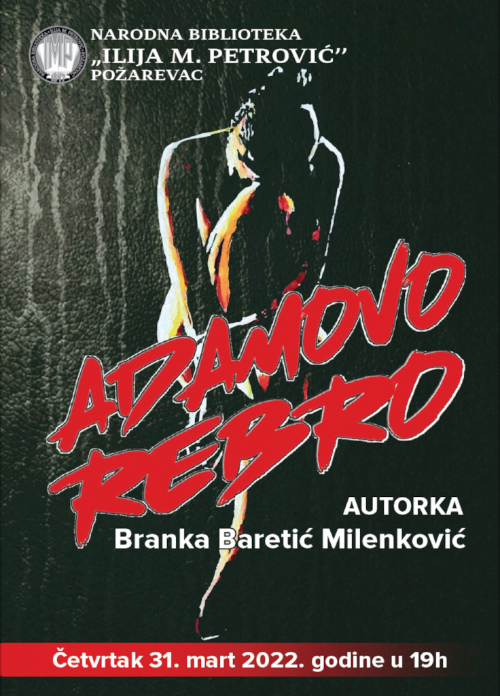
Book cover of "Adamovo Rebro" (Adam's Rib) by Branka Baretić
Milenković, made into a poster for a reading at Narodna Biblioteka
"Ilija M. Petrović", Požarevac, Serbia. Source:
https://www.bibliotekapo.org/
Jul 20, 2023
Right comes from Proto-Indo-European *h₃reǵ-to-
[ŏ̥regtʰo], like this (listen):
🔊 https://www.ancientsounds.net/right-from-PIE-h3regto.wav
The related form *h₃rēǵ-h₃ón- developed into
Sanskrit राजन् raajan “king, ruler”:
🔊 https://www.ancientsounds.net/PIE-h3regh3on-to-Sanskrit-raajan.wav
*h₃rēǵ- developed into Persian راست rast
“right”:
🔊 https://www.ancientsounds.net/PIE-h3reg-to-Persian-raast.wav
and Ancient Greek ὀρέγω orego “reach out”:
🔊 https://www.ancientsounds.net/PIE-h3reg-to-AncientGreek-orego.wav
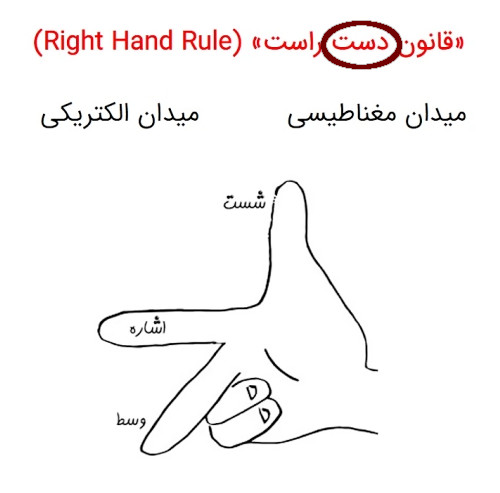
Diagram of the "Right Hand Rule" in Physics, from a Persian
educational website. The word for "right", raast, is circled. Source: https://static.cdn.asset.aparat.com/avt/16032470-1490-b__207276863.jpg
Gold coin of the Ancient British king Tasciovanos, from a numismatic website. The inscription reads TASCI (short for Tasciovanos) RICON. On some examples of this coin, the spelling of the second word is more like RIGON. RICON or RIGON meant "king" in Ancient British, and is a cognate of Sanskrit राजन् raajan, Latin rex, and German Reich, which are also descendants from *h₃rēǵ-. This coin is one of the oldest written texts in British, the Celtic language that later involved into Welsh.
Jul 31, 2023
Root comes from Proto-Indo-European *urd-i-,
like this (listen):
🔊 https://www.ancientsounds.net/root-from-PIE-urdi.wav
"Wort", as in e.g. "St John's wort", "ragwort", and German "Wurzel",
as in "mangelwurzel" are also from this Indo-European root. (Bad
pun intended.)
The related form *ured- developed into Persian ریشه risheh:
🔊 https://www.ancientsounds.net/PIE-ured-to-Persian-risheh.wav

Root system at the base of a shrub. The headline ریشه گیاه چیست؟
means "what is the root of a plant?" The rightmost word, "risheh",
meaning root, is highlighted in blue. From an Iranian educational
website, https://youc.ir/what-is-the-root-of-a-plant-called/
Aug 01, 2023
Rush (reed) comes from Proto-Indo-European *resg,
like this (listen):
🔊 https://www.ancientsounds.net/rush-from-PIE-resg.wav
*resg- developed into Sanskrit रज्जु rajju “rope”
🔊 https://www.ancientsounds.net/PIE-resg-to-Sanskrit-rajju.wav
A Sanskrit text by Baudhayana (800 BC, 500 years before #Pythagoras was
born) states:
दीर्घचतुरश्रस्याक्ष्णया रज्जु: पार्श्र्वमानी तिर्यग् मानी च यत् पृथग् भूते कुरूतस्तदुभयं करोति ॥
"A rope (rájju, रज्जु) stretched along the length of the diagonal produces an area which the vertical and horizontal sides make together."

Sanskrit manuscript by the Indian mathematician Baudhayana (800 BC)
presenting "Pythagoras' Theorem" long before Pythagoras was born. Image
source: https://pbs.twimg.com/media/E67PjYOXoAg6HAK.jpg
Aug 02, 2023
Salt comes from Proto-Indo-European *sh₂l-os
[salos], like this (listen):
🔊 https://www.ancientsounds.net/salt-from-PIE-sh2los.wav
*sh₂l-os developed into Bosnian so:
🔊 https://www.ancientsounds.net/PIE-sh2los-to-Bosnian-so.wav
(The same outcome in Serbian but not Croatian, which has a final -l, sol,
as on the lower right-hand side of the image.)
The variant form *seh₂l-s developed into Latvian sāls:
🔊 https://www.ancientsounds.net/PIE-seh2ls-to-Latvian-sals.wav
and Ancient Greek ἅλς [hals]:
🔊 https://www.ancientsounds.net/PIE-seh2ls-to-AncientGreek-hals.wav
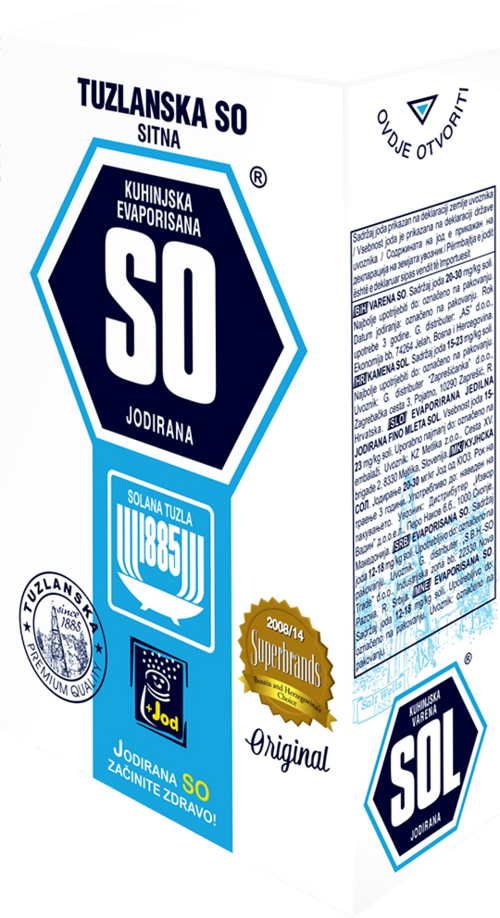
A box of cooking salt, from a Bosnian salt company in Tuzla, Bosnia
and Hercegovina. Image source https://solana.ba/kuhinjska-varena-so/
Aug 03, 2023
Salve comes from Proto-Indo-European *solp-,
like this (listen):
🔊 https://www.ancientsounds.net/salve-from-PIE-solp.wav
The related form *selp- developed into Ossetian царв tsarv
“clarified butter”:
🔊 https://www.ancientsounds.net/PIE-selp-to-Ossetian-tsarv.wav
The label on this photograph says "Iron Tsarv" in cyrillic letters. "Iron"
(pronounced Ih-ron, like "Iran" but with a rounded vowel in the second
syllable), means "Ossetian", and is cognate with "Iran".

Photograph of a jar of clarified butter, with the label "Iron Tsarv" in cyrillic letters. The jar is clear glass, so that the yellow butter inside is visible. From a Russian bakery website, www.ozon.ru
Sep 01, 2023
Same comes from Proto-Indo-European *somH-o-
[somo], like this (listen):
🔊 https://www.ancientsounds.net/same-from-PIE-somo.wav
The same root developed into Persian هم ham, meaning “also”:
🔊 https://www.ancientsounds.net/PIE-somo-to-Persian-ham.wav
Sep 04, 2023
Bonus simulation: a UK male pronunciation of same going
back to the US female (somewhat more archaic) pronunciation and then all
the way back to PIE *somH-o, as before.
🔊 https://www.ancientsounds.net/sameUK-from-PIE-somo.wav
Sep 05, 2023
"Sang" comes from Proto-Indo-European *songʷʰ-o-, like this
(listen):
🔊 https://www.ancientsounds.net/sang-from-PIE-songwh.wav
*songʷʰ-o- is derived from *sengʷʰ-e- “sing”:
🔊 https://www.ancientsounds.net/PIE-songwh-from-PIE-sengwh.wav
*sengʷʰ-e- developed into Prakrit 𑀲𑀁𑀖𑀇 sanghai “to
narrate”:
🔊 https://www.ancientsounds.net/PIE-sengwh-to-Prakrit-saMghai.wav
(Prakrit languages were vernaculars in India, distinct from
Sanskrit, from c. 3rd century BCE to 8th century CE.)
Sep 04, 2023
Sat comes from Proto-Indo-European *sod-, like
this (listen):
🔊 https://www.ancientsounds.net/sat-from-PIE-sod.wav
*sod- is derived from *sed- "sit":
🔊 https://www.ancientsounds.net/PIE-sod-from-PIE-sed.wav
*sed- developed into Sanskrit सीदति sid(ati):
🔊 https://www.ancientsounds.net/PIE-sed-to-Sanskrit-siidati.wav
Set and sit also come from *sed-:
🔊 https://www.ancientsounds.net/set-from-PIE-sed.wav
🔊 https://www.ancientsounds.net/sit-from-PIE-sed.wav
Sep 08, 2023
An earlier post:
Following on from "nest", sit comes from
Proto-Indo-European *sed, something like:
🔊 https://www.ancientsounds.net/sit-from-PIE-sed.wav
Set also comes from *sed-, something like this:
🔊 https://www.ancientsounds.net/set-from-PIE-sed.wav
Seat comes from *sed-i-, something like this:
🔊 https://www.ancientsounds.net/seat-from-PIE-sedi.wav
*sed also developed into Sanskrit सीदति sidati:
🔊 https://www.ancientsounds.net/PIE-sed-to-Sanskrit-siidati.wav
Jun 06, 2023
Say comes from Proto-Indo-European *sokʷ-eie
(here truncated to *sokʷ-e):
https://www.ancientsounds.net/say-from-PIE-sokwe.wav
*sokʷ-e(ie) is derived from *sekʷ-:
https://www.ancientsounds.net/PIE-sokwe-from-PIE-sekwe.wav
*sekʷ- developed into Sanskrit सच् sac-:
https://www.ancientsounds.net/PIE-sekwe-to-Sanskrit-sac.wav
For [kʷ] in word-final position, here's Tashlhit Berber [tχəznækʷ]:
https://www.phon.ox.ac.uk/jcoleman/txznakkw.wav
Thinking of those in the Morocco earthquake.
Sep 11, 2023
Sear comes from Proto-Indo-European *h₂sous-
[ɑ̥sous]:
https://www.ancientsounds.net/sear-from-PIE-h2sous.wav
*h₂sous- also developed into Persian خشک hoshk
“dry”:
https://www.ancientsounds.net/PIE-h2sous-to-Persian-xoSk.wav
... and Latvian sauss “dry”:
https://www.ancientsounds.net/PIE-h2sous-to-Latvian-sauss.wav
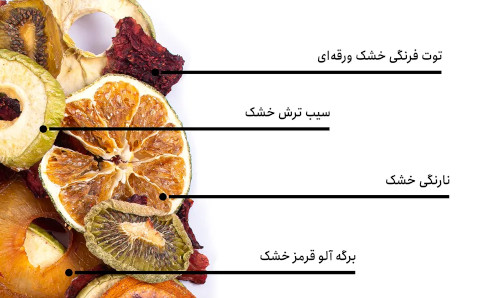
Slices of various dried fruits, from the website of Iranian retailer
barjil.com. A horizontal line to each type of fruit gives its name in
Persian; each of the names contains the Persian word خشک "hoshk",
meaning "dried".
Sep 13, 2023
Seed comes from Proto-Indo-European *seh₁-to-
[se:to], like this (listen):
https://www.ancientsounds.net/seed-from-PIE-seh1to.wav
Its stem *seh₁- [se:], "to sow", also developed into
Slovenian sejati:
https://www.ancientsounds.net/PIE-seh1-to-Slovenian-sejati.wav
... and Bosnian, Croatian, Montenegrin and Serbian sijati:
https://www.ancientsounds.net/PIE-seh1-to-BCS-sijati.wav

A person's hand is placing a row of small red beans into a shallow
trench in the soil of a garden. The heading "Kada i kako sijati
grah?" means "When and how to sow beans?" in
Bosnian-Croatian-Montenegrin-Serbian.
Sep 14, 2023
Sell comes from Proto-Indo-European *solh₁-éie-
([soleje] simulated here using French "soleil"!), like this
(listen):
https://www.ancientsounds.net/sell-from-PIE-solh1eie.wav
The related form *sl̥h₁- or *selh₁-possibly
(debatably) developed into the initial [sl] cluster of Bosnian, Croatian,
Montenegrin and Serbian slati “to send”. If so, like this:
https://www.ancientsounds.net/PIE-slh1-to-BCS-slati.wav
Sep 15, 2023
Seven comes from Proto-Indo-European *septm, like this
(listen):
🔊 https://www.ancientsounds.net/seven-from-PIE-septm.wav
*septm also developed into Latvian septiņi:
🔊 https://www.ancientsounds.net/eastern-origins/PIE-septm-to-Latvian-septini.wav
Sanskrit सप्तन् saptan:
🔊 https://www.ancientsounds.net/PIE-septm-to-Sanskrit-saptan.wav
Pashto هفته hapta “week”:
🔊 https://www.ancientsounds.net/eastern-origins/PIE-septm-to-Pashto-hapta.wav
and Persian هفت haft:
🔊 https://www.ancientsounds.net/PIE-septm-to-Persian-haft.wav
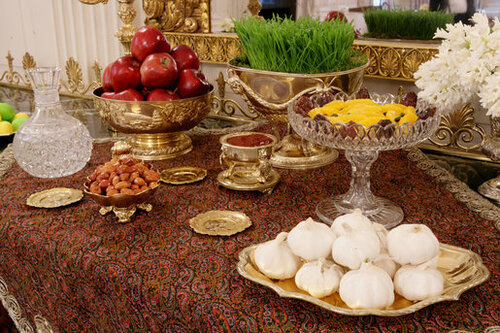
A table of "haft seen" i.e. "seven good things", traditionally made for Persian New Year. Picture from the US White House.
Sep 18, 2023; improved Feb 27, 2024
Sew comes from Proto-Indo-European *syuh₁-
[sju:], like this (listen):
🔊 https://www.ancientsounds.net/sew-from-PIE-siuh1.wav
*syuh₁- developed into Sanskrit सीव्यति sivyati:
🔊 https://www.ancientsounds.net/PIE-siuh1-to-Sanskrit-siivyati.wav
from which comes Urdu سینا siina:
🔊 https://www.ancientsounds.net/PIE-siuh1-to-Urdu-siina.wav
*syuh₁- also developed into Lithuanian siūti:
🔊 https://www.ancientsounds.net/PIE-siuh1-to-Lithuanian-siuti.wav
To sow seeds is from another root, for another day ...

Extract cropped from a website giving instructions about how "to sew
Easter eggs"; the heading, in Lithuanian, is "Siūti velykiniai
kiaušiniai". "Siūti" means "to sew". Picture is a stand with
four or more brightly patterned fabric-covered "eggs". Source: https://www.gami.lt/siuti-velykiniai-kiausiniai
Sep 19, 2023
The vocalic color of the laryngeals is perhaps clearest in Ancient Greek, e.g. *skh₃-tu- > σκότος (cognate with shade), *h₃bhruHs > ὀφρῦς "brow". Since they also occasionally have voiceless fricative-like reflexes, I tolerate the idea that they may have sometimes been voiceless vocoids.
Jun 29, 2022
Shear comes from Proto-Indo-European *s-ker-,
like this (listen):
🔊 https://www.ancientsounds.net/shear-from-PIE-sker.wav
Another form of *s-ker, *ker-mn, developed into Persian
چرم charm "leather":
🔊 https://www.ancientsounds.net/PIE-kermn-to-Persian-charm.wav
*ker-p developed into Punjabi ਕਿਰਪਾਨ kirpaan, the Sikh dagger:
🔊 https://www.ancientsounds.net/PIE-kerp-to-Punjabi-kirpaan.wav
Harrow (see above) is also from *ker-p- :
🔊 https://www.ancientsounds.net/harrow-from-PIE-kerp.wav
as is harvest:
🔊 https://www.ancientsounds.net/harvest-from-PIE-kerp.wav

A harrow: a piece of agricultural equipment drawn behind a tractor and
used to scrape across and break up the soil after ploughing. Photo from
Wikipedia.
Sep 22, 2023
Shoot (i.e. to propel) comes from Proto-Indo-European *s-keud-,
like this (listen):
🔊 https://www.ancientsounds.net/shoot-from-PIE-skeud.wav
The derived form *s-kud-to-s, developed into Persian چست chost
“quick”:
🔊 https://www.ancientsounds.net/PIE-skudt-to-Persian-chost.wav
The root *keud- also lies behind
Bosnian-Croatian-Montenegrin-Serbian kidati, "to tear/break":
🔊 https://www.ancientsounds.net/PIE-keud-to-BCMS-kidati.wav
Sep 25, 2023
Shove comes from Proto-Indo-European *s-keubʰ-,
like this (listen):
🔊 https://www.ancientsounds.net/shove-from-PIE-skoub.wav
The related or variant form *ks(e)ubʰ- developed into
Persian آشوب aashub “chaos”:
🔊 https://www.ancientsounds.net/PIE-ksub-to-Persian-aashub.wav

Poster for Iranian movie "Ashoob". Image from an online review in the
Iranian arts magazine https://fardmag.ir/.
Sep 28, 2023
Show comes from Proto-Indo-European *s-keuh₁-
[skou], like this (listen):
🔊 https://www.ancientsounds.net/show-from-PIE-skouh1.wav
The related (unprefixed) form *kouh₁-is
[ko:his] developed into Marathi कवि kavi “poet” :
🔊 https://www.ancientsounds.net/PIE-kouh1is-to-Marathi-kavi.wav
*kouh₁- also developed into Ancient Greek κοέ-ω koe(o)
“be aware of”:
🔊 https://www.ancientsounds.net/PIE-kouh1-to-AncientGreek-koe.wav
Sep 29, 2023
Sister comes from Proto-Indo-European *swesor,
like this (listen):
🔊 https://www.ancientsounds.net/sister-from-PIE-swesor.wav
*swesor also developed into Sanskrit स्वसृ svasr:
🔊 https://www.ancientsounds.net/PIE-swesor-to-Sanskrit-svasr.wav
... and Persian خواهر khohar:
🔊 https://www.ancientsounds.net/PIE-swesor-to-Persian-xohar.wav

Drawing of two sisters in celebration of World Sister's Day, "Roz
Khahar", from Shaboone magazine, Iran. For the etymology of roz
or ruz, "day", see light,
above.
Oct 03, 2023
English six comes from Proto-Indo-European *sweḱs:
🔊 six-from-PIE-sweks.wav
*sweḱs is from earlier *ḱsweḱs; a surviving outcome
of the initial *ḱ is heard in Ossetian æхсæз akhshazh:
🔊 https://www.ancientsounds.net/eastern-origins/PIE-ksweks-to-Iron-axSaZ.wav
*(ḱ)sweḱs also developed into Northern Pashto شپږ shpag:
🔊 https://www.ancientsounds.net/eastern-origins/PIE-ksweks-to-Pashto-shpag.wav
The same root developed into Southern Pashto شپږ [ʃpaʐ]:
🔊 PIE-sweks-to-Pashto-SpaZ.wav
(I'm indebted to a language consultant recorded by Ali Hussain for the Southern Pashto recording.)
In Persian, the root comes out as شش [ʃeʃ] or [ʃiʃ]:
🔊 PIE-sweks-to-Persian-shesh-shish.wav
Dec 7, 2018; improved Dec 15, 2022 and Feb 28, 2024
Small hasn't changed a lot over the centuries. It comes
from Proto-Indo-European *smol (really!) like this (listen):
🔊 https://www.ancientsounds.net/small-from-PIE-smol.wav
In Slavic it lost the initial *s-, so that in Bosnian and its
sister languages it developed into malo:
🔊 https://www.ancientsounds.net/PIE-smol-to-Bosnian-malo.wav
Oct 04, 2023
Smile and smirk both come from
Proto-Indo-European *smei-, like this (listen):
🔊 https://www.ancientsounds.net/smile-from-PIE-smey.wav
🔊 https://www.ancientsounds.net/smirk-from-PIE-smey.wav
*smei also developed into Sanskrit स्मयते smayate:
🔊 https://www.ancientsounds.net/PIE-smey-to-Sanskrit-smayate.wav
and (independently but very similarly) into Bosnian, Croatian,
Montenegrin, Serbian smejati:
🔊 https://www.ancientsounds.net/PIE-smey-to-BCMS-smejati.wav

Cover of the novel "Smejati se i plakati" (Smile and Cry), by
Francois Weyergans (Fransoa Vejergans). Image source: online
book shop in Serbia, https://laguna.rs/n638_knjiga_smejati_se_i_plakati_laguna.html
Oct 05, 2023
Smoke comes from Proto-Indo-European *smeugh-e
[smoʊg̟ʱe], like this (listen):
🔊 https://www.ancientsounds.net/smoke-from-PIE-smoughe.wav
*smeugh-e also developed into Armenian մուխ mukh:
🔊 https://www.ancientsounds.net/PIE-smoughe-to-Armenian-mux.wav
Phonetics bonus: Norwegian smog (a loan-word, from English I
suppose) shows anti-coarticulation — the final [g̟ʲ] is quite palatalized
even though the preceding vowel is back:
🔊 https://www.ancientsounds.net/Norwegian-smog-anticoarticulation.wav
Oct 09, 2023
Snow comes from Proto-Indo-European *snéigʷʰ-,
perhaps like this (listen):
🔊 https://www.ancientsounds.net/snow-from-PIE-sneigh.wav
(based upon the Serbian cognate снег and thus ignoring the final [ʷʰ])
*snéigʷʰ- also developed into Sanskrit स्नेह sneha
“moisture, oiliness”:
🔊 https://www.ancientsounds.net/PIE-sneigh-to-Sanskrit-sneha.wav
*snéigʷʰ- also developed into Lithuanian sniegas:
🔊 https://www.ancientsounds.net/PIE-sneigwh-to-Lithuanian-sniegas.wav
Oct 10, 2023
Son comes from Proto-Indo-European *suh₁-nus
[su:nus], like this (listen):
🔊 https://www.ancientsounds.net/son-from-PIE-suHnus.wav
*suh₁-nus also developed into Sanskrit सूनु sunu:
🔊 https://www.ancientsounds.net/PIE-suHnus-to-Sanskrit-suunu.wav
 |
Extract from Wiktionary entry for Sanskrit sunu
*suh₁-nus continues hardly changed in Lithuanian sūnus;
this simulation warps one token of Lithuanian sūnus (used as a
proxy for *suh₁-nus) into another :
🔊 https://www.ancientsounds.net/PIE-suHnus-to-Lithuanian-sunus.wav
Oct 11, 2023
Soot is an interesting word. It comes from
Proto-Indo-European *so:d-o-, a derived form of *sed-
"sit", i.e. "that which settles", perhaps like this (listen):
🔊 https://www.ancientsounds.net/soot-from-PIE-sodo.wav
*so:d-o- also developed into Ukrainian сажа sazha:
🔊 https://www.ancientsounds.net/PIE-sodo-to-Ukrainian-sazha.wav

"Sazha belaya", white soot, which is sold in Ukraine for agricultural use. From https://himfarminvest.com.ua/sazha-belaya
Oct 12, 2023
Oct 13, 2023
Last week I posted about "sore" and "sorry". Sorrow
comes from a different Proto-Indo-European word, *surgʰ-eh₂-
[surgʱa], like this (listen):
🔊 https://ancientsounds.net/sorrow-from-PIE-surgeh2.wav
*surgʰ-eh₂- also developed into the first part of Sanskrit
सूर्क्षति surkshati “to worry”:
🔊 https://ancientsounds.net/PIE-surgeh2-to-Sanskrit-surkshati.wav
and archaic Bulgarian срага sraga “misfortune”:
🔊 https://ancientsounds.net/PIE-surgeh2-to-ArchaicBulgarian-sraga.wav
Oct 17, 2023
Sour comes from Proto-Indo-European *súh₁-ro-
[su:ro], like this (listen):
🔊 https://www.ancientsounds.net/sour-from-PIE-suh1ro.wav
*súh₁-ro- also developed into Siraiki شور shor
"salty":
🔊 https://www.ancientsounds.net/PIE-suh1ro-to-Siraiki-shor.wav
(Siraiki is an Iranian language spoken in Pakistan.)
Also Lithuanian sūris “cheese” :
🔊 https://www.ancientsounds.net/PIE-suh1ro-to-Lithuanian-suris.wav
and Bosnian sir “cheese”:
🔊 https://www.ancientsounds.net/PIE-suh1ro-to-Bosnian-sir.wav
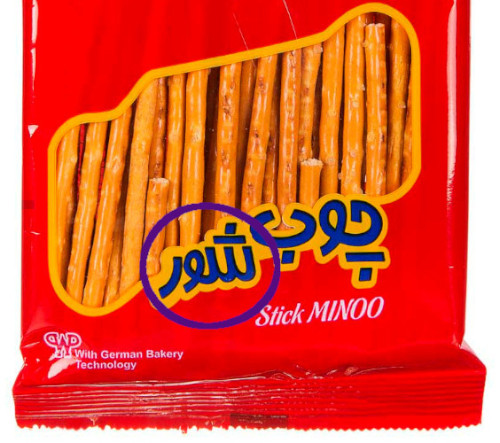
Detail from a packet of pretzel sticks, from the Iranian online store,
shahrvand.ir.
The blue lettering on the packet reads "چوب شور", chub shur,
literally "salty sticks".
Oct 23, 2023
Sow comes from Proto-Indo-European *suh₁-
(pronounced [su:], earlier [su:h]) like this (listen):
🔊 https://www.ancientsounds.net/sow-from-PIE-suH.wav
The plural swine is from suh₁-īno- [su:hi:no]:
🔊 https://www.ancientsounds.net/swine-from-PIE-suHino.wav
The derived form *suh₁-kas developed into Balochi ہوک huuk
“pig”:
🔊 https://www.ancientsounds.net/PIE-suHka-to-Balochi-huuk.wav
*suh₁- also developed into Ancient Greek ὗς [hy:s] “pig”:
🔊 https://www.ancientsounds.net/PIE-suh1-to-AncientGreek-hus.wav
Oct 30, 2023
Sow (e.g. sow seeds) comes from Proto-Indo-European *seh₁-
[se:] like this (listen):
🔊 https://www.ancientsounds.net/sow-from-PIE-seh1.wav
*seh₁- also developed into Bosnian, Croatian, Montenegrin and
Serbian sijati:
🔊 https://www.ancientsounds.net/PIE-seh1-to-BCS-sijati.wav

The heading in this image, "Kada i kako sijati grah?", means
"When and how to sow beans?" in Bosnian-Croatian-Montenegrin-Serbian.
Oct 31, 2023
Spare (meaning “extra”) comes from Proto-Indo-European *sph̥₁-ro-
[spɘro] like this (listen):
🔊 https://www.ancientsounds.net/spare-from-PIE-sph1ro.wav
*sph̥₁-ro- also developed into Sanskrit स्फिर sphira
“fat, thick”:
🔊 https://www.ancientsounds.net/PIE-sph1ro-to-Sanskrit-sphira.wav
The full form *speh₁-ro- [spɘ:ro] developed into Ancient
Greek σπαρνός sparnós "sparse":
🔊 https://www.ancientsounds.net/PIE-speh1ro-to-AncientGreek-sparnos.wav
Prosper is also from *speh₁-.
Nov 07, 2023
Spark (see also spring) comes from
Proto-Indo-European *s-pérgʰ- [spɘrgʱ], like this (listen):
🔊 https://www.ancientsounds.net/spark-from-PIE-spergh.wav
*s-pérgʰ- also developed into Pashto سپرغۍ sparghay:
🔊 https://www.ancientsounds.net/PIE-spergh-to-Pashto-sparGay.wav
The related form *pérgʰ- developed into Sanskrit पर्जन्य Parjanya,
Marathi Parzhanya “(god of) rainfall”:
🔊 https://www.ancientsounds.net/PIE-pergh-to-Marathi-ParZanya.wav
The name of Icelandic Fjörgynn, a thunder god, may be derived
from *pérgʰ-, like this:
🔊 https://www.ancientsounds.net/Icelandic-Fjorgynn-from-PIE-pergh.wav
(N.B. the usual reconstruction is *perkʷ-)
Lithuanian Perkūnas “thunder” may also be derived from *pérgʰ-:
🔊 https://www.ancientsounds.net/PIE-pergh-to-Lithuanian-Perkunas.wav

Medieval etching of the Lithuanian pagan thunder god, Perkūnas
Whether all these names are really from just one Proto-Indo-European stem is arguable, though. *pérgʰ- "sprinkle" seems right for Parjanya, because *gʰ > Sanskrit j, but the g in Fjörgynn fits the reconstruction *perkʷ-. The meaning of that stem is associated with wooded hillsides and oak trees (cf. Latin quercus), supposedly because oak trees get blasted by lightning. But ?
Nov 08, 2023
Spell comes from Proto-Indo-European *spel-o-,
like this (listen):
🔊 https://www.ancientsounds.net/spell-from-PIE-spelo.wav
*spel-o- also developed into Armenian առասպել arraspel
“myth, legend”:
🔊 https://www.ancientsounds.net/PIE-spelo-to-Armenian-arraspel.wav
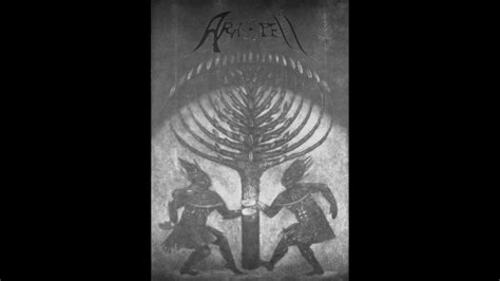
Image from the opening title from a YouTube
video of Armenian folk-rock band Araspel.
Two figures in medieval armour stand either side of a figurative tree,
above which is written "ARA - PELL" (the medial S for some reason
missing).
Nov 10, 2023
Spew comes from Proto-Indo-European *spti̯eu̯h₁- [sptju:], like this (listen):
🔊 https://www.ancientsounds.net/spew-from-PIE-sptju.wav
(Not the best, because [sptj] was hard to simulate well.)
*spti̯eu̯h₁- also developed into Persian تف [tuf] “spit”:
🔊 https://www.ancientsounds.net/PIE-sptju-to-Persian-tuf.wav
Ancient Greek πτύω [ptuo] “spit out”:
🔊 https://www.ancientsounds.net/PIE-sptju-to-AncientGreek-ptuo.wav
and English “spit”, but that's for another day.
Nov 14, 2023
Spring — to move or burst out rapidly or energetically —
comes from Proto-Indo-European *spré-n-gʰ-e-, something like
this:
🔊 spring-from-PIE-sprenghe.wav
*spré-n-gʰ-e- is derived from *sprégʰ-:
🔊 PIE-sprenghe-from-spregh.wav
*sprégʰ- is from *s-pérgʰ- [spɘrgʱ]:
🔊 PIE-spregh-from-spergh.wav
A variant, *s-prgʰ- developed into Pashto [sprəž] “blossom”:
🔊 PIE-sprgh-to-Pashto-spraZ.wav
Jan 30, 2023
Revised and posted again on March 21, 2023 (for the Spring Equinox), with the addition of Sanskrit स्फूर्ज sphurja:
Spring comes from Proto-Indo-European *spré-n-gʰ-e-,
something like this:
🔊 spring-from-PIE-sprenghe.wav
*spré-n-gʰ-e- is from *sprégʰ-
🔊 PIE-sprenghe-from-spregh.wav
a variant of *s-pérgʰ-
🔊 PIE-spregh-from-spergh.wav
*s-prgʰ-, another variant,
🔊 PIE-spergh-to-sprgh.wav
developed into Sanskrit स्फूर्ज sphurja “be eager, strive after,
desire”:
🔊 PIE-sprgh-to-Sanskrit-sphuurja.wav
and Pashto [sprəž] “blossom”
🔊 PIE-sprgh-to-Pashto-spraZ.wav
and Polish sprężyna “a (coil) spring”:
🔊 PIE-sprgh-to-Polish-sprEZyna.wav
Mar 21, 2023; Mar 4, 2024
Staff comes from Proto-Indo-European *sth₂-bʰo-
[stɐbʰo], like this (listen):
🔊 https://www.ancientsounds.net/spew-from-PIE-sptju.wav
It's one of many words from the stem *steh₂-
"stand".
*sth₂-bʰo- also developed into Persian ستبر [setabr]
“thick, stout”
🔊 https://www.ancientsounds.net/PIE-sth2bho-to-Persian-setabr.wav
Bulgarian стобор [stobor] “picket fence, paling”:
🔊 PIE-sth2bho-to-Bulgarian-stobor.wav
and Lithuanian stãbas “pole, idol” :
🔊 https://www.ancientsounds.net/PIE-sth2bho-to-Lithuanian-stabas.wav

Headline on a piece about the spelling of setabr in Iranian
online magazine https://mag.noorgram.ir. The text (in Persian)
reads "setabr or seṭabr?" and discusses which Arabic
letter should be used to write the [t] in this word.
Nov 15, 2023
Stair comes from Proto-Indo-European *stéiǵʰ-e-
"to step", like this:
🔊 https://www.ancientsounds.net/stair-from-PIE-steighe.wav
*stéiǵʰ-e- also developed into Sanskrit स्तिघ्नोति stighnoti:
🔊 https://www.ancientsounds.net/PIE-steighe-to-Sanskrit-stighnooti.wav
Ukrainian стигнути stizhnuti:
🔊 https://www.ancientsounds.net/PIE-steighe-to-Ukrainian-stignuti.wav
Bosnian dostignuti
🔊 https://www.ancientsounds.net/PIE-steighe-to-Bosnian-dostignuti.wav
and Albanian shteg “path”:
🔊 https://www.ancientsounds.net/PIE-steighe-to-Albanian-shteg.wav

Hikers walking on a narrow trail through the mountains. A caption in white text, overlaid on the photograph, reads "High Scardus Trail - Shtegu Historik i Turizmit të Aventurës", which is Albanian for "Historic Adventure Tourism Trail". From an Albanian tourism website, https://www.intoalbania.com/sq/atraksion/high-scardus-trail-shtegu-historik-i-turizmit-te-aventures/
Nov 24, 2023
Stake comes from Proto-Indo-European *s-teg-,
like this (listen):
🔊 https://www.ancientsounds.net/stake-from-PIE-steg.wav
*s-teg- is also the root of "thatch", and Sanskrit स्थगति sthagati
“to cover”:
🔊 https://www.ancientsounds.net/PIE-steg-to-Sanskrit-sthagati.wav
Sanskrit स्थग sthaga has cognates in many S. Asian languages,
e.g. Punjabi ਠੱਗ thag "cheat, rogue":
🔊 https://www.ancientsounds.net/PIE-steg-to-Punjabi-thag.wav
English "thug" is a loan from Hindi ठग ṭhag.

The roof of a reproduction Iron Age round house at the Chiltern Open
Air Museum, in the process of being thatched. The roof has a conical
shape made of stakes arranged in a circle and bound together at the
apex. Horizontal laths are added in concentric circles, and then thatch
is fixed all round the outside. Image source: https://coam.org.uk/museum-buckinghamshire/historic-buildings/iron-age-house/
Nov 27, 2023, 10:01
Like "staff", stall also comes from the
Proto-Indo-European stem *steh₂- "stand", specifically from the
form *sth₂-dʰlo- [stɐdʱlo], like this (listen):
🔊 https://www.ancientsounds.net/stall-from-PIE-sth2dhlo.wav
*sth₂dʰlo- also developed into Sanskrit and thence Hindi
स्थल sthal “floor, raised platform, hill”:
🔊 https://www.ancientsounds.net/PIE-sth2dhlo-to-Hindi-sthal.wav
(This simulation omits the final -o)

Image of mountains behind a reflective lake, with a caption in Hindi
superimposed. The caption means "Hill Stations of India", and the
rightmost word स्थल sthal means hill. Source: https://hinditutor.in/hill-stations-of-india.
Nov 17, 2023
🔊 https://www.ancientsounds.net/star-from-PIE-h2steron.wav
*h₂s-tér- also developed into Balochi اِستار [istar]:
🔊 https://www.ancientsounds.net/PIE-h2ster-to-Balochi-istar.wav
Kurmanji Kurdish [astirə]:
🔊 https://www.ancientsounds.net/PIE-h2ster-to-Kurmanji-astire.wav
Armenian աստղ [astr]:
🔊 https://www.ancientsounds.net/PIE-h2ster-to-Armenian-astR.wav
Persian ستاره [sitare]:
🔊 https://www.ancientsounds.net/PIE-h2ster-to-Persian-sitare.wav
Pashtoستوری [storai]:
🔊 https://www.ancientsounds.net/PIE-h2ster-to-Pashto-storay.wav

Astronomy picture of a star, with text, in Persian, that reads "the
strangest star in the universe". Source: https://www.youtube.com/watch?v=uBh-7VWuGYE
Nov 28, 2023
*h₂stér star > Ancient Greek ἀστήρ 🔊 PIE-h2ster-to-Ancient-Greek-aster.wav
Jun 29, 2022
Stead comes from Proto-Indo-European *sth₂-tí-
[stɐti], like this (but I omit the final vowel; listen):
🔊 https://www.ancientsounds.net/stead-from-PIE-sth2t.wav
It's one of many words from the stem *steh₂- [stɐħ] "stand".
*stéh₂-ti- also developed into Sanskrit स्थिति sthiti
“standing, residence, situation”
🔊 https://www.ancientsounds.net/PIE-steh2t-to-Sanskrit-sthiti.wav
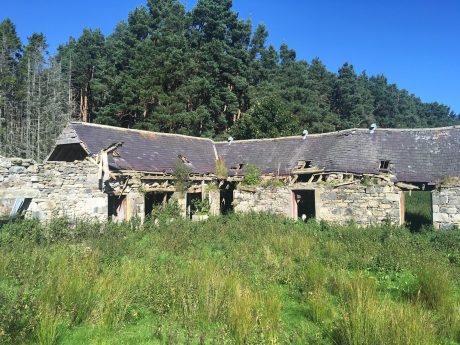
A tumble-down "steading" or farmstead building. Made of stone, and set
before some trees. Knock Steading, Tomintoul and Glenlivet, Scotland.
Source: https://www.tgdt.org.uk/digital_archive/knock-steading/
Nov 22, 2023
The verb steer comes from Proto-Indo-European *stéh₂-ur
[stɐ:r] "pole", referring to a steering pole, like this:
🔊 https://www.ancientsounds.net/steer-from-PIE-stah2ur.wav
It's one of many words from the stem *steh₂- [stɐħ]
"stand".
An earlier pronunciation of *stéh₂-ur was perhaps
[steħʊr]:
🔊 https://www.ancientsounds.net/PIE-stah2ur-from-PIE-steh2ur.wav
which developed into Persian ستون [sutuun] “column”:
🔊 https://www.ancientsounds.net/PIE-sth2ur-to-Persian-sutuun.wav

Two Indian columns, from the website of an Iranian 3D computer-aided
design company. Text at the left reads "Indian column, 3dmax model". (3d
max is the name of some 3D design software.) The middle word in
Perso-Arabic script on the next line is "sutuun", the Persian word for
column. Source: https://3dkhani.ir/
Nov 23, 2023
Summer comes from Proto-Indo-European *semh₁-
[sɘmħɐ̥], like this (listen):
🔊 https://www.ancientsounds.net/summer-from-PIE-semh2.wav
*semh₁- also developed into Sanskrit समा samaa:
🔊 https://www.ancientsounds.net/PIE-semh2-to-Sanskrit-samaa.wav
and also developed into Armenian ամառ amar:
🔊 https://www.ancientsounds.net/PIE-semh2-to-Armenian-amarr.wav

Items laid out for summer on a beach: a mat, woven basket, brim of a
sun hat, and an open book. On the sand, a starfish and a clear glass
empty bottle. The first word of the three-word Armenian caption, ամառ,
reads "amar", meaning "summer". Source:
https://blog.skill.am/file/2019/06/blog-photo.jpg
Nov 29, 2023
Sun comes from Proto-Indo-European *séh₂un-
[sɑʊɵn], like this (listen):
🔊 https://www.ancientsounds.net/sun-from-PIE-seh2un.wav
*séh₂un- is a variant of *séh₂ul-
[sɐʊɫ]. The derived form *sóh₂wl̩ [sɒʊɫ] developed into
Sanskrit स्वर् svar:
🔊 https://www.ancientsounds.net/PIE-soh2wl-to-Sanskrit-svar.wav
Urdu سورج suraj:
🔊 https://www.ancientsounds.net/PIE-soh2wl-to-Urdu-suraj.wav
and Persian خور khor “east” (e.g. Khorasan Province):
🔊 https://www.ancientsounds.net/PIE-soh2wl-to-Persian-xor.wav

The rightmost word in the Urdu caption splashed over this image is
سورج suraj. From a Pakistan news website, https://javedch.com/
Dec 04, 2023
Swan comes from Proto-Indo-European *swenh₂
[swenɐ], “to sound” (listen):
🔊 https://www.ancientsounds.net/eastern-origins/PIE-swenh2.wav
(I thus infer that swans of the PIE homeland weren't Mute swans, Cygnus
olor 🤓 )
*swenh₂ also developed into Ossetian хонын [xonɨn] “to call,
invite”:
🔊 https://www.ancientsounds.net/eastern-origins/PIE-swenh2-to-Ossetian-xonyn.wav
Latin sonō, “to sound”, is also from the same root.

Screenshot from an Ossetian language lesson, with Russian
translations, on YouTube
(https://www.youtube.com/watch?v=GG9fl7C1QiA). The title of the
lesson, in Ossetian, means “I invite you to my home”.
Apr 19, 2024
See also "answer", above.
Swear comes from Proto-Indo-European *s-wór-
“say aloud”, like this (listen):
🔊 https://www.ancientsounds.net/swear-from-PIE-swor.wav
*s-wór- also developed into Sanskrit स्वर svara “voice,
sound, vowel”:
🔊 https://www.ancientsounds.net/PIE-swor-to-Sanskrit-svara.wav
(as in the linguistics term svarabhakti, an inserted vowel),
Sanskrit स्वरति svárati, and Ukrainian свари́ти swariti
“argue, berate”:
🔊 https://www.ancientsounds.net/PIE-swor-to-Ukrainian-swariti.wav

The caption at the top of the image reads (in Ukrainian) "to
criticize, argue", the latter word being Ukrainian "svariti". From a
Ukrainian educational website https://ukr-mova.in.ua/library/frazeologizmu/krutukuvatu,-svarutu
Dec 05, 2023
Sweat comes from Proto-Indo-European *swoid-,
like this (listen):
🔊 https://www.ancientsounds.net/sweat-from-PIE-swoid.wav
*swoid- also developed into Sanskrit स्वेदते sveedate:
🔊 https://www.ancientsounds.net/PIE-swoid-to-Sanskrit-sveedate.wav
Balochi ہید hed:
🔊 https://www.ancientsounds.net/PIE-swoid-to-Balochi-hed.wav
and Iron Ossetian хид khid:
🔊 https://www.ancientsounds.net/PIE-swoid-to-Iron-xid.wav
Dec 06, 2023
Sweet comes from Proto-Indo-European *sweh₂d-u-s
[swa:dus], like this (listen):
🔊 https://www.ancientsounds.net/sweet-from-PIE-sweh2dus.wav
*sweh₂d-u-s also developed into Sanskrit स्वादु swaadu:
🔊 https://www.ancientsounds.net/PIE-sweh2dus-to-Sanskrit-swadu.wav
Balochi واد waad “salt”:
🔊 https://www.ancientsounds.net/PIE-sweh2dus-to-Balochi-waad.wav
and Latin suavis ( → English suave):
🔊 https://www.ancientsounds.net/PIE-sweh2dus-to-Latin-suavis.wav
Also Bengali স্বাদ shaad “taste”, as in the image below:

A selection of Bangladeshi snack foods, from the Facebook page of "Shaad", a snack food maker in Bangladesh.
Dec 07, 2023
Swine comes from Proto-Indo-European *suh₁-īno-
[su:hi:no], like this (listen):
🔊 https://www.ancientsounds.net/swine-from-PIE-suHino.wav
*suh₁-īno- is derived from *suh₁- “pig”
(cf. English “sow”). A derived form, *suh₁-kas,
developed into Balochi ہوک huuk:
🔊 https://www.ancientsounds.net/PIE-suHka-to-Balochi-huuk.wav
The Persian pronunciation is خوک [χu:cç]:
🔊 https://www.ancientsounds.net/PIE-suHka-to-Persian-xuuC.wav
In spite of its similarity to huuk, “hog” is unrelated.
Dec 11, 2023
Tame comes from Proto-Indo-European *dem- (or *demh₂),
like this (listen):
🔊 https://www.ancientsounds.net/tame-from-PIE-dem.wav
*dem- also developed into Persian دام dam “livestock”:
🔊 https://www.ancientsounds.net/PIE-dem-to-Persian-dam.wav
and Sanskrit दाम्यति damyati “to tame”:
🔊 https://www.ancientsounds.net/PIE-dem-to-Sanskrit-daamyati.wav

Cows feeding at a manger. From an Iranian news article about different
kinds of fodder for livestock. The final (leftmost), highlighted word in
the headline is دام "dam", meaning "livestock". Source:
https://itpnews.com/Apps/get/content.php?id=21668.
Dec 14, 2023
To tear comes from Proto-Indo-European *derH-
“tear, flay, peel”, like this (listen):
🔊 https://www.ancientsounds.net/PIE-derH-to-Persian-daridan.wav
*derH- also developed into Persian دریدن daridan:
🔊 https://www.ancientsounds.net/PIE-derH-to-Persian-daridan.wav
Balochi دِر dir:
🔊 https://www.ancientsounds.net/PIE-derH-to-Balochi-dir.wav
and Lithuanian dìrti:
🔊 https://www.ancientsounds.net/PIE-derH-to-Lithuanian-dirti.wav
Jan 05, 2024
Tell, meaning “to count”, comes via Proto-Germanic *taljan
from Proto-Indo-European *dolh₁ “to arrange in a line”:
🔊 https://www.ancientsounds.net/eastern-origins/tell-from-PIE-dolh1.wav
It's unrelated to “tally”, which is from Norman French and has a different
root.
*dolh₁ also developed into Armenian տող togh [tɔʁ] “a
line, row” (also the name of a village in Nagorno-Karabakh):
🔊 https://www.ancientsounds.net/eastern-origins/PIE-dolh1-to-Armenian-toR.wav
Apr 22, 2024
Ten comes via Old English tien and
Proto-Germanic *tehun from Proto-Indo-European *déḱm̩,
like this (listen):
🔊 https://www.ancientsounds.net/ten-from-PIE-dekm.wav
*déḱm̩ also developed into Ossetian дæс das:
🔊 https://www.ancientsounds.net/PIE-dekm-to-Digor-das.wav
Pashto لس las:
🔊 https://www.ancientsounds.net/PIE-dekm-to-Pashto-las.wav
The suffixed form *déḱm̩-t became Lithuanian dešimt:
🔊 https://www.ancientsounds.net/PIE-dekmt-to-Lithuanian-deSimt.wav
and Bosnian deset:
https://www.ancientsounds.net/PIE-dekmt-to-BCS-deset.wav
Jan 08, 2024

Jan 09, 2024
Thatch comes from Proto-Indo-European *teg-,
like this (listen):
🔊 https://www.ancientsounds.net/thatch-from-PIE-teg.wav
*teg- also developed into Latin toga “toga, covering”:
🔊 https://www.ancientsounds.net/PIE-teg-to-Latin-toga.wav
The related form *s-teg- (as in “stake”,
https://www.ancientsounds.net/#stake) developed into Ukrainian стіг stigh
“haystack”:
🔊 https://www.ancientsounds.net/PIE-steg-to-Ukrainian-stih.wav

Thatching the roof of an Iron Age roundhouse at Chiltern Open Air
Museum
Jan 10, 2024
Thin comes from Proto-Indo-European *tn̥h₂-u-
[tn̩:u], like this (listen):
🔊 https://www.ancientsounds.net/thin-from-PIE-tnh2u.wav
*tn̥h₂-u + suffix -kos also developed into
Persian تنک tunuk:
🔊 https://www.ancientsounds.net/PIE-tnh2u-to-Persian-tunuk.wav
and Balochi tanak:
🔊 https://www.ancientsounds.net/PIE-tnh2u-to-Balochi-tanak.wav
Remarkably similarly, into Bosnian tanak:
🔊 https://www.ancientsounds.net/PIE-tnh2u-to-BCMS-tanak.wav
and Bulgarian тънък tuhnuhk:
🔊 https://www.ancientsounds.net/PIE-tnh2u-to-Bulgarian-tVnVk.wav
Jan 11, 2024
Third comes from Proto-Indo-European *tri-tih₁o-
[triti:o], like this (listen):
🔊 https://www.ancientsounds.net/third-from-PIE-tritiHo.wav
*tri-tih₁o- also developed into Sanskrit तृतीय trtiya:
🔊 https://www.ancientsounds.net/PIE-tritiHo-to-Sanskrit-trtiya.wav
and Bosnian, Croatian, Montenegrin and Serbian treći:
🔊 https://www.ancientsounds.net/PIE-tritiHo-to-BCMS-treCi.wav
Similarly in e.g. Latin tertium, Lithuanian trečias,
Greek τρίτος tritos ...

Jan 12, 2024
Thirst comes from Proto-Indo-European *tr̥s-tu
like this (listen):
🔊 https://www.ancientsounds.net/eastern-origins/thirst-from-PIE-trst.wav
(I've omitted the final [u])
The related form *tr̥s-no- developed into Persian تشنگی teshne:
🔊 https://www.ancientsounds.net/eastern-origins/PIE-trsno-to-Persian-teshne.wav
and Balochi تُنَّگ tunnag “frog, thirsty one”:
🔊 https://www.ancientsounds.net/eastern-origins/PIE-trsno-to-Balochi-tunnag.wav
The stem *ters- also underlies Latin terra, "(dry)
land".

The heading, in Persian script, means "causes of excessive thirst". The word "thirst", تشنگی, teshne, is highlighted. Source: https://www.salamatnews.com/news/341384/%D8%B9%D9%84%D8%AA-%D8%AA%D8%B4%D9%86%DA%AF%DB%8C-%D8%B2%DB%8C%D8%A7%D8%AF
Jan 15, 2024
Thistle comes from Proto-Indo-European *teig,
represented here by its almost unchanged Balochi reflex تێگ teg
“sharp, razor”, like this (listen):
🔊 https://www.ancientsounds.net/eastern-origins/thistle-from-PIE-teig.wav
*teig developed into Persian (and Urdu) تیز tiiz:
🔊 https://www.ancientsounds.net/eastern-origins/PIE-teig-to-Persian-tiz.wav

Jan 18, 2024
Thorn comes from Proto-Indo-European *trno
[tr̩nõ], like this (listen):
🔊 https://www.ancientsounds.net/eastern-origins/thorn-from-PIE-trno.wav
*trno developed into Bengali তৃণ trino "grass, plant":
🔊 https://www.ancientsounds.net/eastern-origins/PIE-teig-to-Balochi-trino.wav
and also into Bosnian trn:
🔊 https://www.ancientsounds.net/eastern-origins/PIE-trno-to-Bosnian-trn.wav
Image from the Facebook page of Trino Dairy, Dhaka, Bangladesh

Image from the Facebook page of Trino Dairy, Dhaka, Bangladesh. The
Bengali word তৃণ trino is written on the sign board.
Jan 19, 2024
Thorough (here in American English) comes from
Proto-Indo-European *terh₂-kʷe [terɐ̥kwe], like this
(listen):
🔊 https://www.ancientsounds.net/eastern-origins/thorough-from-PIE-terh2kwe.wav
as does through:
🔊 https://www.ancientsounds.net/eastern-origins/through-from-PIE-terh2kwe.wav
The derived form *trh₂- [trħa] developed into Sanskrit तिरस् tiras:
🔊 https://www.ancientsounds.net/eastern-origins/PIE-trh2a-to-Sanskrit-tiras.wav
*trh₂ +suffix -nts also lies behind Latin trans:
🔊 https://www.ancientsounds.net/eastern-origins/PIE-trh2a-to-Latin-trans.wav
Jan 22, 2024
Thou, now rather restricted in its use, comes from
Proto-Indo-European *tuh₂ [tuɐ], like this (listen):
🔊 https://www.ancientsounds.net/eastern-origins/thou-from-PIE-tua.wav
*tuh₂ [tuɐ] developed into Persian تو tu:
🔊 https://www.ancientsounds.net/eastern-origins/PIE-tua-to-Persian-tu.wav
Balochi تئو tau:
🔊 https://www.ancientsounds.net/eastern-origins/PIE-tua-to-Balochi-tau.wav
Ossetian ды du ~ də:
🔊 https://www.ancientsounds.net/eastern-origins/PIE-tua-to-Iron-dE.wav
German du and French tu are also from this root.
Jan 24, 2024
Thousand comes from Proto-Indo-European *tuh₂s-dḱm̥-t,
“big hundred”, like this (listen):
🔊 https://www.ancientsounds.net/eastern-origins/thousand-from-PIE-tuh2sdkmt.wav
*tuh₂s-dḱm̥-t probably also lies behind Lithuanian tūkstantis:
🔊 https://www.ancientsounds.net/eastern-origins/PIE-tuh2sdkmt-to-Lithuanian-tukstantis.wav
The related form *tuh₂s-ont- also developed into
Croatian tisuća:
🔊 https://www.ancientsounds.net/eastern-origins/PIE-tuh2sont-to-Croatian-tisuca.wav
 |
| Above: A 1000 Litu banknote, from Lithuania. Below: (Former Yugoslavian) 1000 Dinar banknote, from 1978. |
 |
Three comes from Proto-Indo-European *trei-,
like this (listen):
🔊 https://www.ancientsounds.net/eastern-origins/three-from-PIE-trei.wav
The masculine nominative form *trei-es developed into Sanskrit
त्रयस् trayas:
🔊 https://www.ancientsounds.net/eastern-origins/PIE-treies-to-Sanskrit-trayas.wav
and Latin tres.
*trei- developed into Sindhi ٽي te:
🔊 https://www.ancientsounds.net/eastern-origins/PIE-trei-to-Sindhi-te.wav
Balochi سے se:
🔊 https://www.ancientsounds.net/eastern-origins/PIE-trei-to-Balochi-se.wav
and Romani trin:
🔊 https://www.ancientsounds.net/eastern-origins/PIE-trei-to-Romani-trin.wav
Jan 25, 2024
Older posts:
26 May 2015. Three comes from Proto-Indo-European *treyes.
Not from Spanish tres, but that's the nearest I've got. Listen:
http://www.phon.ox.ac.uk/jcoleman/three-from-treis.wav.
Here's the MP3 version: http://www.phon.ox.ac.uk/jcoleman/three-from-treis.mp3
9 June 2015 [Corrected]. *tre(ye)s has lost final [s] in Latin tres
> Italian tre, Iberian Spanish tres > American
Spanish tre http://www.phon.ox.ac.uk/jcoleman/treis-to-tre.wav.
We model the loss of final -s by a kind of fade-out rather than
an all-or-nothing deletion. This gives an intermediate stage tres
> treh.
1 July 2015. Balochi for three is [se:], from *tre(yes) via *[te:]. In this demo, [te:] is from Sindhi: http://www.phon.ox.ac.uk/jcoleman/Balochi-se-from-tre.wav. I'm quite pleased with the [s]-to-[t] transformation in this example.
Apr 30, 2019. I've been making some videos to illustrate processes of sound change using spectrograms that morph from one into another. First, here's [te] changing into [se] (which happened in Balochi): 🔊 http://phon.ox.ac.uk/jcoleman/te-to-se.mp4. See the energy rising at the left?
Thunder comes from Proto-Indo-European *tenh₂-
[tenɐ̥], like this (listen):
🔊 https://www.ancientsounds.net/eastern-origins/thunder-from-PIE-tenh2.wav
*tenh₂ also developed into Persian تندر tondar:
🔊 https://www.ancientsounds.net/eastern-origins/PIE-tenh2-to-Persian-tondar.wav
The prefixed form *s-tenh₂- [stenɐ] developed into Ancient and
Modern Greek στενάζω stenazo “groan”:
🔊 https://www.ancientsounds.net/eastern-origins/PIE-stenh2-to-Greek-stenazo.wav
and lies behind “Stentorian”, meaning “having a thundering voice”.

Screenshot from a trailer for the movie “Thor: Love and Thunder”, in
which the thunder god Thor reaches out towards his hammer. The last
(leftmost) word in the the caption below, highlighted is تندر
“tondar”, Persian for thunder. From the Persian language website https://www.aparat.com/v/R2Iwj
Jan 26, 2024
Tide comes from Proto-Indo-European *dh₂i-tí-
[dɐití]:
🔊 https://www.ancientsounds.net/eastern-origins/tide-from-PIE-dh2iti.wav
Time also comes from Proto-Indo-European *dh₂i-,
specifically *dh₂i-mon [dɐimon]:
🔊 https://www.ancientsounds.net/eastern-origins/time-from-PIE-dh2imon.wav
*dh₂i-tí- also lies behind Albanian ditë
“day”:
🔊 https://www.ancientsounds.net/eastern-origins/PIE-dh2iti-to-Albanian-dite.wav
and *dh₂i-mon developed into Kurdish dem:
🔊 https://www.ancientsounds.net/eastern-origins/PIE-dh2imon-to-Kurdish-dem.wav
“Demon” is from the same root.

The sign over this shop door in Tirana, Albania, reads “Farmaci
Ditë e Natë”, meaning “Day and Night Pharmacy” in
Albanian. From an Albanian news website,
https://www.oranews.tv/shendetesi/dite-e-nate-edhe-tek-myslym-shyri-i999052
Jan 29, 2024
(To)morrow comes from Proto-Indo-European *mrk
[mr̩:k], like this (listen):
🔊 https://www.ancientsounds.net/eastern-origins/tomorrow-from-PIE-mrHk.wav
Morn is from the same root:
🔊 https://www.ancientsounds.net/eastern-origins/morn-from-PIE-mrHk.wav
*mrk also developed into Bosnian, Croatian, Montenegrin, Serbian,
and Slovenian mrak “dark, dusk”:
🔊 https://www.ancientsounds.net/eastern-origins/PIE-mrHk-to-Bosnian-mrak.wav

Photograph of three pieces of dark baklava (in
Bosnian-Croatian-Serbian “mrak baklava”), from a recipe
website https://www.recepti.com/kuvar/kolaci/13000-mrak-baklava
Feb 02, 2024
Matt Hodgkinson @mattjhodgkinson@scicomm.xyz
commented:
Also the English word "murk"
Tongue comes from Proto-Indo-European *dnǵweh₂
[dn̩gwɐħ], like this (listen):
🔊 https://www.ancientsounds.net/eastern-origins/tongue-from-PIE-dngweh2.wav
*dnǵweh₂ also developed into Pashto ژبه zhaba (also
meaning "language"):
🔊 https://www.ancientsounds.net/eastern-origins/PIE-dngweh2-to-Pashto-Zaba.wav
Sanskrit जिह्वा jihvaa:
🔊
https://www.ancientsounds.net/eastern-origins/PIE-dngweh2-to-Sanskrit-jihvaa.wav
Romani chib:
🔊 https://www.ancientsounds.net/eastern-origins/PIE-dngweh2-to-Romani-chib.wav
Latin lingua (Old Latin dingua):
🔊 https://www.ancientsounds.net/eastern-origins/PIE-dngweh2-to-Latin-lingua.wav

The Pashto word "zhaba", written in Arabic script. From a Pashto
webpage on the topic "what is language?" https://wasiweb.com/
Feb 05, 2024
Teeth comes from Anglo-Saxon tēþ, from earlier
*[tœ:θi], from an older plural form of “tooth”, *[to:θi(z)]. Ultimately
“teeth” comes from Proto-Indo-European *h₁d-ónt-
“eater”, like this (listen):
🔊 https://www.ancientsounds.net/eastern-origins/teeth-from-PIE-h1dont.wav
Mar 08, 2024
English tooth comes from Proto-Indo-European *h₁dónt-, via Proto-Germanic *tānþ and Anglo-Saxon tōþ, something like this, listen:
🔊 http://phon.ox.ac.uk/jcoleman/PIE-h1dont-to-English-tooth.wav🔊 http://phon.ox.ac.uk/jcoleman/PIE-h1dont-to-English-tooth.mp3
Sep 18, 2020
Tooth has two slightly different proposed etymologies:
either PIE *h₁d-ónt-, “eater”, or from *h₃d-ónt-
[ɵ̥dont]. As the laryngeals are whispered, it doesn't greatly affect the
simulation (listen):
🔊 https://www.ancientsounds.net/eastern-origins/tooth-from-PIE-h1dont.wav
The stem also developed into Ancient Greek ὀδόντος odontos:
🔊 https://www.ancientsounds.net/eastern-origins/PIE-h1dont-to-AncientGreek-odontos.wav
from which English has more recently borrowed “orthodontist”.
More simulations at https://www.ancientsounds.net/eastern-origins/#tooth
Feb 06, 2024, Mar 08, 2024
Daniel @schoudaan@autistics.life commented:
It is not certain, no, as philologists differ on this point, I gather. Initial h₃ is an obvious possibility, but if it is reconstructed with h₁, the [o] in Greek would need an ad hoc explanation, such as anticipatory vowel-to-vowel coarticulation or assimilation. As a phonetician, I find that a perfectly reasonable and satisfactory explanation. But I don't feel competent (nor duty-bound) to take a stand on this question either way. Who am I to referee Ringe vs. Kroonen?
Daniel @schoudaan@autistics.life replied:
The general rule is good, and this is a rare exception. Or it might not be, if the *h₃ed- reconstruction is correct.
The general rule is motivated especially by Ancient Greek. It gets more complicated in other languages.
I am growing a webpage about it at http://www.ancientsounds.net/laryngeals.html
Tree comes from Proto-Indo-European *drew
[drəʊ], like this (listen):
🔊 https://www.ancientsounds.net/eastern-origins/eastern-origins/tree-from-PIE-drew.wav
True also comes from *drew, perhaps relating
to swearing by trees?
🔊 https://www.ancientsounds.net/eastern-origins/eastern-origins/true-from-PIE-drew.wav
As in “druid” (Proto-Celtic *druwits, “oak-knower”).
*drew is a variant of *doru:
🔊 https://www.ancientsounds.net/eastern-origins/eastern-origins/PIE-drew-to-PIE-doru.wav
that led to Balochi دار daar “wood”:
🔊 https://www.ancientsounds.net/eastern-origins/eastern-origins/PIE-doru-to-Balochi-daar.wav
*doru led to Sanskrit दारु daaru:
🔊 https://www.ancientsounds.net/eastern-origins/eastern-origins/PIE-doru-to-Sanskrit-daaru.wav
— almost the same as Proto-Celtic *daru, that developed into
Irish and Scottish Gaelic doire/Doire "oak
wood/Derry":
🔊 https://www.ancientsounds.net/eastern-origins/eastern-origins/PIE-doru-to-Irish-Doire.wav
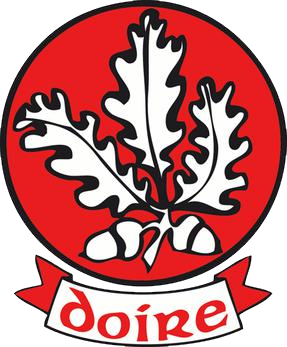
Emblem of the Derry Gaelic Athletic Association
Feb 09, 2024
Two comes (via Anglo-Saxon twa) from
Proto-Indo-European *dwóh₁- [dwoh]:
🔊 https://www.ancientsounds.net/eastern-origins/eastern-origins/two-from-PIE-dwoh1.wav
*dwóh₁- led to Pashto دوه duwa:
🔊 https://www.ancientsounds.net/eastern-origins/eastern-origins/PIE-dwoh1-to-Pashto-duwa.wav
Balochi (and Urdu) دو doo:
🔊 https://www.ancientsounds.net/eastern-origins/PIE-dwoh1-to-Balochi-doo.wav
and Romani dui:
https://www.ancientsounds.net/eastern-origins/PIE-dwoh1-to-Romani-dui.wav
More examples at http://www.phon.ox.ac.uk/jcoleman/ancient-sounds-database.html
Feb 13, 2024
Under comes from Proto-Indo-European *ndʰér,
like this (listen):
🔊 https://www.ancientsounds.net/eastern-origins/under-from-PIE-ndher.wav
*ndʰér also led to Sanskrit अधर adhara:
🔊 https://www.ancientsounds.net/eastern-origins/PIE-ndher-to-Sanskrit-adhara.wav
and also Latin infer(nus):
🔊 https://www.ancientsounds.net/eastern-origins/PIE-ndher-to-Latin-infernus.wav
Feb 19, 2024
Up comes from Proto-Indo-European *h₁upo,
like this (listen):
🔊 https://www.ancientsounds.net/eastern-origins/up-from-PIE-h1upo.wav
... from earlier *supo:
🔊 https://www.ancientsounds.net/eastern-origins/PIE-h1upo-from-PIE-supo.wav
*supo also developed into the Latin comparative super
"over":
🔊 https://www.ancientsounds.net/eastern-origins/PIE-supo-to-Latin-super.wav
*h₁upo developed into Sanskrit उप upa:
🔊 https://www.ancientsounds.net/eastern-origins/PIE-h1upo-to-Sanskrit-upa.wav
*h₁uper developed into Balochi اور awur:
🔊 https://www.ancientsounds.net/eastern-origins/PIE-h1uper-to-Balochi-awur.wav
Feb 26, 2024
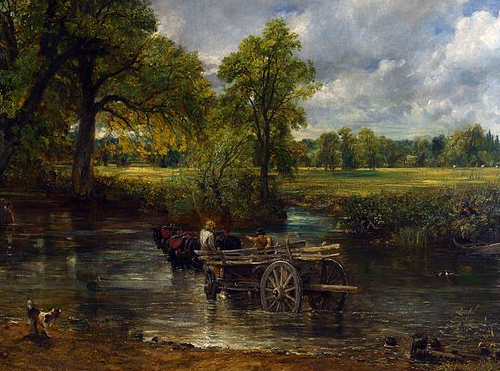 |
| Above: Detail from John Constable's painting “The Hay
Wain” (1821). Below: News report about the express train service between Sarajevo, Bosnia and Ploče, Croatia. The first word of the headline, voz, means “train” in Bosnian, Croatian, Montenegrin, and Serbian. https://www.tvsa.ba/voz-sarajevo-ploce-sarajevo-od-1-jula/ |
 |
Wake comes from Proto-Indo-European *uh₂ǵ-e-
[wagə] “to be lively, strong”, like this (listen):
🔊 https://www.ancientsounds.net/eastern-origins/PIE-uh2ge.wav
*woǵʰ-, the causative form of *uh₂ǵ-, also
developed into Sanskrit वाज vaaja “strength, vigour”:
🔊 https://www.ancientsounds.net/eastern-origins/PIE-uh2ge-to-Sanskrit-vaaja.wav
*woǵʰ- > *[woʤ] > *[wodz] > *[woz] > [buz] in
Persian بزرگ buzurg “large, big, great”:
🔊 https://www.ancientsounds.net/eastern-origins/PIE-uh2ge-to-Persian-buzurg.wav

Zeus, the tallest dog in history, as pictured in an Iranian blog post about big dogs. The caption, in Persian, just below the photograph, means “the biggest dog in the world”. The Persian word for big, buzurg, is highlighted. Source: https://petlink.ir/blog/3/the-biggest-dogs-in-the-world/
Mar 13, 2024

A jar of the Indian spice garam masala.
Mar 19, 2024
Wasp comes (via Anglo-Saxon waps) from
Proto-Indo-European *h₁wobʰ-seh₂, a form of *h₁webʰ-,
“weave”. Ignoring the -seh₂ suffix, like this (listen):
🔊 https://www.ancientsounds.net/eastern-origins/wasp-from-PIE-wobh.wav
*h₁webʰ- also developed into Balochi گْوَپت gwap
(more examples under “weave”, below):
🔊 https://www.ancientsounds.net/eastern-origins/PIE-h1webh-to-Balochi-gwap.wav
Mar 21, 2024
An experiment in non-segmental metathesis
Wasp developed from earlier waps. The apparent movement/exchange of /p/ and /s/ can be modelled as a gradual change using morphing. In this spectrographic video clip, the pale valley around t = 15 is the low-intensity [p] closure, which progressively “fills up” with sibilance, while at the same time the sibilant ridge at about t = 30 descends to a valley: the new, now later, [p] closure.
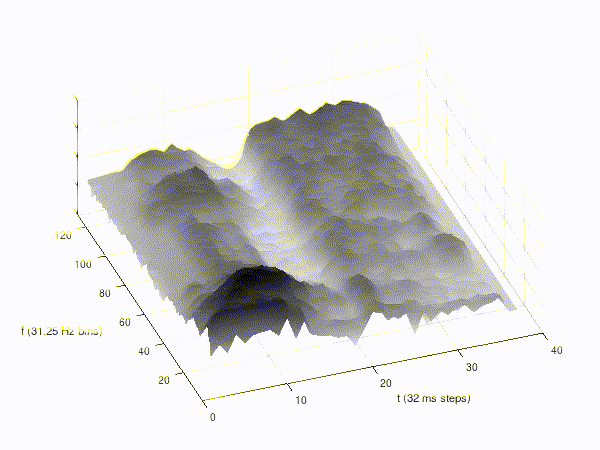
(When I click on this image, Firefox tells me “Video can't be played because the file is corrupt.”, but it's not actually corrupt: if you right-click and download the video to your local drive, it is possible to play it in other software you may have for playing videos.)
Mar 28, 2023
Water comes from Proto-Indo-European *wodr
(listen):
🔊 https://www.ancientsounds.net/eastern-origins/water-from-PIE-wodr.wav
(This *wodr is a Philadelphia English speaker saying “water” 🙂
.)
Ancient Greek ὕδωρ [hýdo:r] and Slavic вода/woda/voda
too.
*wodr was a variant of *wodn, from the root *wed:
🔊 https://www.ancientsounds.net/eastern-origins/PIE-wodr-to-PIE-wodn.wav
The derived form *wedns developed into Sanskrit उदन् udan:
🔊 https://www.ancientsounds.net/eastern-origins/PIE-wedns-to-Sanskrit-udan.wav
Mar 22, 2024
Wax (to increase) comes from Proto-Indo-European *h₂wég-s-
[ħwegs] (listen):
🔊 https://www.ancientsounds.net/eastern-origins/wax-from-PIE-h2wegs.wav
*h₂wégs- also developed into Sanskrit वक्ष् vaksh-
:
🔊 https://www.ancientsounds.net/eastern-origins/PIE-h2wegs-to-Sanskrit-vaksh.wav
and (old-fashioned) Persian وخش vakhsh:
🔊 https://www.ancientsounds.net/eastern-origins/PIE-h2wegs-to-Persian-vaxS.wav
Mar 25, 2024
We comes (via Proto-Germanic *wiz) from
Proto-Indo-European *wey, like this (listen):
🔊 https://www.ancientsounds.net/eastern-origins/we-from-PIE-wey.wav
*wey also developed into Sanskrit वयम् vayam :
🔊 https://www.ancientsounds.net/eastern-origins/PIE-wey-to-Sanskrit-vayam.wav
Mar 26, 2024
Wear comes from Proto-Indo-European *wos, like
this (listen):
🔊 https://www.ancientsounds.net/eastern-origins/wear-from-PIE-wos.wav
*wos is a form of *wes, which also developed into
Sanskrit वस्ते vaste:
🔊 https://www.ancientsounds.net/eastern-origins/PIE-wes-to-Sanskrit-vaste.wav
and Albanian vesh:
🔊 https://www.ancientsounds.net/eastern-origins/PIE-wes-to-Albanian-vesh.wav
and Latin vestis:
🔊 https://www.ancientsounds.net/eastern-origins/PIE-wes-to-Latin-vestis.wav
which was borrowed into English as vest and as the first
syllable in vestments.

Mar 27, 2024

Preview page from a Pashto skills training YouTube video (https://www.youtube.com/watch?v=2BVb2zAZo-E) about knitting and other handiwork, from Sabara Afghan Online School. I have added an ellipse around the Pashto word for knitting, obdal.
Apr 11, 2024

Persian edition of Blu-ray disk of the movie "Flight", with the Persian word for flight, پرواز parwaz, given as the title at the bottom of the image. Source: https://www.fastmovie.ir/wp-content/uploads/2021/02/Flight-2012.jpg
Apr 15, 2024
Were comes from Anglo-Saxon wæ̅re (listen):
🔊 https://www.ancientsounds.net/eastern-origins/were-from-AS-waere.wav
which is from Proto-Germanic *wēse [we:ʐə]:
🔊 https://www.ancientsounds.net/eastern-origins/ProtoGermanic-weze.wav
Ultimately, “were” is from Proto-Indo-European *h₂wés:
🔊 https://www.ancientsounds.net/eastern-origins/were-from-PIE-h2wes.wav
*h₂wés- also developed into Sanskrit सति vasati:
🔊 https://www.ancientsounds.net/eastern-origins/PIE-h2wes-to-Sanskrit-vasati.wav
and Ancient Greek ἄεσα aesa “I slept”:
🔊 https://www.ancientsounds.net/eastern-origins/PIE-h2wes-to-AncientGreek-aesa.wav
Apr 16, 2024
The were- in “werewolf” means “man/male person”, and
comes from Proto-Indo-European *wih₁ro-:
🔊 https://www.ancientsounds.net/eastern-origins/werewolf-from-PIE-wih1ro.wav
*wih₁ro- also developed into Sanskrit वीर vira,
“lord”:
🔊 https://www.ancientsounds.net/eastern-origins/PIE-wih1ro-to-Sanskrit-viira.wav
and consequently into Hindi वीर vir:
🔊 https://www.ancientsounds.net/eastern-origins/PIE-wih1ro-to-Hindi-vir.wav

Cover of a book in Hindi entitled Vir Hanuman, “Lord
Hanuman”. Hanuman is the Hindu monkey-god. Source:
https://www.exoticindia.com/book/details/veer-hanuman-mzd780/
Apr 23, 2024
“Wolf” comes from Proto-Indo-European *wĺ̥kʷ- (IPA [wl̩kʷ]):
🔊 https://www.ancientsounds.net/eastern-origins/wolf-from-PIE-wlkw.wav
*wĺ̥kʷ- also developed into:
Czech and Slovak vlk:
🔊 https://www.ancientsounds.net/eastern-origins/PIE-wlkw-to-Slovak-vlk.wav
Bosnian vuk:
🔊 https://www.ancientsounds.net/eastern-origins/PIE-wlkw-to-Bosnian-vuk.wav
Lithuanian vilkas:
🔊 https://www.ancientsounds.net/eastern-origins/PIE-wlkw-to-Lithuanian-vilkas.wav
Sanskrit वृक vrka:
🔊 https://www.ancientsounds.net/eastern-origins/PIE-wlkw-to-Sanskrit-vrka.wav
Zazaki verg:
🔊 https://www.ancientsounds.net/eastern-origins/PIE-wlkw-to-Zazaki-verg.wav
Persian گرگ gorg
🔊 https://www.ancientsounds.net/eastern-origins/PIE-wlkw-to-Persian-gorg.wav
and others ...
 |
| Cover of the childrens' book Vuk i sedam kozlića (The Wolf and the Seven Goats), from Bosnian book seller https://www.knjiga.ba |
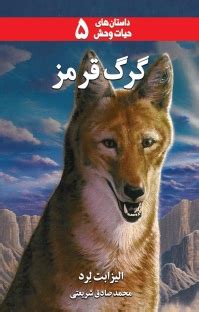  |
| Cover art and title from an Iranian book, Red Wolf (gorg qermez) |
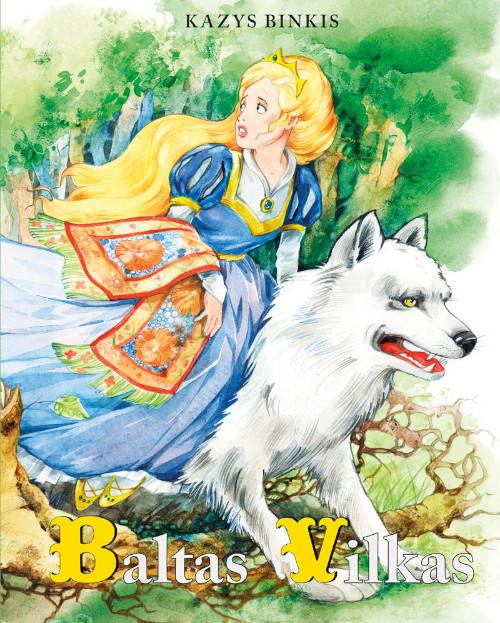 |
| Cover of Lithuanian children's book Baltas Vilkas (White Wolf) |
 |
| Cover of Czech photographic book Vlk |
Apr 24, 2024
Word comes from Proto-Indo-European *wr̥h₁t-
(listen):
🔊 https://www.ancientsounds.net/eastern-origins/word-from-PIE-wrh1t.wav
*wr̥h₁t- also developed into Sanskrit and subsequently
Hindi व्रत vrat:
🔊 https://www.ancientsounds.net/eastern-origins/PIE-wrh1t-to-Hindi-vrat.wav
*wr̥h₁t- also developed into Ancient Greek ῥητός rhetos,
the stem of the loan-word “rhetoric”:
🔊 https://www.ancientsounds.net/eastern-origins/PIE-wrh1t-to-AncientGreek-rhetos.wav
Apr 26, 2024
Work comes from Proto-Indo-European *wr̥ǵ-
(listen):
🔊 https://www.ancientsounds.net/eastern-origins/work-from-PIE-wrg.wav
*wr̥ǵ- also developed into Persian ورز varz “exercise,
trade, art, craft, agriculture”:
🔊 https://www.ancientsounds.net/eastern-origins/PIE-wrg-to-Persian-varz.wav
*wr̥ǵ- also developed into Proto-Hellenic *wergon and
then into Ancient Greek έργον ergon, the stem of the loan-word
“ergonomics”:
🔊 https://www.ancientsounds.net/eastern-origins/PIE-wrg-to-AncientGreek-ergon.wav

The Persian text below this image means “exercise for knee pain”. The
word varz, ringed in purple, means “exercise”. Source: https://drhettehadi.com/exercise-for-knee-pain/
Apr 29, 2024
Worm comes from Proto-Indo-European *kʷr̥mis.
Ignoring the final -is, like this (listen):
🔊 https://www.ancientsounds.net/eastern-origins/worm-from-PIE-kwrm.wav
*kʷr̥m- also developed into Odia କୃମି kurumi:
🔊 https://www.ancientsounds.net/eastern-origins/PIE-kwrm-to-Odia-kurumI.wav
Urdu کِرم kirm:
🔊 https://www.ancientsounds.net/eastern-origins/PIE-kwrm-to-Urdu-kirm.wav
Latvian ķirmis (which is also a good proxy for
Proto-Balto-Slavic *kírmis):
🔊 https://www.ancientsounds.net/eastern-origins/PIE-kwrm-to-Latvian-kirmis.wav
Polish czerw:
🔊 https://www.ancientsounds.net/eastern-origins/PIE-kwrm-to-Polish-czerw.wav
and Bosnian crv:
🔊 https://www.ancientsounds.net/eastern-origins/PIE-kwrm-to-BCMS-crv.wav

Headline and illustration from a Polish website about new films. The
headline means “DUNE. The director of the science fiction show talks
about designing WORMS”. The word for worm, “czerw”, is
highlighted. Source:
https://film.org.pl/news/diuna-rezyser-widowiska-science-fiction-opowiada-o-projektowaniu-czerwi-236175
Apr 30, 2024
See garden
Year comes via Anglo-Saxon ġēar from
Proto-Indo-European from *yeh₁ro, something like this
(listen):
🔊 https://www.ancientsounds.net/eastern-origins/year-from-PIE-yeh1ro.wav
*yeh₁ro developed into Bosnian jar:
🔊 https://www.ancientsounds.net/eastern-origins/PIE-yeh1ro-to-Bosnian-jar.wav
A similar outcome is also part of the Persian expression دچار doch-yar
“bad year, famine”:
🔊 https://www.ancientsounds.net/eastern-origins/PIE-yeh1ro-to-Persian-dochyar.wav
May 02, 2024
Yearning for a gift?
Yearn comes from Proto-Indo-European *ǵʰerh₁-,
something like this (listen):
🔊 https://www.ancientsounds.net/eastern-origins/yearn-from-PIE-gherh1.wav
*ǵʰerh₁- also developed into the har- in Sanskrit
हर्यति haryati, also meaning
“yearn”:
🔊 https://www.ancientsounds.net/eastern-origins/PIE-gherh1-to-Sanskrit-haryati.wav
*ǵʰerh₁- also developed into the somewhat archaic Armenian word
ձիր dzir “a gift” i.e. something wished for:
🔊 https://www.ancientsounds.net/eastern-origins/PIE-gherh1-to-Armenian-dzir.wav
May 03, 2024
“Yeast” comes from Proto-Indo-European *yest-u, something like
this (listen):
🔊 https://www.ancientsounds.net/eastern-origins/yeast-from-PIE-jestu.wav
*yest-u also developed into Persian भ्रज جوشیدن jushidan
“boil, gurgle, fizz”:
🔊 https://www.ancientsounds.net/eastern-origins/PIE-jest-to-Persian-jushidan.wav

A coffee machine with four cups of coffee. The Persian headline means "How to solve the problem of coffee boiling during preparation?" The third word from the right, with a ring around it, is jushidan "to boil". From https://ojikala.com/
May 08, 2024
See gold
Yoke comes from Proto-Indo-European *yug-o,
something like this:
🔊 https://www.ancientsounds.net/eastern-origins/yoke-from-PIE-jugo.wav
*yug-o also developed into Persian یوغ yog:
🔊 https://www.ancientsounds.net/eastern-origins/PIE-jugo-to-Persian-yog.wav
and Sanskrit योग yoga, the exercise/meditation discipline in
which people metaphorically yoke themselves to a yogi:
🔊 https://www.ancientsounds.net/eastern-origins/PIE-jugo-to-Sanskrit-yoga.wav
Also yogh, the name of the yoke-shaped Middle English letter ȝ
and IPA ʒ.
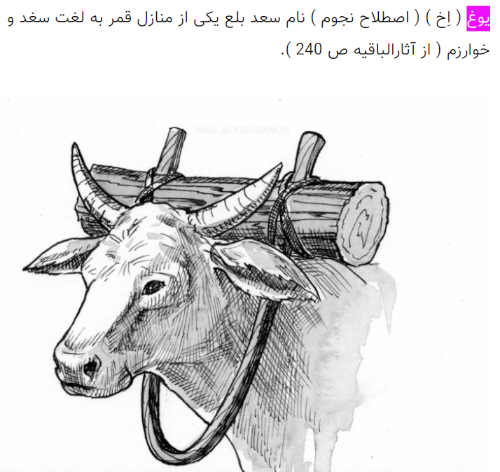 |
| An ancient kind of yoke fixed to the head of a bovine, with a Persian heading that means "Yogh (Akh) (an astronomical term) is the name of Saad Bala, one of the houses of the moon in Soghd and Khwarazm words (from Athar al-Baqiyeh, p. 240)". The word "yogh" is highlighted. |
 |
You comes from Proto-Indo-European *yu(h₁)-e
[juɦe], something like this:
🔊 https://www.ancientsounds.net/eastern-origins/you-from-PIE-juHe.wav
*yu(h₁)-e also developed into Sanskrit यूयम् yuyam
“you (plural)”:
🔊 https://www.ancientsounds.net/eastern-origins/PIE-juHe-to-Sanskrit-yuuyam.wav
and Latvian jūs:
🔊 https://www.ancientsounds.net/eastern-origins/PIE-juHe-to-Latvian-jus.wav
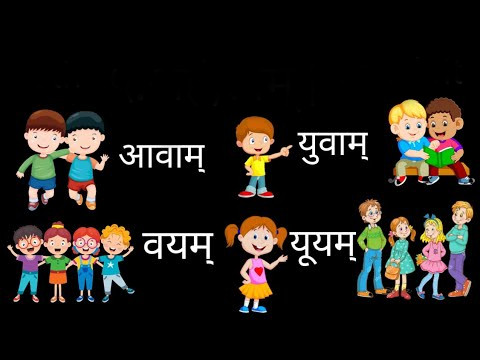
Graphic from an elementary Sanskrit lesson about pronouns. At top-left is illustrated the Sanskrit word "aavam", the dual form of "we/us". At lower left, the Sanskrit word "aayam", the plural form of "we/us". At top right, the Sanskrit word "yuvam", the dual form of "you". At bottom right, the Sanskrit word "yuyam", the plural of "you". Source: https://www.youtube.com/watch?v=ZOutP9Ykj5w
Jun 10, 2024

Prem Kumar Aparanji (@prem_k@mastodon.social) commented:
yauvan यौवन = youth & jawan जवान = young (man) in Hindi
Jun 17, 2024
| Previous: Audio Etymological Lexicon |
Next: Phonetics and Phonology of Proto-Indo-European |